Update January 10, 2024
Information for u.s. citizens in the middle east.
- Travel Advisories |
- Contact Us |
- MyTravelGov |

Find U.S. Embassies & Consulates
Travel.state.gov, congressional liaison, special issuance agency, u.s. passports, international travel, intercountry adoption, international parental child abduction, records and authentications, popular links, travel advisories, mytravelgov, stay connected, legal resources, legal information, info for u.s. law enforcement, replace or certify documents.
Before You Go
Learn About Your Destination
While Abroad
Emergencies
Share this page:
Travel Advisory January 2, 2024
Colombia - level 3: reconsider travel.
Reissued with updates to the country summary.
Reconsider travel due to crime and terrorism . Exercise increased caution due to civil unrest and kidnapping . Some areas have increased risk. Read the entire Travel Advisory.
Do Not Travel to:
- Arauca, Cauca (excluding Popayán), and Norte de Santander departments due to crime and terrorism.
- The Colombia-Venezuela border region due to crime, kidnapping, and risk of detention when crossing into Venezuela from Colombia.
Country Summary: Violent crime, such as homicide, assault, and armed robbery, is widespread. Organized criminal activities, such as extortion, robbery, and kidnapping, are common in some areas.
Terrorist groups and criminal organizations continue operating and carrying out attacks in Colombia. They may attack with little or no warning, targeting transportation hubs, markets/shopping malls, local government facilities, police stations, military facilities, hotels, clubs, restaurants, airports, other public areas, and U.S. government facilities.
Demonstrations occur regularly throughout the country and can be about a variety of political or economic issues. They can shutdown roads and highways, often without prior notice or estimated reopening timelines. Demonstrations and road closures may significantly reduce access to public transportation and may disrupt travel within and between cities. Protests can become violent and can result in fatalities and injuries.
U.S. direct-hire government employees must adhere to the noted restrictions:
- They are not permitted to travel by road between most cities.
- Colombia’s land border areas are off-limits to U.S. government personnel unless specifically authorized.
- They may not use motorcycles.
- They may not hail street taxis or use public buses.
Read the country information page for additional information on travel to Colombia.
If you decide to travel to Colombia:
- Avoid protest areas and crowds.
- Monitor local media for breaking events and adjust your plans based on new information.
- Keep a low profile.
- Be aware of your surroundings.
- Enroll in the Smart Traveler Enrollment Program (STEP) to receive Alerts and make it easier to locate you in an emergency.
- Follow the Department of State on Facebook and Twitter .
- Review the Country Security Report for Colombia.
- Prepare a contingency plan for emergency situations. Review the Traveler’s Checklist .
Arauca, Cauca, and Norte de Santander Departments – Level 4: Do Not Travel
Violent crime, including armed robbery and homicide, is widespread. Terrorist groups are active in some parts.
The U.S. government has limited ability to provide emergency services to U.S. citizens as U.S. government-personnel travel to these areas is severely restricted due to security concerns.
Colombia - Venezuela Border – Level 4: Do Not Travel
U.S. citizens are advised not to travel to the border of Colombia and Venezuela. U.S. citizens are at risk of detention when crossing into Venezuela.
The Colombia-Venezuela border is not clearly marked, and U.S. citizens should not go near the border due to the risk of crossing into Venezuela accidentally.
U.S. citizens attempting to enter Venezuela without a visa have been charged with terrorism and other serious crimes and detained for long periods. For more information, see the Venezuela Travel Advisory.
Visit our website for Travel to High-Risk Areas .
Embassy Messages
View Alerts and Messages Archive
Quick Facts
Must be valid at the time of entry and for the duration of stay.
One page required for entry stamp unless enrolled in Migración Automática, a program for frequent travelers.
Not required for stays 90 days or less.
Yellow fever vaccination is required for travelers coming from certain countries or visiting certain national parks.
10,000 USD maximum.
Embassies and Consulates
U.S. Embassy Bogota
Physical Address: Calle 24 Bis No. 48-50, Bogotá, D.C., Colombia Mailing address: Carrera 45 No. 24B-27, Bogotá, D.C. 110111, Colombia Telephone: +(57) (601) 275-2000 Emergency after-hours telephone: +(57) (601) 275-2000 and press 0 Email: [email protected]
U.S. Consular Agency Barranquilla Calle 77B No. 57-141, Suite 511 Centro Empresarial Las Americas 1, Barranquilla, Atlántico, Colombia Telephone: +(57) 605-353-2001 and +(57) 605-369-0149 Emergency after-hours telephone: +(57) (601) 275-4021 Email: [email protected]
For hours and services, please visit the U.S. Embassy Bogota website .
Destination Description
See the Department of State’s website www.state.gov for information on U.S. - Colombia relations.
Entry, Exit and Visa Requirements
Travelers must complete Migración Colombia’s Online Check-Mig Form within 72 hours of boarding an inbound or outbound flight from Colombia. There is no fee to complete the form.
All U.S. citizens who do not also hold Colombian citizenship must present a valid U.S. passport to enter and leave Colombia. U.S. citizens do not need a Colombian visa for a tourist or business stay of 90 days or less, or for cumulative stays of 180 days or less per calendar year. Before your 90-day stay expires, you may request an extension of up to 90 additional days from the Colombian immigration authority ( Migración Colombia ). You will face a fine if you remain in Colombia longer than allowed, and you may not be able to leave Colombia until the fine is paid.
Any traveler entering with a Colombian visa of any type (as opposed to visa-free entry described above) with more than three months’ validity must register the visa at a Migración Colombia office or online within 15 days of arrival in Colombia or face fines. You may be denied entry to Colombia if you do not have a return ticket. Visit the Ministry of Commerce, Industry, and Tourism website for the most current visa information.
Visit the CDC Traveler View website for vaccination information, and the Colombian Ministry of Health website for Yellow Fever vaccination requirements.
Special Entry/Exit Instructions for U.S. Citizens Born in Colombia: All Colombian citizens—regardless of dual citizenship—MUST present a valid, non-expired Colombian passport to enter and exit Colombia. Colombian citizens traveling with non-Colombian passports may be unable to depart the country until they obtain a Colombian passport.
Be aware that any person born in Colombia or of Colombian parentage may be considered a Colombian citizen, even if never documented as such.
Be aware as well that all U.S. citizens, regardless of dual citizenship, must present a valid U.S. passport upon returning to the United States. Persons who are both U.S. and Colombian citizens MUST travel between these countries with both passports, presenting the Colombian passport upon departing Colombia and the U.S. passport upon arrival in the United States.
Additional Exit Requirements for Minors: To prevent international child abduction, Colombia has implemented special exit procedures for Colombian children under 18 (including dual nationals) who depart the country alone, without both parents, or without a legal guardian. For detailed information regarding exit requirements for minors with Colombian nationality please visit Migración Colombia's website (in Spanish only).
Lost or Stolen Passport: If your U.S. passport is lost or stolen in Colombia, you must obtain a new one before leaving the country. You can report the loss or theft on the Colombian National Police website .
The U.S. Department of State is unaware of any HIV/AIDS entry restrictions for visitors to or foreign residents of Colombia.
Find information on dual nationality , prevention of international child abduction , and customs regulations on our websites.
Safety and Security
Terrorism : Terrorist groups and those inspired by such organizations are intent on attacking U.S. citizens abroad. Terrorists are increasingly using less sophisticated methods of attack – including knives, firearms, and vehicles – to more effectively target crowds. Frequently, their aim is focused on unprotected or vulnerable targets, such as:
- High-profile public events (sporting events, political rallies, demonstrations, holiday events, celebratory gatherings, etc.)
- Hotels, clubs, and restaurants frequented by tourists
- Places of worship
- Shopping malls and markets
- Public transportation systems (including subways, buses, trains, and scheduled commercial flights)
Terrorist groups and criminal organizations continue operating and carrying out attacks in Colombia.
For more information, see our Terrorism page.
Crime : Crimes and scams against tourists, and those perceived to be wealthy, are common and well-coordinated in urban areas, including in affluent neighborhoods. Firearms and knives are prevalent in Colombia and often used in muggings and robberies under the threat of violence. Drive-by motorcyclist snatchings of cell phones, bags, and valuables are extremely common. Victims are often identified well in advance of the robbery based on visible jewelry, high value wristwatches, and general attire while in public places such as shopping malls, restaurants, and airports.
Narco-trafficking groups, including the Clan del Golfo frequently engage in violence against civilians and security forces.
Dating App Robberies/Drugging/Homicides: Criminals use dating apps to lure victims to meet in places such as hotels, restaurants, and bars, and then later assault and rob them. Numerous U.S. citizens in Colombia have been drugged, robbed, and even killed by their Colombian dates. You should be cautious if using dating apps in Colombia. If meeting with a stranger, you should strongly consider meeting only in public places and avoiding isolated locations, such as residences or hotel rooms, where crimes are most likely to occur. Tell a friend or family member of your plans, including where you are going, details of the person you are meeting, and the app you used to meet them.
ATMs : There have been instances of fraudulent charges or withdrawals from accounts due to “skimmed” cards. If you choose to use credit or debit cards, you should regularly check your account to ensure there are no unauthorized transactions. Travelers should limit the amount of cash they carry in public, exercise caution when withdrawing cash from ATMs, and avoid ATMs located on the street. ATMs inside shopping malls or other protected locations are preferable.
Taxis : U.S. government employees are prohibited from hailing taxis on the street due to the risk of assault or robbery. U.S. citizens have been killed during robberies while using taxis. Use a dispatch service or cell phone app whenever possible.
Disabling Drugs : The Embassy receives regular reports of criminals using drugs to temporarily incapacitate unsuspecting victims and then rob or assault them. Scopolamine, a fast-acting incapacitating drug, is often surreptitiously applied to food, drinks, and hand sanitizer vials by criminals to rob or assault their victims. Victims of scopolamine-related crimes are often targeted in bars, night clubs, or through dating apps. Avoid leaving food or drinks unattended at a bar or restaurant, and refuse offers of something to eat or drink from a stranger.
Ayahuasca/Hallucinogens: Traditional hallucinogens, often referred to as ayahuasca, can be marketed to tourists as “spiritual cleansing,” and typically contain dimethyltryptamine (DMT), a strong psychedelic that is illegal in the United States and many other countries. Risks to hallucinogen users while intoxicated include robbery, assault, illness, or death. People claiming to be shamans or spiritual practitioners are neither licensed nor regulated.
Demonstrations : Protests and demonstrations occur frequently, particularly in Bogota. They may take place in response to political or economic issues, on politically significant holidays, and during international events.
- Demonstrations can be unpredictable; avoid areas around protests and demonstrations.
- Check local media for updates and traffic advisories.
International Financial Scams : See the Department of State and the FBI pages for information.
Internet romance and financial scams are prevalent in Colombia. Scams are often initiated through Internet postings/profiles or by unsolicited emails and letters. Scammers almost always pose as U.S. citizens who have no one else to turn to for help. Common scams include:
- Romance/Online dating
- Money transfers
- Lucrative sales
- Gold purchase
- Contracts with promises of large commissions
- Grandparent/Relative targeting
- Free Trip/Luggage
- Inheritance notices
- Work permits/job offers
- Bank overpayments
- Posing as U.S. government officials soliciting payment for services.
Victims of Crime: U.S. citizen victims of sexual assault are encouraged to contact the U.S. Embassy for assistance. Report crimes to the local police by dialing 123 and contact the U.S. Embassy at +57 (601) 275-2000 or +57 (601) 275-4021 after hours. Remember that local authorities are responsible for investigating and prosecuting crimes.
See our webpage on help for U.S. victims of crime overseas .
- Help you find appropriate medical care.
- Assist you in reporting a crime to the police.
- Contact relatives or friends with your written consent.
- Provide general information regarding the victim’s role during the local investigation and following its conclusion.
- Provide a list of local attorneys.
- Provide our information on victim’s compensation programs in the United States.
- Provide an emergency loan for repatriation to the United States and/or limited medical support in cases of destitution.
- Help you find accommodation and arrange flights home.
- Replace a stolen or lost passport.
Domestic Violence: U.S. citizen victims of domestic violence are encouraged to contact the Embassy for assistance. Help in domestic violence situations is available, in Spanish, by calling 155 (*155 from a cell phone).
Tourism : The tourism industry is unevenly regulated, and safety inspections for equipment and facilities are uncommon. Hazardous areas/activities are not always identified with appropriate signage, and staff may not be trained or certified by the government or by recognized authorities. In the event of an injury, adequate medical treatment may only be available in or near major cities. First responders may only be able to provide basic medical treatment and may be unable to access areas outside of major cities. U.S. citizens are encouraged to purchase medical evacuation insurance .
Venezuelan Border : The U.S. Department of State has categorized Venezuela as Level 4: Do Not Travel due to crime, civil unrest, poor health infrastructure, kidnapping, and the arrest and detention of U.S. citizens without due process or fair trial guarantees. U.S. citizens are at risk of detention when crossing into Venezuela from Colombia. The Colombia-Venezuela border is not clearly marked, and U.S. citizens should not go near the border due to the risk of crossing into Venezuela accidentally and being detained for illegal entry. If you still choose to travel to Venezuela, do not attempt to enter Venezuela without a visa. Visas are not available upon arrival. U.S. citizens attempting to enter Venezuela without a visa have been charged with terrorism and other serious crimes and detained for long periods. The Maduro regime does not notify the U.S. government of the detention of U.S. citizens and the U.S. government is not granted access to those citizens. The U.S. government has extremely limited ability to provide emergency services to U.S. citizens in Venezuela.
Local Laws & Special Circumstances
Criminal Penalties : You are subject to local laws. If you violate local laws, even unknowingly, you may be arrested, imprisoned, or expelled.
Individuals establishing a business or practicing a profession that requires additional permits or licensing should seek information from the competent local authorities prior to practicing or operating a business.
Customs Regulations : If you enter or exit Colombia possessing cash or other financial instruments worth more than $10,000USD, you must declare them and be able to prove the legal source of the funds. The Embassy has received reports of customs officials confiscating high-value jewelry that was not declared upon entry.
Colombian law prohibits tourists and business travelers from bringing firearms and ammunition into Colombia. Colombian law also restricts the importation of plants and animals (and some related products).
Artifacts : Colombian law forbids the export of pre-Columbian objects and other artifacts protected by cultural patrimony statutes. U.S. customs officials are obliged to seize pre-Columbian objects and certain colonial religious artwork brought into the United States.
Furthermore, some laws are also prosecutable in the United States, regardless of local law. For examples, see our website on crimes against minors abroad and the Department of Justice website.
Arrest Notification : If you are arrested or detained, ask police to notify the U.S. Embassy immediately. See our webpage for further information.
Penalties for possessing, using, or trafficking in illegal drugs in Colombia are severe, and convicted offenders can expect long pre-trial detention and lengthy prison sentences under harsh conditions. Colombian law may require that released offenders serve a lengthy period of parole in-country, during which the offender is given no housing and may lack permission to work.
Colombia uses comprehensive screening procedures to detect narcotics smuggling at its international airports. Travelers are occasionally questioned, searched, fingerprinted, and/or asked to submit to an abdominal X-ray upon arrival or departure. Most airport inspectors do not speak English.
Counterfeit and Pirated Goods : Although counterfeit and pirated goods are prevalent in many countries, they may still be illegal according to local laws. You may also pay fines or have to give them up if you bring them back to the United States. See the U.S. Department of Justice website for more information.
Faith-Based Travelers : See the following webpages for details:
- Faith-Based Travel Information
- International Religious Freedom Report – see country reports
- Human Rights Report – see country reports
- Hajj Fact Sheet for Travelers
- Best Practices for Volunteering Abroad
LGBTQI+ Travelers : Colombia has one of the strongest legal frameworks in Latin America defending the rights of LGBTQI+ people; however, in practice protections remain a long way from full enforcement and harassment persists, especially in rural areas. In many parts of Colombia, violence against trans people exceeds levels of violence against any other members of the LGBTQI+ community. Criminals do utilize dating apps to target potential victims of theft, so travelers should use caution on such apps. Certain regions, especially in rural areas, experience higher instances of harassment/violence against LGBTQI+ communities. In 2022, there was an uptick of homicides specifically targeting gay men in Medellín. LGBTQI+ associated and friendly establishments exist mostly in metropolitan areas, especially Cartagena, Medellin, and Bogota.
See our LGBTQI+ Travel Information page and section 6 of our Human Rights report for further details.
Travelers with Disabilities : The law in Colombia prohibits discrimination against persons with physical or mental disabilities, but the law is not fully enforced. Social acceptance of persons with disabilities is not as prevalent as in the United States. Many public places and transportation are not adapted to accommodate the needs of persons with disabilities. The most common types of accessible facilities may include restrooms, ramps, and elevators. Expect accessibility to be limited in public transportation, lodging, communication/information, and general infrastructure, including sidewalks, intersections, buses, and taxis. There is a significant difference between the capital (and other large cities) and the rest of the country.
Repair and replacement parts for aids/equipment/devices are available. Sign language interpreters or personal assistants are available for hire.
Students : See our Students Abroad page and FBI travel tips .
Women Travelers : See our travel tips for Women Travelers .
Cruise Ship Passengers : See our travel tips for Cruise Ship Passengers .
For emergency services in Colombia, dial 123 from any mobile phone or land line.
Ambulance services are available in larger cities, but training and availability of emergency responders may be below U.S. standards. Injured or seriously ill travelers may prefer to take a taxi or private vehicle to the nearest major hospital rather than wait for an ambulance.
We do not pay medical bills . Be aware that U.S. Medicare/Medicaid does not apply overseas. Most hospitals and doctors overseas do not accept U.S. health insurance.
Medical Insurance : Make sure your health insurance plan provides coverage overseas. Most care providers overseas only accept cash payments. See our webpage for more information on insurance coverage overseas. Visit the U.S. Centers for Disease Control and Prevention website for more information on the type of insurance you should consider before you travel overseas.
We strongly recommend supplemental insurance to cover medical evacuation.
Always carry your prescription medication in original packaging with your doctor’s prescription. Travelers can check with the Embassy of Colombia in the United States to ensure the medication is legal in Colombia.
Vaccinations : Be up-to-date on all vaccinations recommended by the U.S. Centers for Disease Control and Prevention. Visit the CDC Traveler View website for vaccination information, and the Colombia Ministry of Health website for Yellow Fever vaccination requirements. Childhood vaccinations are required by Colombian law for children ages six and under. Visit the Ministry for Health and Public Safety website for a list of required childhood vaccinations.
Further Health Information :
- World Health Organization
- U.S. Centers for Disease Control and Prevention
Air Quality : Visit AirNow Department of State for information on air quality at U.S. Embassies and Consulates.
The U.S. Embassy maintains a list of doctors and hospitals . We do not endorse or recommend any specific medical provider or clinic.
Health Facilities in General :
- Adequate health facilities are available throughout the country, but health care in rural areas may be below U.S. standards.
- Hospitals and doctors often require payment upfront prior to service or admission. Credit card payment is frequently, but not always, available.
- Medical staff may speak little or no English.
- Patients bear all costs for transfer to or between hospitals.
- Psychological and psychiatric services are limited, even in the larger cities, with hospital-based care only available through government institutions.
Medical Tourism and Elective Surgery :
- U.S. citizens have suffered serious complications or died during or after having cosmetic or other elective surgery.
- Medical tourism is a rapidly growing industry. People seeking health care overseas should understand that medical systems operate differently from those in the United States and are not subject to the same rules and regulations. Anyone interested in traveling for medical purposes should consult with their local physician before traveling and visit the U.S. Centers for Disease Control and Prevention website for more information on Medical Tourism.
- Visit the U.S. Centers for Disease Control and Prevention website for information on medical tourism, the risks of medical tourism, and what you can do to prepare before traveling to Colombia.
- We strongly recommend supplemental insurance to cover medical evacuation in the event of unforeseen medical complications or repatriation in the case of untimely death.
- Your legal options in cases of malpractice are very limited in Colombia.
- Although Colombia has many elective/cosmetic surgery facilities that are on par with those found in the United States, the quality of care varies widely. If you plan to undergo surgery in Colombia, carefully research the doctor and recovery facility you plan to use. Make sure that emergency medical facilities are available, and that professionals are accredited and qualified. Share all health information (e.g. medical conditions, medications, allergies) with your doctor before surgery.
Pharmaceuticals :
- Exercise caution when purchasing medication overseas. Pharmaceuticals, both over the counter and requiring prescription in the United States, are often readily available for purchase with little controls. Counterfeit medication is common and may prove to be ineffective, the wrong strength, or contain dangerous ingredients. Medication should be purchased in consultation with a medical professional and from reputable establishments.
- U.S. Customs and Border Protection and the Food and Drug Administration are responsible for rules governing the transport of medication back to the United States. Medication purchased abroad must meet their requirements to be legally brought back into the United States. Medication should be for personal use and must be approved for usage in the United States. Please visit the U.S. Customs and Border Protection and the Food and Drug Administration websites for more information.
- Colombia does not allow the sale of certain psychiatric medications. Travelers should carry a sufficient supply for their trips. Please review the Colombian government’s open data website for drug unavailability.
Assisted Reproductive Technology and Surrogacy :
- If you are considering traveling to Colombia to have a child through the use of assisted reproductive technology (ART) or surrogacy, please see our ART and Surrogacy Abroad page .
- Surrogacy is currently neither prohibited nor permitted under Colombian law. Although surrogacy agencies/clinics claim surrogacy is legal in Colombia, there is no legal framework for foreigners or same-sex couples to pursue surrogacy. As a result, surrogacy agreements between foreign or same sex intending parents and gestational mothers may not be enforced by Colombian courts.
Water Quality :
- In rural areas, tap water may not be potable. Bottled water and beverages are generally safe, although you should be aware that many restaurants and hotels serve tap water unless bottled water is specifically requested. Be aware that ice for drinks may be made using tap water.
Altitude :
- Many cities in Colombia, such as Bogota, are at high altitude. Be aware of the symptoms of altitude sickness and take precautions before you travel. Visit the U.S. Centers for Disease Control and Prevention website for more information about Travel to High Altitudes .
Adventure Travel :
- Visit the U.S. Centers for Disease Control and Prevention website for more information about Adventure Travel .
General Health :
The following diseases are prevalent:
- Chikungunya
- Yellow Fever
In Chocó, Nariño, and Córdoba, use the U.S. Centers for Disease Control and Prevention recommended mosquito repellents, and sleep under insecticide-impregnated mosquito nets. Chemoprophylaxis is recommended for all travelers in the Amazon region, even for short stays.
HIV/AIDS: Travelers should bring medication sufficient for their entire stay.
Visit the U.S. Centers for Disease Control and Prevention website for more information about Resources for Travelers regarding specific issues in Colombia.
Air Quality :
- Air pollution is a problem in several major cities in Colombia. Consider the impact smog and heavy particulate pollution may have on you and consult your doctor before traveling if necessary.
- Infants, children, and teens
- People over 65 years of age
- People with lung disease such as asthma and chronic obstructive pulmonary disease (COPD), which includes chronic bronchitis and emphysema
- People with heart disease or diabetes
- People who work or are active outdoors
Travel and Transportation
Road Conditions and Safety : Due to the security environment in Colombia and poor infrastructure, U.S. government employees and their families are not permitted to travel by road between most major cities. They also cannot use inter-city or intra-city bus transportation or travel by road outside urban areas at night. Follow these same precautions.
Road travel in Colombia can be dangerous, especially at night. Some roads are poorly maintained, or vulnerable to heavy rains and mudslides. Mountain roads may lack safety features such as crash barriers or guard rails, and conditions are frequently made more treacherous by heavy fog. Highways are often unmarked and unlit, and do not have signs indicating destinations. Slow-moving buses and trucks frequently stop in the middle of the road unexpectedly. In the countryside, livestock is often herded along roads or left to graze on roadsides. Due to a lack of sidewalks, roads are also used by pedestrians.
The use of motorcycles and bicycles is widespread throughout Colombia. U.S. government employees may not use motorcycles because of security concerns.
Traffic Laws : Traffic laws are often ignored and rarely enforced, creating dangerous conditions for drivers and pedestrians. Seat belts are mandatory for all passengers in a private vehicle. Car seats are mandatory for children, and a child under ten years old is not permitted to ride in the front seat. It is against the law to talk on a cellular phone while driving.
If you are involved in an accident, you MUST remain at the scene without moving your vehicle until the authorities arrive. This rule is strictly enforced and moving a vehicle or leaving the scene of an accident may constitute an admission of guilt under Colombian law.
Public Transportation : Do not hail taxis on the street. U.S. government employees may not hail street taxis or use public transportation in Colombia because of security concerns. U.S. citizens have been killed during robberies while using taxis. Use a dispatch service or transportation app whenever possible.
See our Road Safety page for more information. Visit the website of the Colombia national authority responsible for road safety, the Instituto Nacional de Vias .
Aviation Safety Oversight : The U.S. Federal Aviation Administration (FAA) has assessed the government of Colombia’s Civil Aviation Authority as being in compliance with International Civil Aviation Organization (ICAO) aviation safety standards for oversight of Colombia’s air carrier operations. Further information may be found on the FAA’s safety assessment page .
Maritime Travel : Mariners planning travel to Colombia should also check for U.S. maritime advisories and alerts . Information may also be posted to the U.S. Coast Guard homeport website and the NGA broadcast warnings .
Tourist Vessels : Exercise caution when embarked on small tourist boats off the northern coast between Cartagena and the nearby islands. During the months of December and January, the seas off the northern coast can be dangerous for small boats. U.S. citizens have died in boating accidents. Check for lifejackets and safety equipment before boarding a tourist vessel.
For additional travel information
- Enroll in the Smart Traveler Enrollment Program (STEP) to receive security messages and make it easier to locate you in an emergency.
- Call us in Washington, D.C. at 1-888-407-4747 (toll-free in the United States and Canada) or 1-202-501-4444 (from all other countries) from 8:00 a.m. to 8:00 p.m., Eastern Standard Time, Monday through Friday (except U.S. federal holidays).
- See the State Department’s travel website for the Worldwide Caution and Travel Advisories .
- Follow us on Twitter and Facebook .
- See traveling safely abroad for useful travel tips.
Review information about International Parental Child Abduction in Colombia . For additional IPCA-related information, please see the International Child Abduction Prevention and Return Act ( ICAPRA ) report.
Travel Advisory Levels
Assistance for u.s. citizens, colombia map, learn about your destination, enroll in step.

Subscribe to get up-to-date safety and security information and help us reach you in an emergency abroad.
Recommended Web Browsers: Microsoft Edge or Google Chrome.
Check passport expiration dates carefully for all travelers! Children’s passports are issued for 5 years, adult passports for 10 years.
Afghanistan
Antigua and Barbuda
Bonaire, Sint Eustatius, and Saba
Bosnia and Herzegovina
British Virgin Islands
Burkina Faso
Burma (Myanmar)
Cayman Islands
Central African Republic
Cote d Ivoire
Curaçao
Czech Republic
Democratic Republic of the Congo
Dominican Republic
El Salvador
Equatorial Guinea
Eswatini (Swaziland)
Falkland Islands
France (includes Monaco)
French Guiana
French Polynesia
French West Indies
Guadeloupe, Martinique, Saint Martin, and Saint Barthélemy (French West Indies)
Guinea-Bissau
Isle of Man
Israel, The West Bank and Gaza
Liechtenstein
Marshall Islands
Netherlands
New Caledonia
New Zealand
North Korea (Democratic People's Republic of Korea)
Papua New Guinea
Philippines
Republic of North Macedonia
Republic of the Congo
Saint Kitts and Nevis
Saint Lucia
Saint Vincent and the Grenadines
Sao Tome and Principe
Saudi Arabia
Sierra Leone
Sint Maarten
Solomon Islands
South Africa
South Korea
South Sudan
Switzerland
The Bahamas
Timor-Leste
Trinidad and Tobago
Turkmenistan
Turks and Caicos Islands
United Arab Emirates
United Kingdom
Vatican City (Holy See)
External Link
You are about to leave travel.state.gov for an external website that is not maintained by the U.S. Department of State.
Links to external websites are provided as a convenience and should not be construed as an endorsement by the U.S. Department of State of the views or products contained therein. If you wish to remain on travel.state.gov, click the "cancel" message.
You are about to visit:

© Shutterstock
Soaring Andean summits, unspoiled Caribbean coast, enigmatic Amazon jungle and cryptic archaeological ruins. Colombia boasts all of South America's allure and more.
Best Time to Visit
Best places to visit, leave the planning to a local expert.
Experience the real Colombia. Let a local expert handle the planning for you.
Attractions
Must-see attractions.
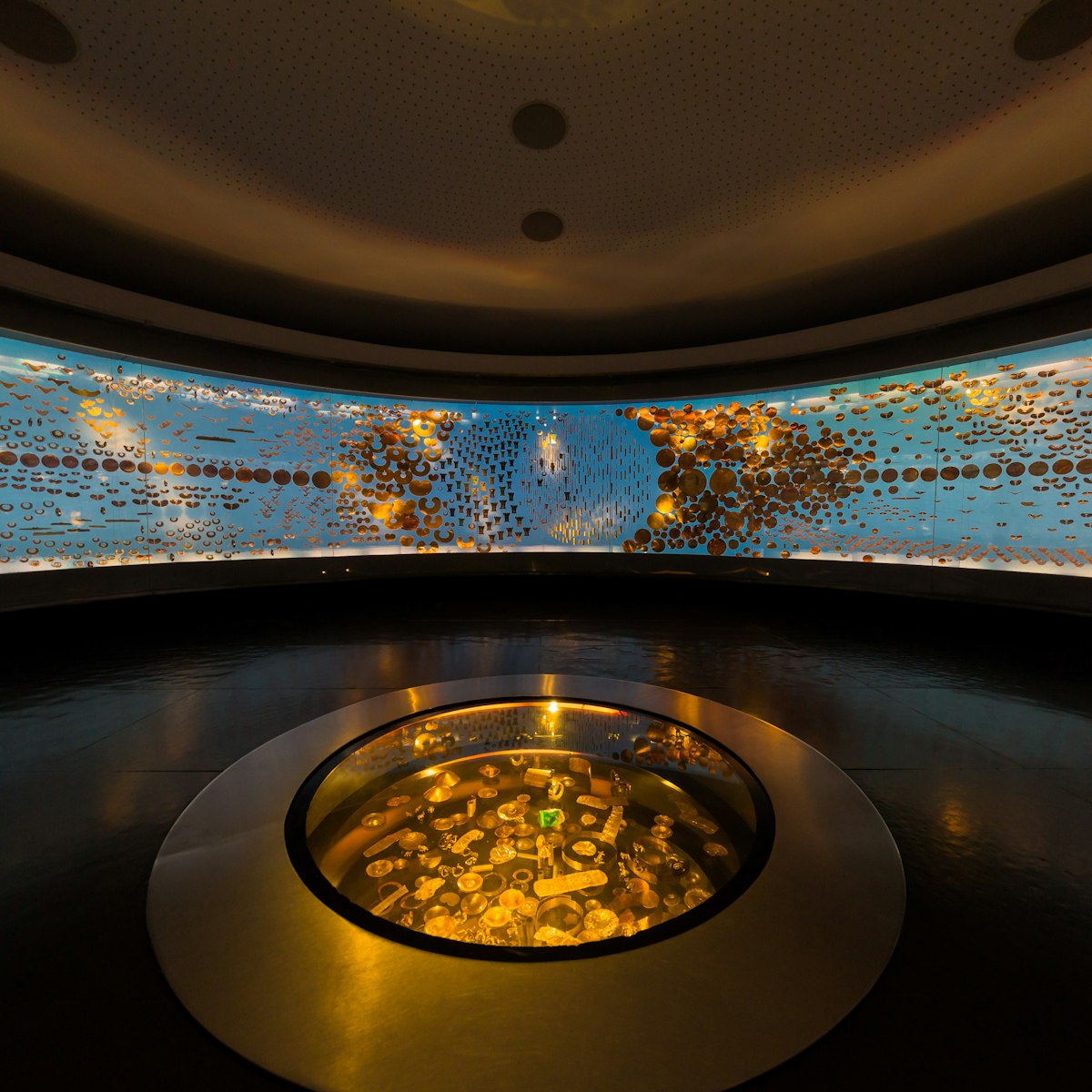
Museo del Oro
Bogotá's most famous museum and one of the most fascinating in South America, the Gold Museum contains more than 55,000 pieces of gold and other materials…
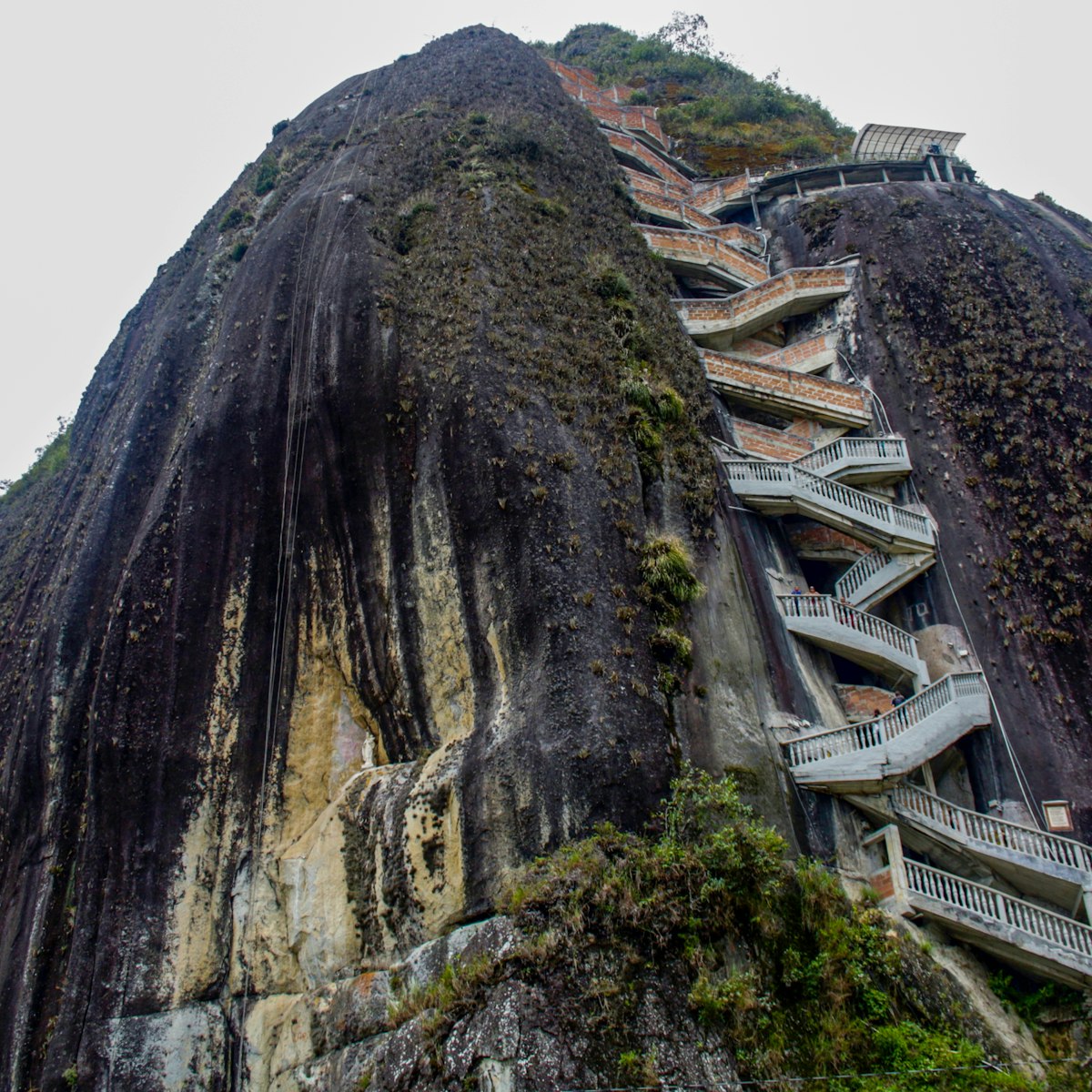
Piedra del Peñol
Also known as El Peñon de Guatapé, thanks to the fierce rivalry between the towns it straddles, this 200m-high granite monolith rises from near the edge…

Parque Arqueológico
Cauca & Huila
This 78-hectare archaeological park is 2.5km west of the town of San Agustín. There are over 130 statues in the park in total, either found in situ or…

Cartagena's old city is its principal attraction, particularly the inner walled town, consisting of the historical districts of El Centro and San Diego…

Museo Casa de la Memoria
This harrowing museum dedicated to the urban conflict in Medellín is a must-visit for travelers wanting to fully understand the city (and Colombia). There…

Parque Nacional Natural El Cocuy
One of Colombia's most spectacular national parks, PNN El Cocuy is mostly made up of a diverse ecosystem known as the páramo. This glacially formed,…
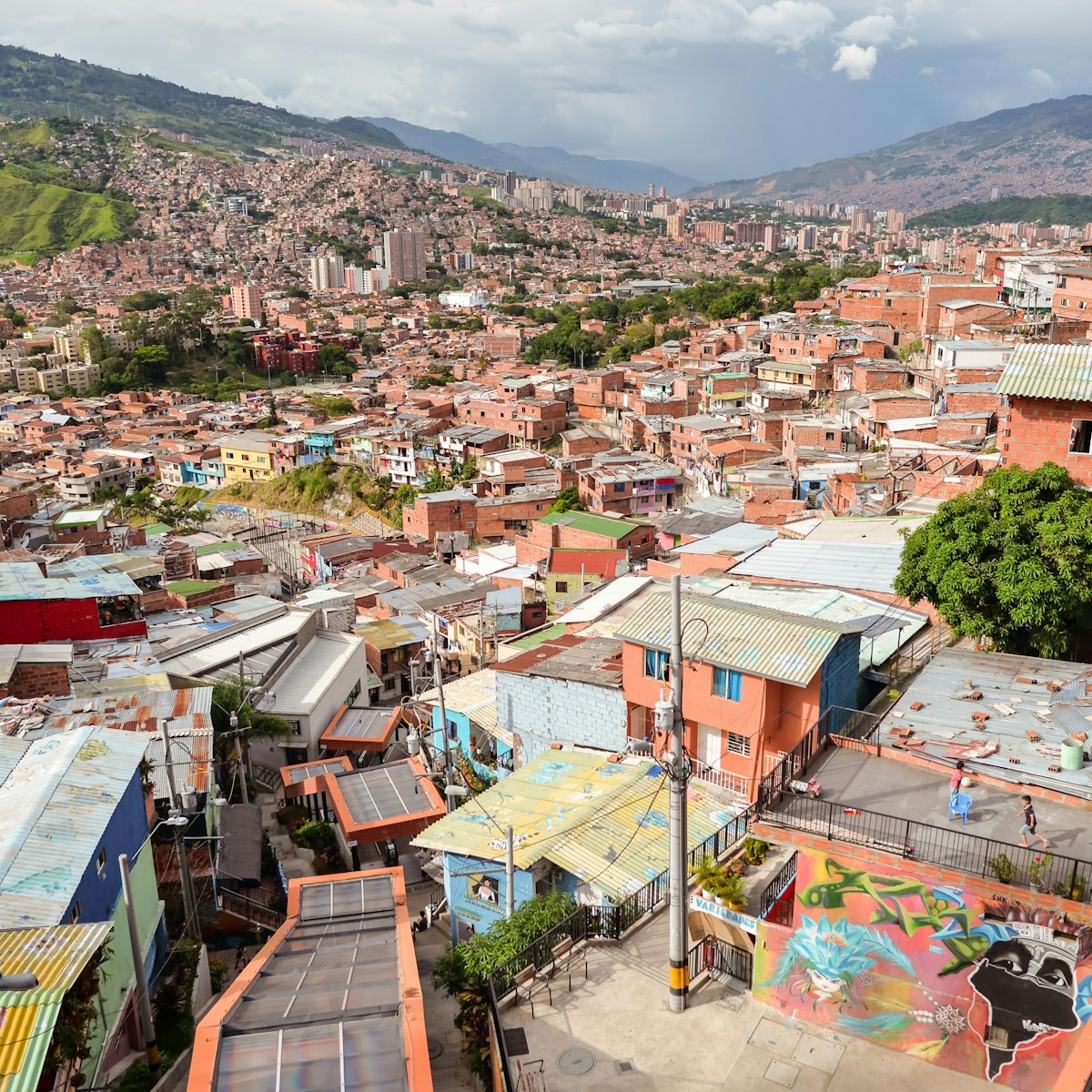
La Comuna 13
Once one of the most dangerous neighborhoods in Medellín, the Comuna 13, which clings to the mountainside above the San Javier metro station, has…
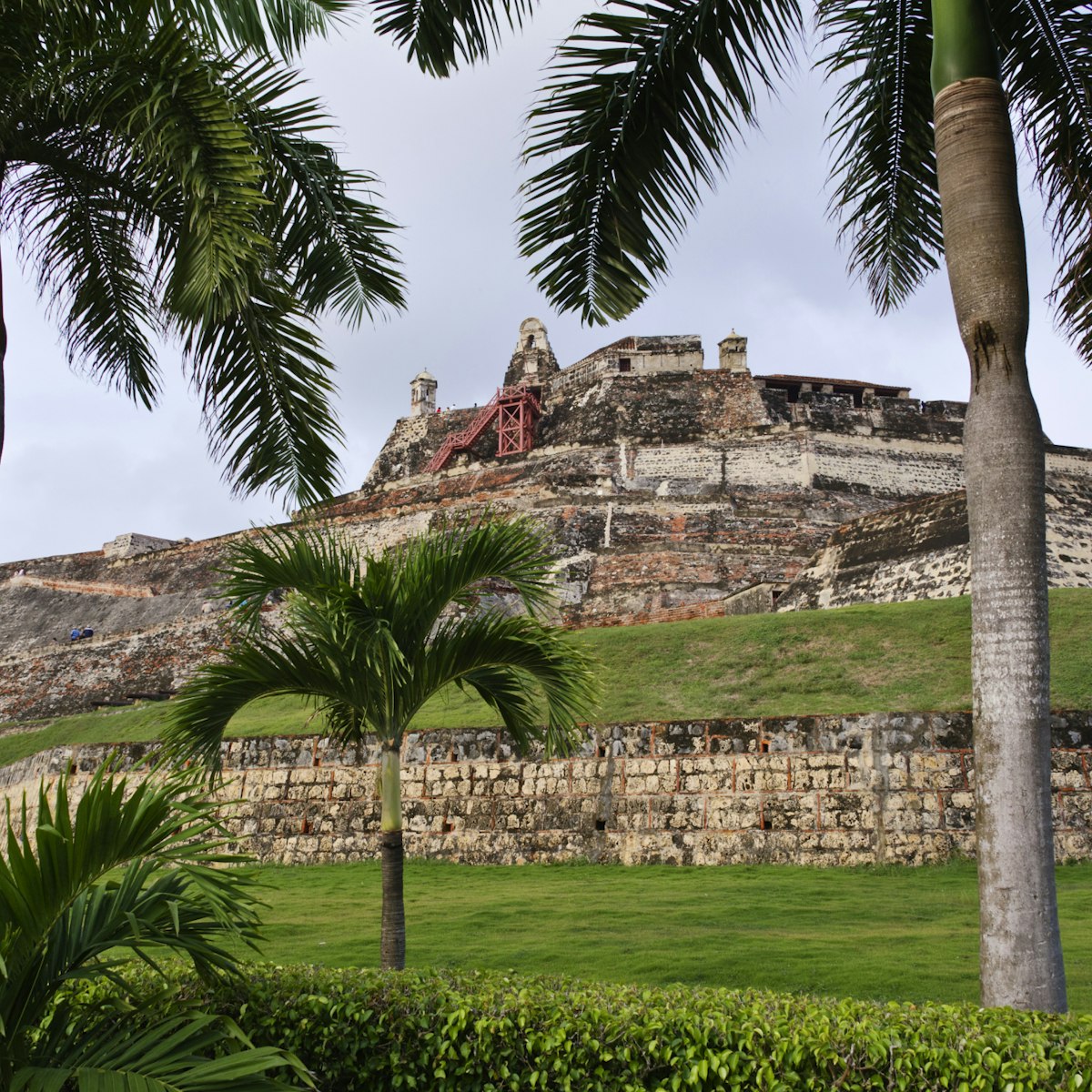
Castillo de San Felipe de Barajas
The greatest fortress ever built by the Spaniards in any of their colonies, the Castillo de San Felipe de Barajas still dominates an entire section of…
Top picks from our travel experts
14 best experiences in colombia in 2024.

Desierto de Tatacoa
Technically not a desert but a landscape of red and gray rock, sculpted by ancient waterways, the Desierto de Tatacoa is one of Colombia's most unique…
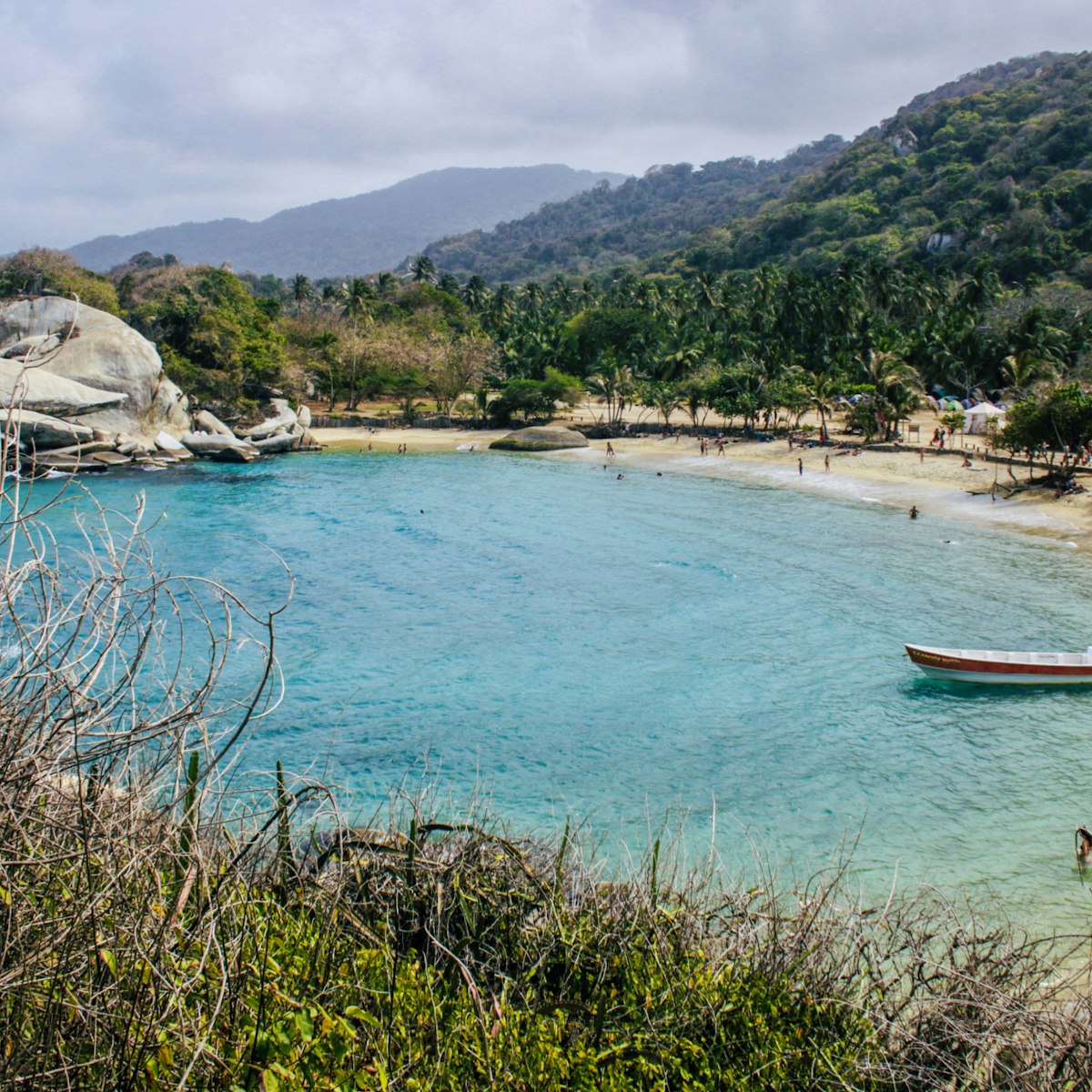
Cabo San Juan del Guía
Parque Nacional Natural Tayrona
Cabo San Juan del Guía is a beautiful cape with a knockout beach. It's also by far the most crowded area of the park, although lack of road access deters…
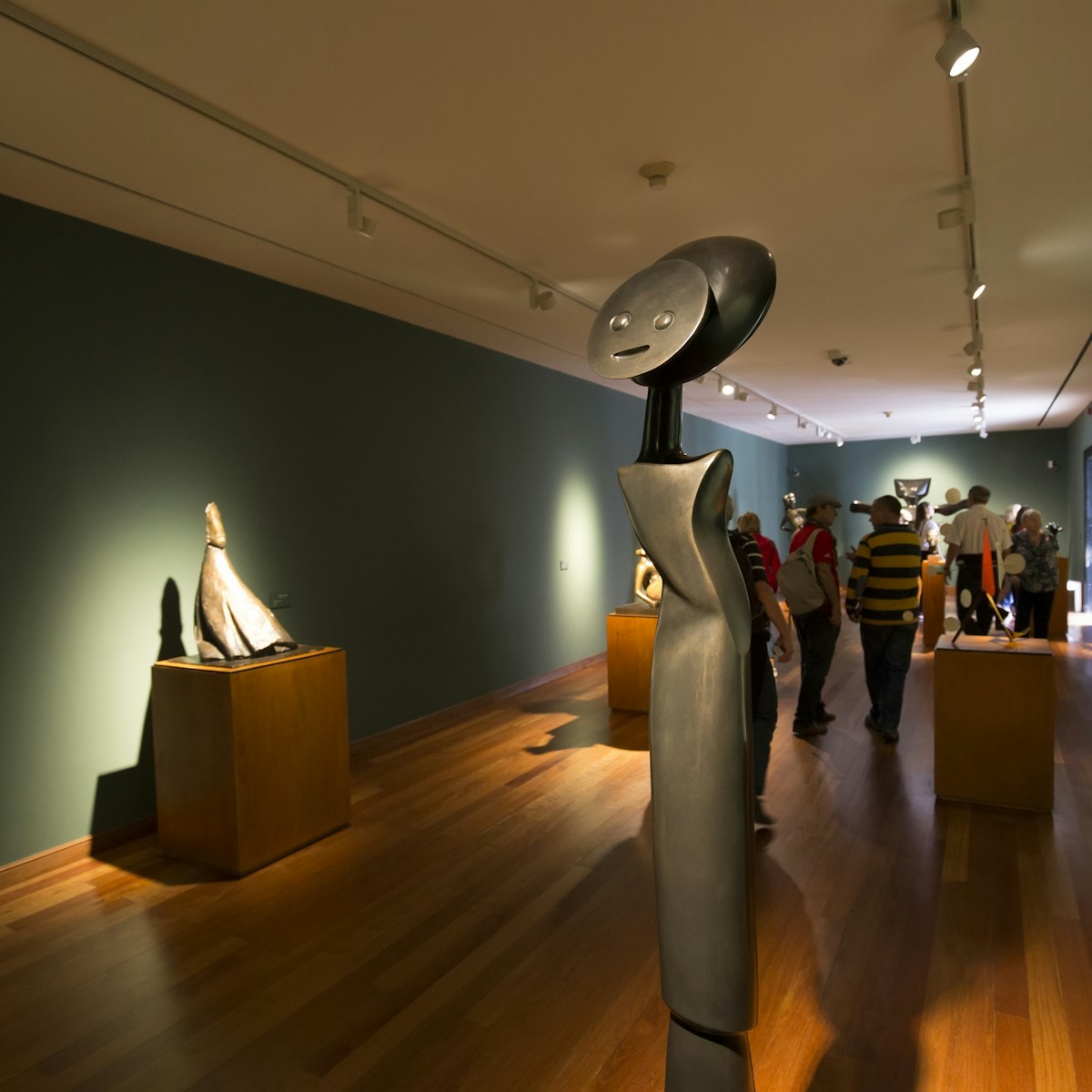
Museo Botero
Even if you've never heard of Fernando Botero, you'll probably recognize some of his highly distinctive paintings of oversized (read: chubby) characters,…

Hacienda Venecia
Zona Cafetera
This hacienda has won numerous awards for its coffee. It offers a tour in English that includes an informative presentation about Colombian coffee, an…

Topa Tolondra
Popular with locals and travelers alike, this large salsa bar near Loma de la Cruz is always buzzing. The tables are pushed right up against the walls,…
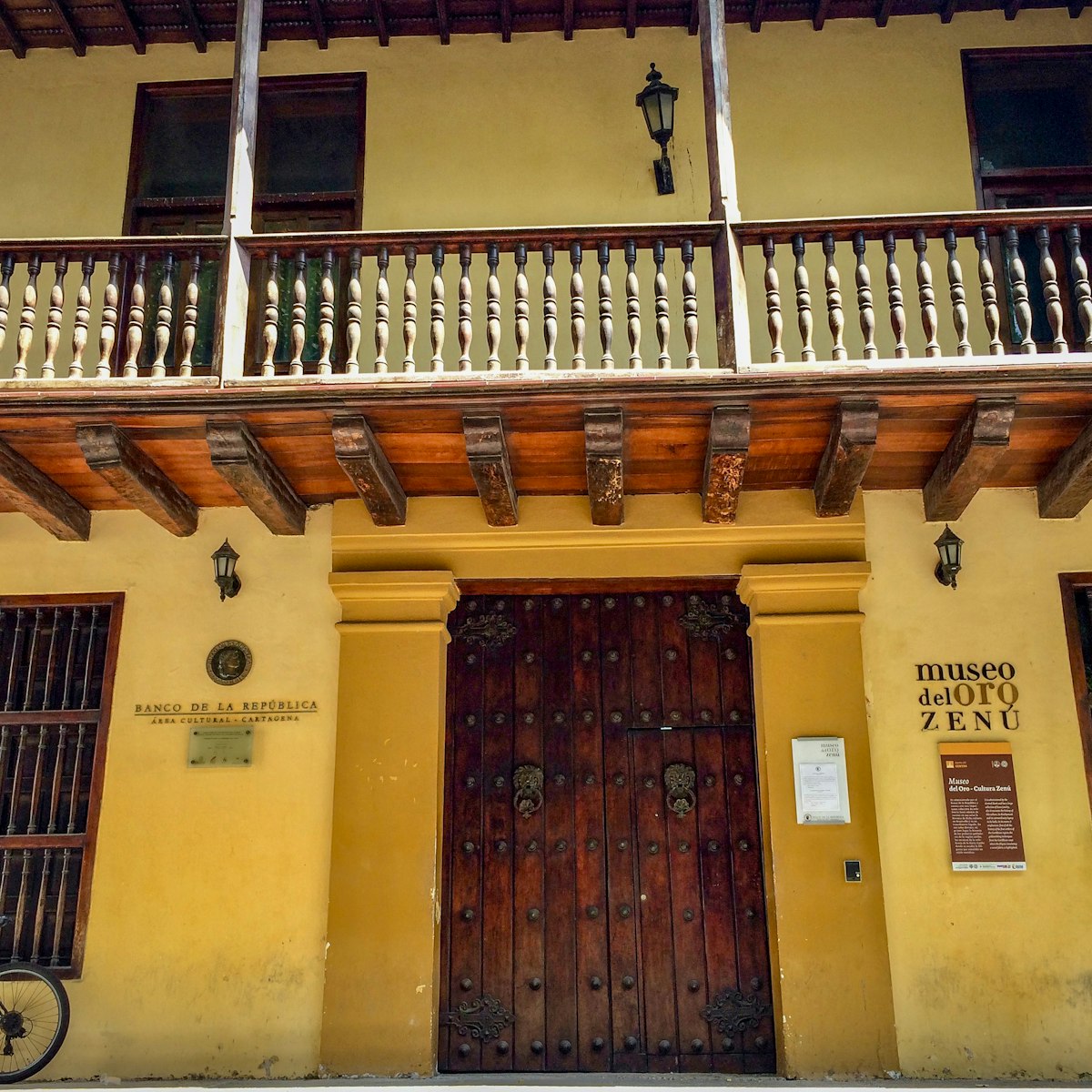
Museo del Oro Zenú
This museum is like a miniature version of Bogotá's world-class gold museum, the Museo del Oro. Though small, it offers a fascinating collection of the…

Parque Nacional Natural (PNN) Los Nevados
One of Colombia's most awe-inspiring national parks, PNN Los Nevados encompasses 583 sq km of rugged terrain in the heart of the Colombian Andes. Its…

El Cerro de Moravia
The densely populated neighborhood of Moravia was once Medellín's municipal rubbish dump with an open-air mountain of trash surrounded by a large shanty…

Observatorio Astronómico Astrosur
Former Tatacoa Observatory resident astronomer Javier Rua Restrepo now runs his own observatory around 1km further away from town. He is a dynamic teacher…

Hacienda Guayabal
This slow-paced working coffee farm near Chinchiná is a great place to come and unwind while surrounded by cafetero culture. It runs an excellent tour…

Cañaveral is as far as you can go in the park by road. From the car park a trail leads west to Arrecifes and Cabo San Juan del Guía. The beaches in…

Parque Nacional Natural (PNN) Old Providence McBean Lagoon
Providencia
To protect the unique marine life here, a 10-sq-km nature reserve in the island's northeast was established in 1995. About 10% of the park's area covers a…
Scattered across the hills around the little town of San Andrés de Pisimbalá, Tierradentro's Parque Arqueológico includes four tomb sites, an above-ground…
Planning Tools
Expert guidance to help you plan your trip.
Best Things to Do
Colombia attracts record numbers of visitors with its incredible landscapes, vibrant cities and warm welcome. These are the top 14 things to do in 2024.
Things to Know
Have an unforgettable trip to Colombia with these planning tips on everything from transport to health, safety and etiquette.
Transportation
Colombia's landscape is stunning and impressive but those features can be hard to navigate on the ground. Here's how to get around Colombia.
Visa Requirements
With its warm, welcoming atmosphere and jaw-dropping national parks and beaches, Colombia is a joy to visit, Here's what you need to know about visas.
Money and Costs
Colombia is one of the best-value destinations in South America. Stretch your cash even further with our top tips on how to visit on a budget.
Traveling with Kids
Discover the family-friendly side of Colombia with these age-appropriate destinations and activities for unforgettable vacations with kids.
Best Road Trips
From incredible mountainous landscapes to stunning uncrowded beaches, Colombia has some once-in-a-lifetime road trips. Here are 5 of the best.
Plan with a local
Experience the real Colombia
Let a local expert craft your dream trip.
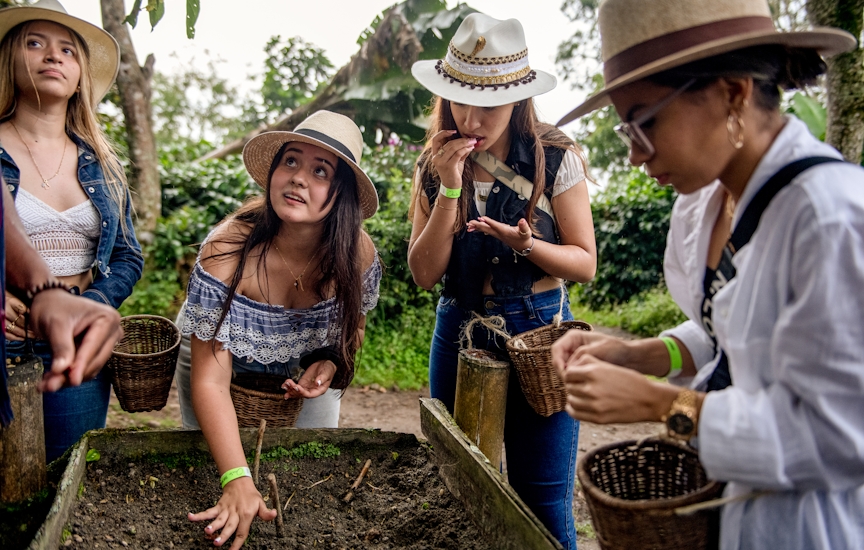
Latest stories from Colombia
Filter by interest:
- All Interests
- Adventure Travel
- Art & Culture
- Beaches, Coasts & Islands
- Food & Drink
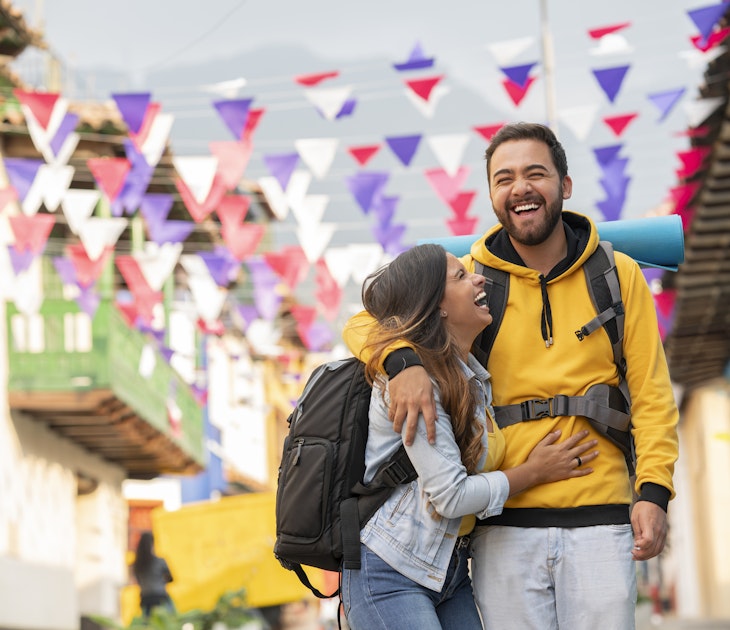
Mar 9, 2024 • 11 min read

Feb 29, 2024 • 9 min read

Feb 11, 2024 • 9 min read

Oct 2, 2023 • 8 min read

Oct 2, 2023 • 11 min read

Oct 1, 2023 • 4 min read
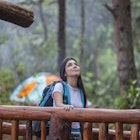
Sep 30, 2023 • 6 min read

Sep 23, 2023 • 5 min read
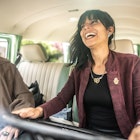
Sep 21, 2023 • 8 min read
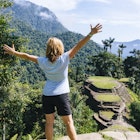
Aug 16, 2023 • 11 min read
in partnership with getyourguide
Book popular activities in Colombia
Purchase our award-winning guidebooks.
Get to the heart of Colombia with one of our in-depth, award-winning guidebooks, covering maps, itineraries, and expert guidance.
Colombia and beyond
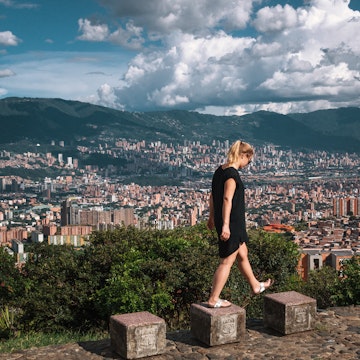
Cookies on GOV.UK
We use some essential cookies to make this website work.
We’d like to set additional cookies to understand how you use GOV.UK, remember your settings and improve government services.
We also use cookies set by other sites to help us deliver content from their services.
You have accepted additional cookies. You can change your cookie settings at any time.
You have rejected additional cookies. You can change your cookie settings at any time.
- Passports, travel and living abroad
- Travel abroad
- Foreign travel advice
Warnings and insurance
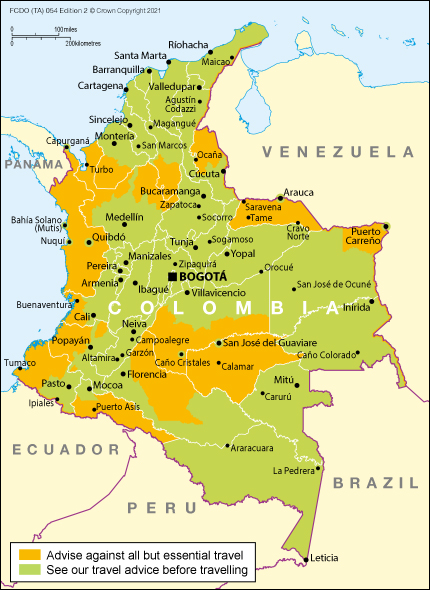
Your travel insurance could be invalidated if you travel against advice from the Foreign, Commonwealth & Development Office (FCDO).
Areas where FCDO advises against all but essential travel
Colombia-venezuela border and northern colombia .
FCDO advises against all but essential travel to:
- the Catatumbo region of Norte de Santander Department
- all of Arauca Department, except for the department capital, Arauca
- the municipality of Puerto Carreño in Vichada Department, except for the department capital, Puerto Carreño
- within 5km of the rest of the border with Venezuela, except for the city of Cúcuta
FCDO currently advises against all travel to Venezuela’s border regions with Colombia . You should not use any of the Colombia-Venezuela land crossings.
Pacific coast and Colombia-Panama border
- Chocó Department, except for the department capital Quibdó, the whale-watching towns of Nuquí and Bahía Solano and the tourist site of Capurganá
- the western part of Valle del Cauca Department, including Buenaventura
- the western part of Cauca Department
- the South Pacific, Sanquianga and Telembi regions of Nariño Department
- the southern part of Córdoba Department
- the Urabá and Bajo Cauca regions of Antioquia Department
- the southern part of Bolívar Department
Colombia-Ecuador border and southern Colombia
FCDO advises against all but essential travel to within 5km of the border with Ecuador except for:
- the border crossing on the Pan-American highway at the Puente Internacional de Rumichaca
- the city of Ipiales in Nariño Department
FCDO advises against all but essential travel to Orito, San Miguel, Valle del Guamuez, Puerto Caicedo, Puerto Guzmán, Puerto Asis and Puerto Leguizamo in Putumayo Department.
Central Colombia
- all of Guaviare Department, except for the department capital San José del Guaviare
- Cartagena del Chairá, San Vicente del Caguan, Puerto Rico, El Doncello, Paujil and La Montañita in Caquetá Department
- the Ariari region of southern Meta, except for Caño Cristales
If travelling to the tourist site of Caño Cristales, travel by air from the town of La Macarena with a reputable tour company.
Find out more about why FCDO advises against travel .
Before you travel
No travel can be guaranteed safe. Read all the advice in this guide and any specific travel advice that applies to you:
- women travellers
- disabled travellers
- LGBT+ travellers
- solo and independent travel
- volunteering and adventure travel
Travel insurance
If you choose to travel, research your destinations and get appropriate travel insurance . Insurance should cover your itinerary, planned activities and expenses in an emergency.
About FCDO travel advice
FCDO provides advice about risks of travel to help British nationals make informed decisions. Find out more about FCDO travel advice .
Follow and contact FCDO travel on Twitter , Facebook and Instagram . You can also sign up to get email notifications when this advice is updated.
Related content
Is this page useful.
- Yes this page is useful
- No this page is not useful
Help us improve GOV.UK
Don’t include personal or financial information like your National Insurance number or credit card details.
To help us improve GOV.UK, we’d like to know more about your visit today. We’ll send you a link to a feedback form. It will take only 2 minutes to fill in. Don’t worry we won’t send you spam or share your email address with anyone.
- Work With Us
- Blogging Bootcamp

- Van Conversion Academy
- Campervan Shop
- Campervan Rentals
- Plan a Trip
- Itineraries
- Destinations
- Responsible Travel
- Family Travel
- Budget Travel
- Scuba Diving
- Travel Credit Cards
- Digital Nomad
- Teach English Abroad
- Blogging Resources
- Income Reports
- Travel Shop
- Meet Katie & Ben
- About Two Wandering Soles
- Personal Stuff
- Portfolio & Press
Colombia Travel Guide

Colombia is famous for being the second most populated country in South America. Not only does it have a large population of people, but it is also home to a whopping 10% of the world’s biodiversity. Over the years, it has transformed into one of the best places to visit in South America.
From the many museums of Bogota to the beautiful beaches on the coast, Colombia has something for every kind of traveler. If you’re planning a trip to Colombia or is visiting the country on a budget, you can use the travel tips here to plan the perfect trip.
Travel Guide Contents
Important Info | Best Time to Visit | Things to Do | What to Eat | Typical Budget
Travel Tips | What to Pack | Colombia Articles | Book Now
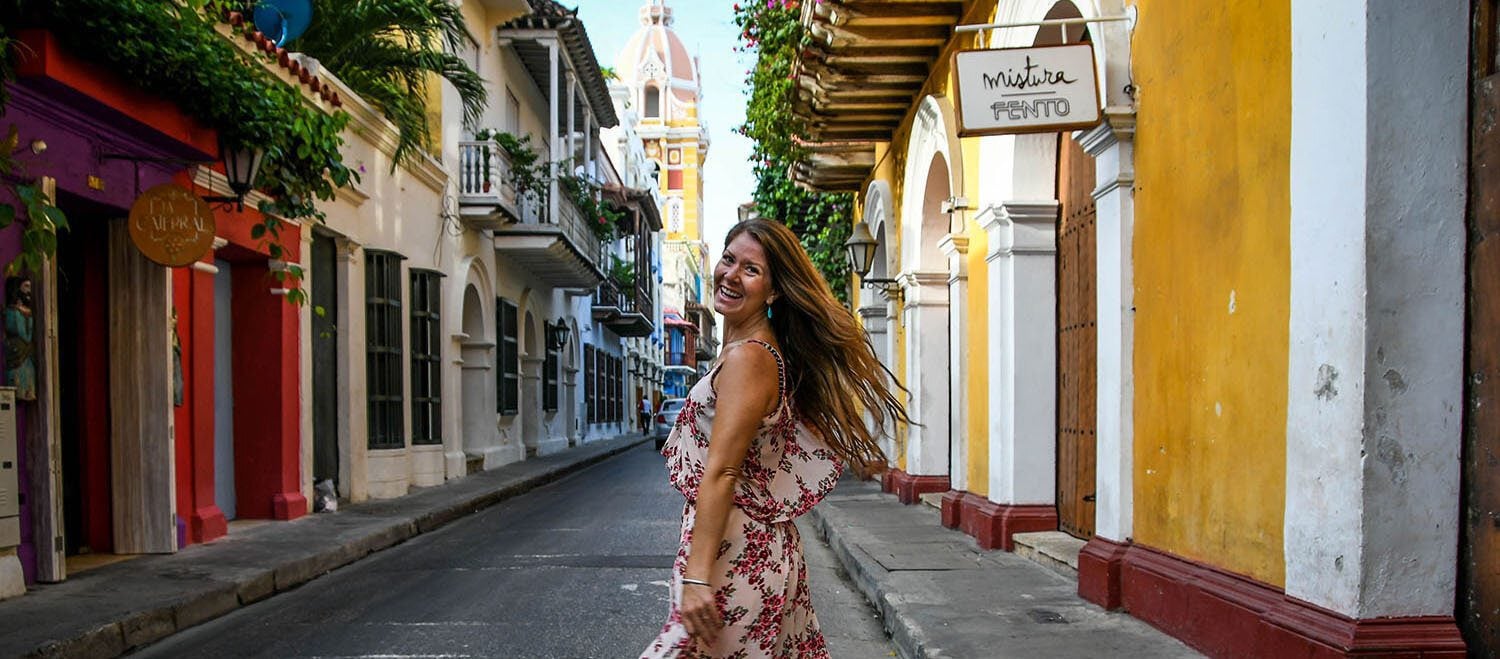
Important Information About Colombia
Colombia at a Glance: With mountains, jungle, surfing and white sand beaches, colonial architecture and bustling cities, Colombia is one of the most incredible countries around the globe. Once you step step foot here, you will find yourself falling in love with the cultural and ecological diversity.
Most popular places to visit in Colombia:
- Cartagena : Fall in love with this bustling and colorful colonial city on the Caribbean coast of Colombia.
- Cali : If you love to eat, definitely visit Cali. It’s the salsa capital of the world!
- Valle de Cocora : Is hiking what you’re into? You will be blown away by how beautiful Valle de Cocora is. It’s one of the must-hike places in Colombia.
- Salento : A coffee lover’s dream. Salento is a quaint little village situated right in the heart of Colombia’s coffee region.
Currency in Colombia: Colombian Peso | 2018 Conversion Rate: 100 COP = $0.031 USD
Tipping in Colombia: For hotels, a tip of $1 per bag for the bell boy or porter would be enough. On the other hand, a $1-2 tip for housekeeping would suffice.
Restaurants usually have a 10% voluntary tip (propina voluntaria). You’re not required to pay it but almost everybody does. This is typically shared among staff members. For tour guides, a 5 to 10% tip is enough. You are not expected to tip taxi drivers.
Language & Helpful Phrases: Spanish
- Hello = hola
- Thank you = gracias
- Beer = cerveza
- Delicious = delicioso
- Bathroom = Baño
- How much? = Cuánto cuesta?
- Too expensiv e = Muy caro
- Don’t want = No quiero
Religion and Culture: There is no official religion in Colombia but Roman Catholicism is the most common faith. The country was under the influence of Spain for around 300 years until 1819. However, the colonization has had a deep impact on the culture and religion of Colombia.
Transportation around Colombia: Riding a taxi in Colombia is cheap and convenient. In smaller towns, there are tuk-tuks and motorcycle taxis which can help you get around quicker. Buses are often crowded and slow. One of the cheapest transportation options available is colectivos – a shared hop-on-hop-off style van that usually runs in a loop. This is the primary transportation the locals use.
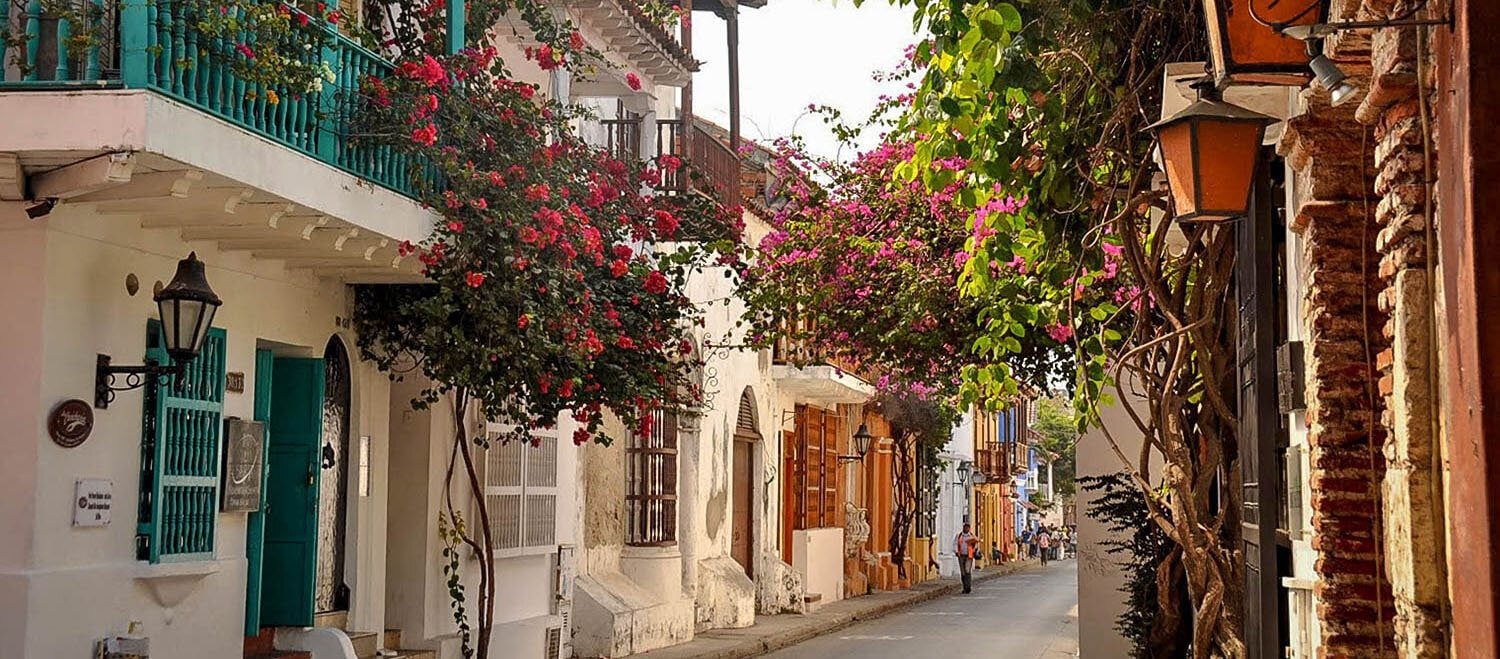
Best Time to Visit Colombia
Climate in colombia.
Colombia has stable temperatures all year round because of its proximity to the equator. Depending on the season, the country will experience some rainfall.
- Dry season: December to March and July to August (Andean region)
- Rainy season: May to July and October to December (Andes), September to October (Carribean coast)
Peak season for tourists is December through February and the week before the Easter holiday known as Semana Santa. This is when prices are at their highest.
Times to avoid traveling in Colombia:
If you are on a budget, avoid traveling to Colombia during the Semana Santa. Most hotels double their rates as it is one of the peak seasons for tourists.
Major Festivals in Colombia
- Carnaval de Barranquilla , occurs in the days leading up to Lent: This is the second largest carnival celebration around the world. It is celebrated four days before Ash Wednesday.
- Festival de las Flores , the first two weeks of August: During this festival, you will see a lot of flowers especially during the “El Defile de Los Silleteros” parade.
- Festival Iberoamericano de Teatro , before and during Semana Santa: As one of the biggest performing festivals around the world, you can expect some performing arts presentations, street performances, plays, concerts, interpretative dances and conferences.
*These festivals follow the Lunar calendar, so the exact dates vary each year
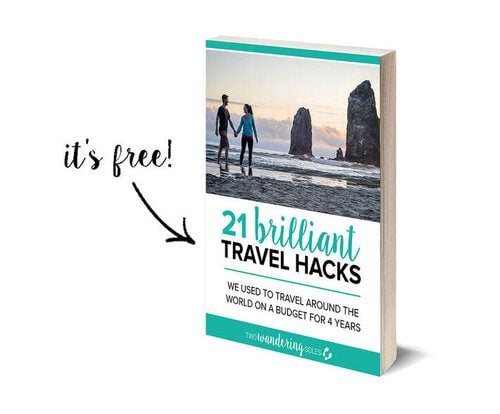
FREE e-Book
We Traveled the World for 4 years on a Budget with these 21 Brilliant Travel Hacks!
[30 pages, money-saving trips, and 100% FREE]
Get your copy NOW!
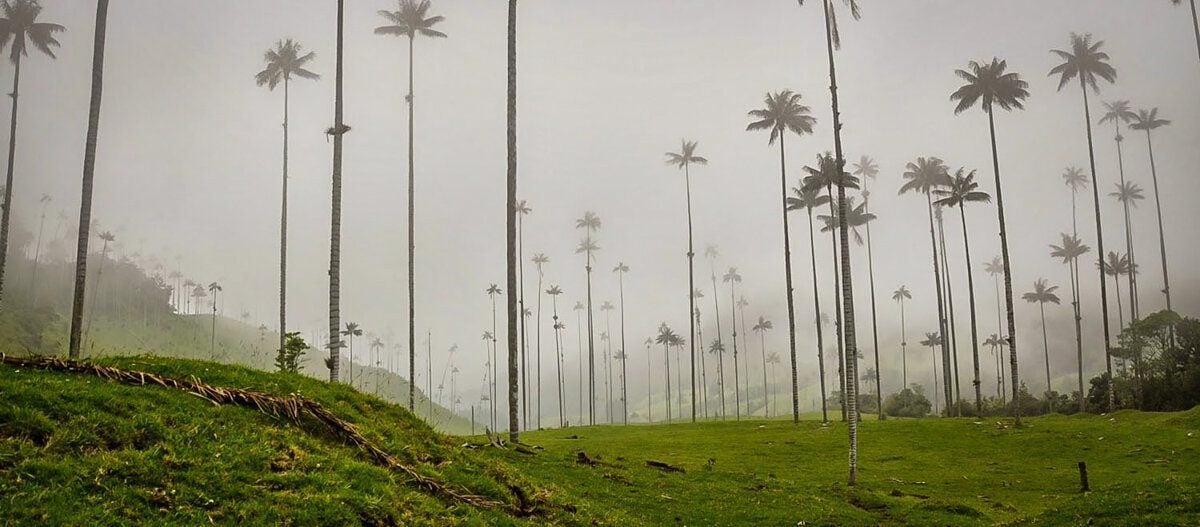
Top Things to Do in Colombia
Hike pico de loro.
If you’re in Cali, the Pico de Loro is one of the most recommended hikes. You can either go on a day trip or a 2-day hike. Be sure to arrive early since the amount of people allowed to hike per day is limited.
Visit a Coffee Farm
Attention coffee addicts! Coffee is one of the main exports of Salento. Enjoy your favorite beverage by visiting a coffee farm. You can even pick your own beans and make your own coffee! How cool is that?
Go on a walking tour of the Old City
Get lost in the beautiful plazas and colorful doors of Cartagena. You can either join a free walking tour or create your own by following the tips in this guide .
Check out Volcan del Totumo
Have fun and let loose at this faux volcano. Get a muddy massage or get bathed by local women. It’s your choice, or you can always do both. Come prepared to laugh and giggle a lot while covered in mud!
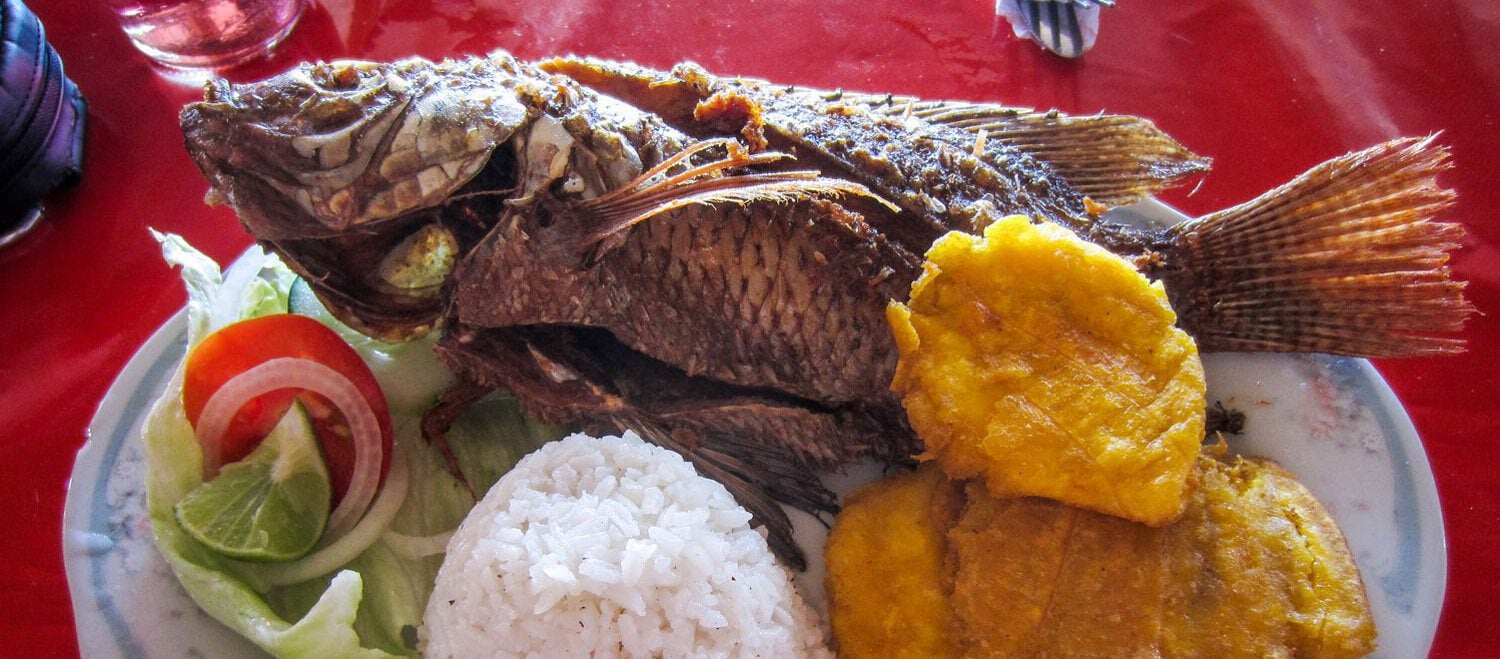
Foods to Eat in Colombia
Packed with flavor, Colombian cuisine is a blend of indigenous and European ingredients including corn, beans, chicken potatoes, pork, and rice. A lot of Colombian dishes are worth trying.
Here are some of our favorites:
- Arepa: The most commonly served food in the country, arepa is made from cornmeal and usually served with corn or butter.
- Ajiaco: This is a popular soup that contains chicken, three kinds of potato, avocado, corn, capers, and sour cream.
- Lechona: Often served as a specialty, lechona is a roasted pig stuffed with peas, onions, rice, and spices.
- Fritanga: Another meat-filled dish, fritanga is a plate full of grilled meat and fried cow intestines. It is often served with plantain, manioc or arepas.
- Empanadas: This is a great snack that can be found all around South America. The dish’s origin goes back to Portugal and Spain. These are usually fried and contain several fillings.
- Churros: One of the most popular Colombian breakfast are churros. These are long pieces of fried dough. It is often served with egg, sausage, arepa, beef and hot chocolate.
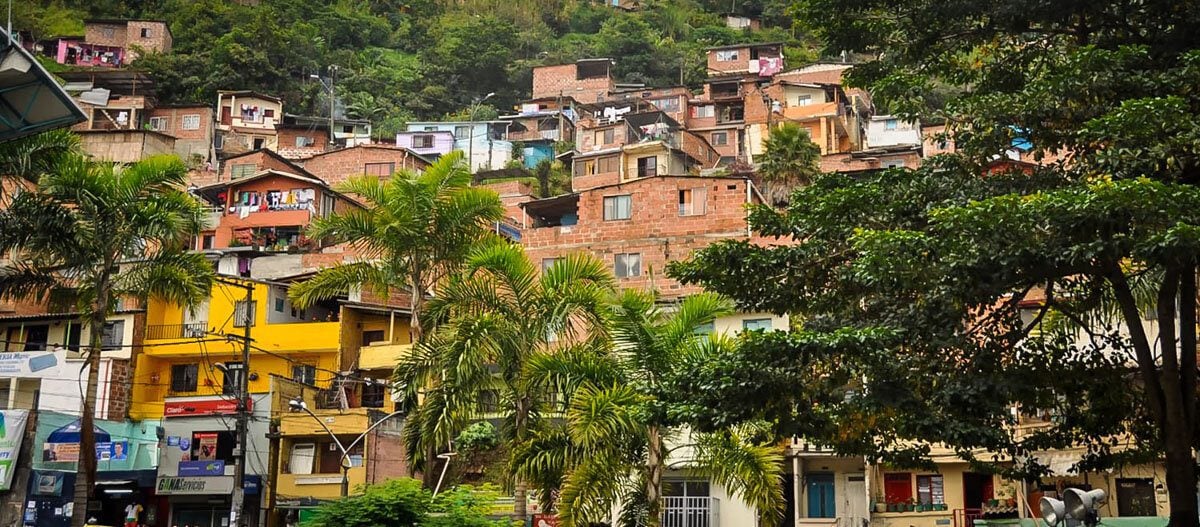
Typical Budget for Colombia
When it comes to costs, Colombia is on the average side for South American countries. It is more expensive compared to Peru and Ecuador, but it is way cheaper than most countries around the world.
Good to know: Don’t be afraid to negotiate. However, don’t haggle too much. A small amount may not mean much to you, but it could make a big difference to the vendor.
How Much to Budget in Colombia Per Day
Budget traveler: If you are on a tight budget and watch your spending closely, $28 – $30 could be a sufficient budget.
Mid-range traveler: If you want to have a few splurges and stay in nicer accommodation, plan to budget $40 – $60 per day.

Dorm bed = $6-$14
Budget room = $11-$44
Mid-range = $45-$60
Luxury hotel = $60+

Street food = $1+
Mid-range restaurant = $3-$5.50
Fancy restaurant = $11-$17
Local beer = $0.85

City buses = $0..65-$1
City taxi = $2.30-$5.50
Regional buses = $5.50-$11
Domestic flights = $55+

Palace of Inquisition = $6
Bike Rental = $1.55
Coffee Plantation Tour = $5
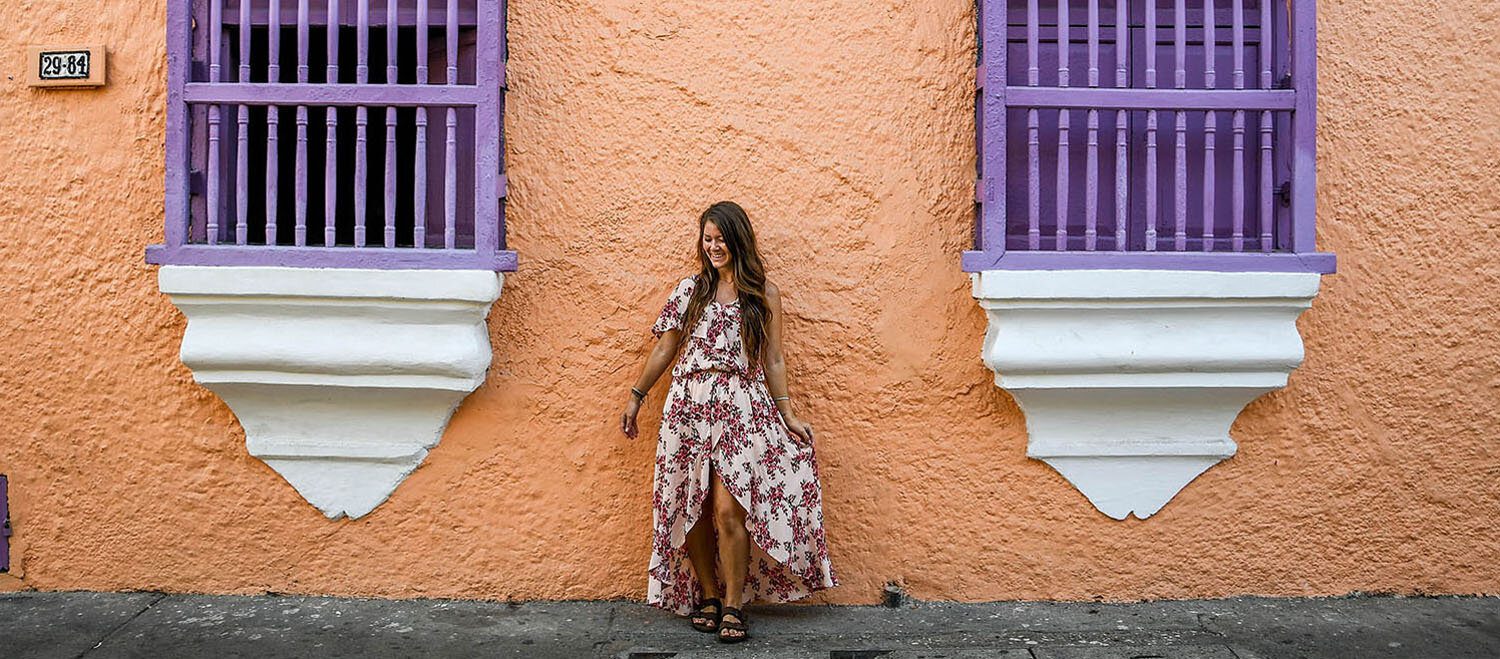
Responsible Travel Tips for Colombia
We are passionate about sharing tips anyone can use to travel more responsibly. Here are some easy ways you can travel better in Colombia.
1. Cut out plastic
Make it a habit to remove and recycle plastic packaging of things you buy. Also, bring an eco bag for your shopping and politely refuse plastic bags at markets and shops.
2. Support locally-owned businesses
Try the local cuisine, brews and brands. Check out the locally-owned shops in the marketplace and support their crafts.
3. Bring rechargeable batteries
Disposable batteries leach toxic chemicals when they degrade. Often, these things are not recycled. Help the environment and be responsible by using rechargeable batteries.
4. Do your research
Cultural differences can make traveling confusing if you don’t know what to expect ahead of time. For example, there are certain hand gestures that may be considered impolite in another region of the world. Beyond this travel guide, read about the country’s culture, religion, language and rules before your trip.
5. Keep an open mind
In a new place, it’s hard to know when to be suspicious or friendly. One thing you can do is to keep and open mind and be cautiously optimistic while assuming people to be honest and genuine. If you aren’t sure, ask a tour leader or trusted local about specific customs you don’t understand.
Related Article: 36 Responsible Travel Tips
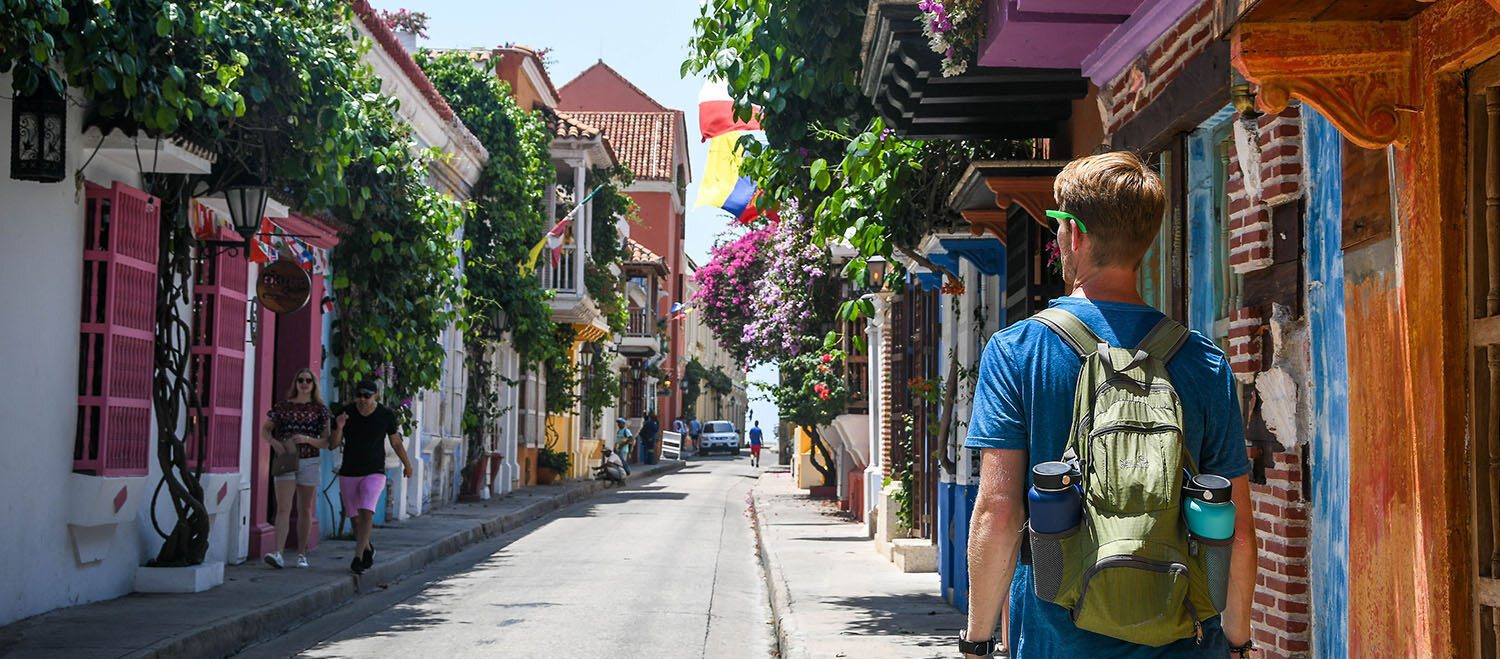
What to Pack for Colombia
Colombia is a diverse country that offers a lot of adventures and fun for any type of traveler. The many things to do and climates to experience can be tricky when you are deciding on what to pack.
Here are some specific items we’d recommend packing for Colombia:
- bug repellant (solids are the way to go)
- reef-safe sunscreen
- insulated water bottle
- reusable straw & reusable bag ( say no to single-use plastic! )
- hiking pants (if you’re thinking of hiking)
- rain jacket
- long and short pants
- loose shirts and blouses (especially for the coastal region)
- jacket and scarf
- travel towel
- Chaco sandals (we’d recommend these instead of hiking boots as they are less bulky and are good for walking through water)
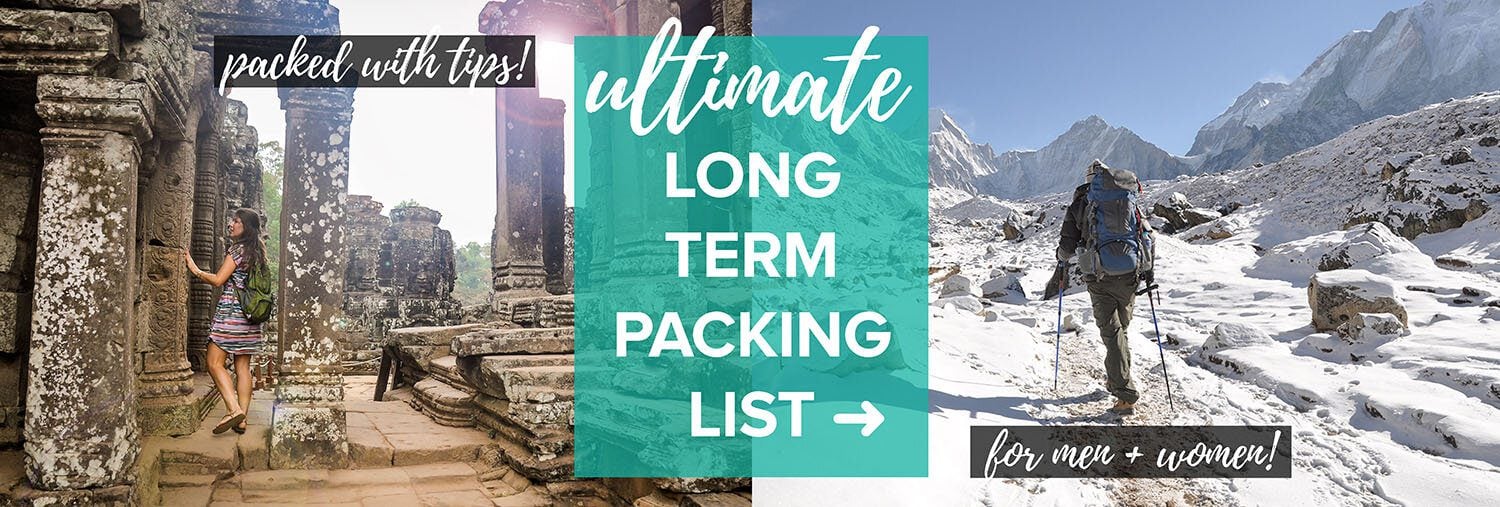
Colombia Travel Articles
Find all the information you need on traveling in Colombia to help you get ready and plan the perfect trip. From city guides to insider tips, we have it all!
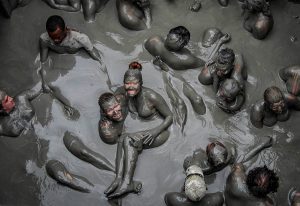
El Totumo Mud Volcano: Read This Before You Go!
El Totumo is a mud volcano that is a popular day trip from Cartagena. Read this guide for exactly what to expect!
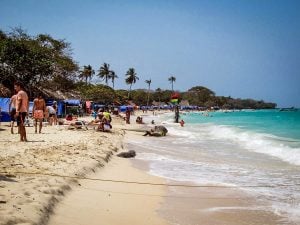
Rosario Islands: Read This Before You Go to Playa Blanca
Visiting the famous white sand beach of Playa Blanca on Isla Grande is a popular day trip from Cartagena. We ventured here during our first trip to Colombia, and it was quite different than we expected. Read our story about visiting this famous Rosario Island so you are prepared!
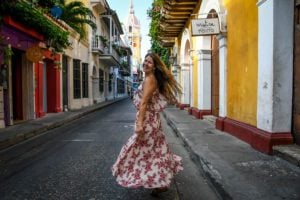
26 Best Things to Do in Cartagena (and What to Eat!)
Cartagena is a colorful and bustling city on Colombia’s Caribbean Coast that makes it easy to fall in love. With a vibrant nightlife scene, stunning colonial architecture (hello Instagram!) and some of the best food in the country, this city is well worth a spot on your Colombia itinerary. We’ve...

7 Reasons to Visit Cali, Colombia
Cali, Colombia is known as the salsa capital of the world. People from all over the world flock to Cali and many stay longer than they expected. This is what happened to our friend, Courtney, and she shares why Cali draws in people and makes them fall in love with...
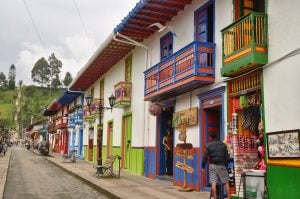
Salento, Colombia Travel Guide: A Town with Culture, Coffee and Charm
Salento, Colombia is in the heart of coffee region and is known for colorful doorways, charming locals, world-class hiking and an explosive game you'll never forget!
Border Crossing: Colombia to Ecuador
Crossing the border between Colombia was the part of our journey we were dreading most.
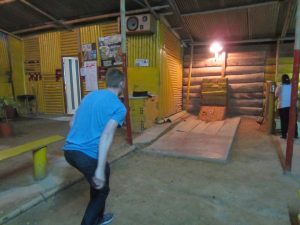
Explosives & Alcohol, a Great Combination
Being the only gringos in the bar in Colombia, we drew lots of attention...
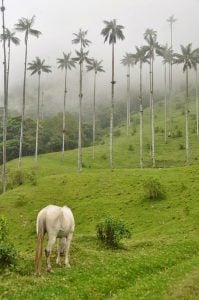
Valle de Cocora: Hiking in the Clouds
Though hiking the Valle de Cocora was one of the things I was most looking forward to in Colombia, nothing could have prepared me for just how beautiful it would be.
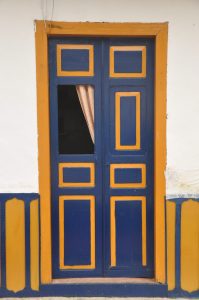
Salento: In the Heart of Colombia’s Coffee Region
Located in lush green mountains, Salento is a true Paisa village. Lining the streets are businesses and homes with brightly colored doors, and men wear traditional wool ponchos and cowboy hats.
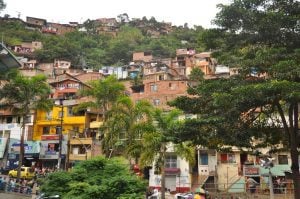
Medellin Colombia
When we told friends and family that Colombia was among the countries we were planning to visit in South America, we were met by many concerned looks and questions.
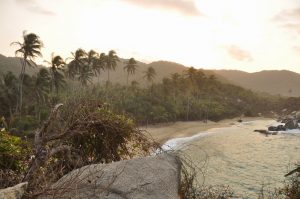
Tayrona National Park: Beach Camping in Colombia
I don't think there are many better combinations in life than a beach and a tent. Tayrona National Park is a magical place where you can hike in and camp on the beach in a hammock or tent. We’ll tell you all about our experience traveling to this off the...
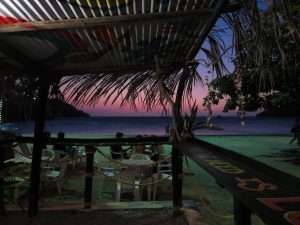
Taganga: A Dirt Road Paradise
A day after landing in Colombia, we made a journey along the coast to the town of Taganga. At one time a small fishing village, Taganga has recently become popular with backpackers and vacationing Colombians. It is unlike any place we have ever seen, which adds to its charm.
Save this page on Pinterest for later!
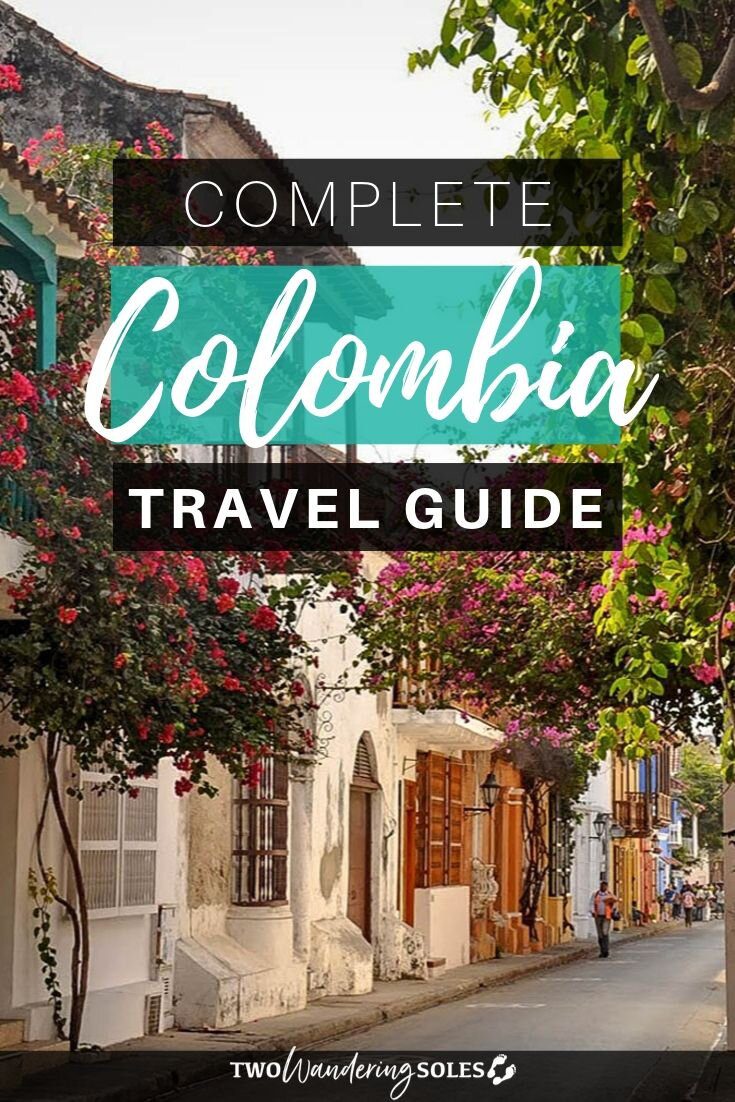
Book Your Trip to Colombia Now!
Here are some helpful links for booking your trip to Colombia…
To find the best airline deals: Skyscanner
Booking a rental car: Rentalcars.com
Finding tours in Colombia: Get Your Guide
Don’t you dare travel without this!

Colombia Travel Guide
Your ultimate colombia travel guide, with tips, and things to see and things to do in colombia. great for first-time and returning travelers..
Located between the Caribbean, the Amazon Jungle, and the Andes Mountains, Colombia has something for everyone.
A bright, colorful country, it is a very popular tourist destination and for good reason.
Rich with culture and history and full of tropical climates, it makes a great place for fans of the outdoors or those who want to experience its many beaches and islands.
Add in the vibrant nightlife in cities like Medellin and it is a perfect vacation spot.
This Colombia travel guide will help you plan your next vacation.
Popular Guides
- Things to do in Cartagena
- Must See Cities in Colombia
Our Highlight
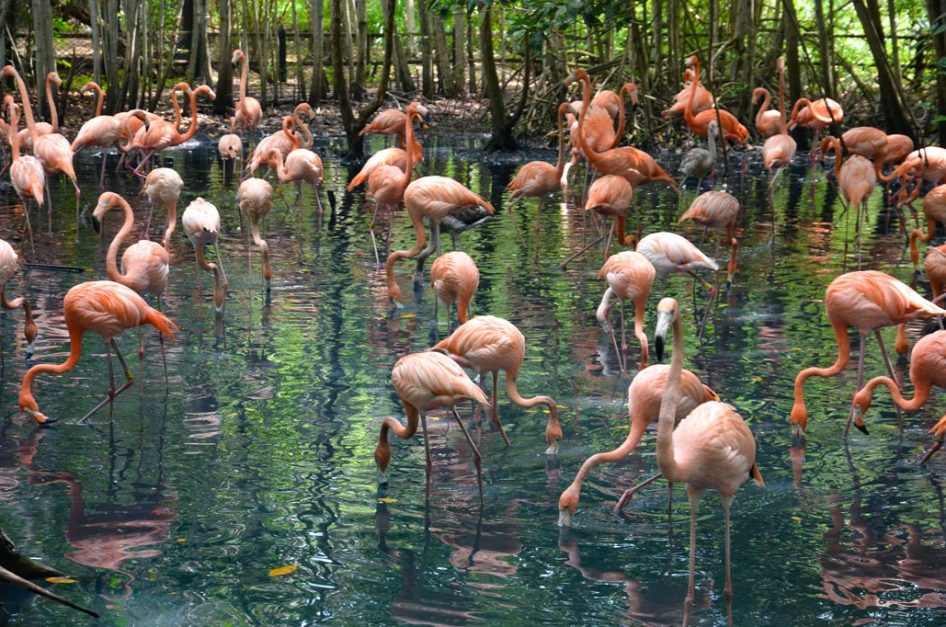
Table of contents
Table of Contents
Fast Facts about Colombia
- Power voltage is 110V at 60 Hz.
- Colombia’s currency is the Colombian Peso and 1 Colombian Peso is equal to 0.0003 USD.
- The best way to get around Colombia is by bus.
- As long as your stay is under 90 days, you do not need a tourist visa, just a valid US passport.
- Popular network providers in Colombia include Claro, Tigo, and Movistar. You can purchase a SIM card through any of these networks by visiting their official stores.
- Colombia has a sales tax rate of 19%.
Things to See and Do in Colombia
Tayrona National Park: Found in the Caribbean Coast of Colombia, head over to the Tayrona National Park to explore beautiful beaches and the Sierra Nevada de Santa Maria, the highest coastal mountain in the world. Once there, you can hike through the hillsides to see Pueblito, a village full of history and sacred sites from an ancient civilization, or go to the rainforest and see a variety of animals and species, including the very rare cotton-top tamarin (monkeys). https://www.beautifulworld.com/south-america/colombia/tayrona-national-park/embed/#?secret=xCh0K8LhzY
Gold Museum: Spend time at this very popular gold exhibition in Bogotá. Take a guided tour to learn more about Colombia and its history or explore at your own pace and see artifacts and gold pieces from pre-Hispanic metallurgy.
Walled City of Cartagena: Feel like you are back in time and explore the bright, colorful streets of Cartagena. Walk past beautiful restored colonial houses and buildings, enjoy fine dining, shop at designer boutique stores, and sample delicious fruits from the fruit stands.
Laguna de Guatape: One of the most popular places in Medellin is the town of Guatape. Take a guided tour or explore on your own. Climb the 700 steps of the El Peñol rock to experience views like no other, see the artwork that decorates the town, visit the abandoned mansion of Pablo Escobar, and swim in the lake of Guatape.
San Andres Island: Spend a day (or more) at this famous coral island. Swim in the warm waters, scuba dive with stingrays, explore the various caves, and take in peaceful sights.
Colombia Travel Guides
- Things to do in Cartagena – Visit the Jewel of Colombia
- Top 5 Must See Cities in Colombia
- 15 Reasons to Visit Colombia
Accommodation
Budget: Colombia offers backpacker hostels with a mix of dorm-styled and private rooms for around 320 to 1,200 Colombian Pesos per night. Hostels tend to come with swimming pools, lounge areas, and/or complimentary breakfast.
Mid-Range: For mid-range hotels, expect to pay 160,000 to 500,000 Colombian Pesos per night. Amenities include air-conditioned rooms and suites, outdoor pools, hotel restaurant and bar, fitness areas, complimentary breakfast, and free Wi-Fi.
High-End: Upscale hotels can go from 650,000 to 1,500,000 Colombian Pesos per night and include top-class hospitality service, upscale rooms with private balconies, prime city locations, ocean views, elegant dining, pools and spas, and more.
Check out our favorite booking platforms Booking.com , Tripadvisor and VRBO for the best deals on accommodation.
Food : The cuisine of Colombia is a mix of Indigenous, African, Spanish, and Arab cuisine and favors rice and bread, legumes, meat and seafood, and a variety of fresh fruits. When out and about, stop by local street vendors to taste some chopped papaya and mangoes or grilled corn on the cob or pastel del pollo (chicken-stuffed pastry) or Obleas con Arequipe (wafer sandwich with caramel sauce). At night, head down to a sit-down restaurant to enjoy more Colombian cuisine. Expect to pay roughly 25,000 Colombian Pesos per day for food.
The Best Ways to Get Around Colombia
Getting to colombia:.
Getting to Colombia: The El Dorado International Airport in Bogotá is Colombia’s busiest airport and is just 9 miles, or a 30 to 60-minute drive, to Bogotá city. If traveling closer to the Amazon region, the Alfredo Vásquez Cobo International Airport is a good option.
Flights: You can check for the best flights to Colombia on Skyscanner .
Transportation:
Train: Colombia has a nonexistent train system for passengers.
Bus: Colombia offers many bus options both for shorter distances and to travel between cities. Long-distance buses are similar to a train and offer air-conditioning and sometimes Wi-Fi. Take a bus from Cali to Bogotá in about 10 hours for 70,000 Colombia Pesos, or take a city bus for 2,000 Colombian Pesos.
Rent a car: To rent a car in Colombia, you will need a valid US license valid for at least two years. Note that is not as recommended to rent a car, as it is considered less safe than taking a bus. If you do rent, make sure to find a rental agency that offers insurance. Prices start at around 400,000 Colombian Pesos per day. Colombia also offers taxi services and Ubers.Check for prices and availability here.
When to go To Colombia
- The best time to visit depends on where you are going. December to March are the driest months in general, which is ideal for those going to the Andes Mountains. If you’re heading to the Amazon region, go between July and August, where there is less rainfall. To avoid the crowds and get better prices on flights and hotels, November is a good month to visit Columbia.
Where to Stay in Colombia
Ibis Medellin : Stay in the heart of Medellin at this stylish hotel. The convention center, Museum of Modern Art, downtown area, and the train station are all just minutes away. Once you’re done exploring, head back to the hotel for free high-speed Wi-Fi, air-conditioned rooms, and the hotel’s bar and restaurant.
Hotel Vilar America: Come stay at this charming hotel situated between the historic and nightlife districts of Bogotá. Enjoy free Wi-Fi and breakfast, family rooms with flat-screen TVs, and the hotel’s restaurant before venturing out in Bogotá.
Hotel Cosmos Cali : Enjoy air-conditioned rooms with flat-screen TVs at this hotel in Cali. Room service, free Wi-Fi, and breakfast are included. Take a short walk to the Cali City Theater or head down to the Cali bullring.
What to Pack for Colombia
- Sunscreen: Protect your skin from the beautiful sun with some sunscreen.
- Hiking Boots: Keep your feet comfortable with a sturdy pair of hiking boots.
- Swimsuit: With so many beaches and waters to explore, make sure to bring a swimsuit with you.
See our packing tips: packing tips
Colombia Travel Guide: Best Booking Resources
Whenever we travel to we make sure to start with these companies. We have tried a lot of different ones over the years and all of these have consistently proven to be the best when it comes to offering great prices.
We have used every one of these personally and continue to do so.
- Booking.com : This is our go site to when comparing prices for accommodation. It usually has the cheapest prices, especially in Europe and we love their interface. Not to mention you get free cancellation and you are guaranteed the best price.
- Trip Advisor : What we like about Trip Advisor is that we can look at all the reviews and then book our accommodation. TripAdvisor is where we go when we want to compare prices with multiple accommodation providers.
- VRBO : is the main search engine we use when we are looking for a home or apartment rental. It can sometimes be cheaper than hotels and it is the best way to stay in areas that offer a more local feel.
- Hostelworld : With one of the largest databases of hostels in the world, Hostelworld is the go-to site when you are looking for budget accommodation.
- Skyscanner : This is the first place we check for flights. It consistently comes back with the cheapest and best options. It allows us to compare a lot of airlines to get the best price.
- Rome 2 Rio : If you want to see how to get somewhere by plane, train, bus, ferry or car Rome2Rio lays it all out for you as well as related costs.I love how they show it all to you on a Google Map and it works offline.
- Get Your Guide: For all your day trip and city guide needs, we use Get Your Guide. It has the world’s largest collection of things to do with more than 30,000 activities in 7500 destinations.
- World Nomads Insurance: When traveling to Italy you should always have travel insurance. We have found the best bang for your buck is by far World Nomads.
Colombia Travel Guide: Related Articles
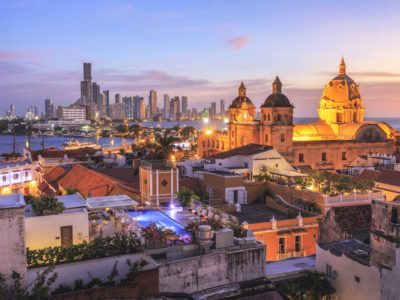
18 Best Things to Do in Cartagena – The Jewel of Colombia
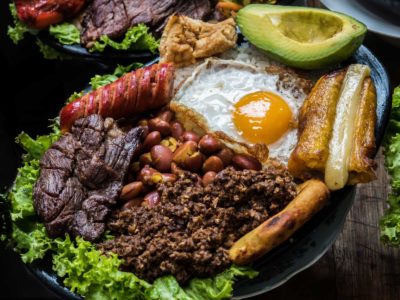
Colombian Food: 28 Traditional Dishes to try in Colombia or at home
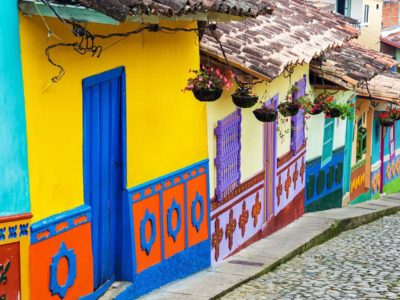
25 Fun Facts About Colombia – Plan Your Trip Today

Colombia Travel Guide
Looking for an in-depth Colombia travel guide ?
Then you’re in the right place!
Forget what you’ve seen on the news or on Netflix: Colombia is a gorgeous, culturally-rich country that is absolutely worth visiting.
As crime rates have decreased in recent years, tourism to Colombia has steadily increased, with more and more travelers singing the praises of this exciting, diverse destination.
There’s a little something for every kind of traveler in Colombia, from outdoor adventurers to history buffs to coffee addicts.
Not sure where to start? We’ve got you covered.
Colombia is home to several world-class cities that blend historic charm with modern sophistication.
Bogota, the country’s capital, is home to several top museums, a vibrant culture, and delicious food — both on the street and in top restaurants.
Cartagena is a charming Old World city by the sea, featuring a walled colonial historic district that will transport you back in time.
And Medellin , once known for its role in the drug trade, is now home to a thriving art scene with tons of awesome shops and restaurants.
Each city also makes a great home base for day trips to top attractions like Tayrona National Park and Guatape. Read on to learn more.
Colombia’s natural wonders are also absolutely worth exploring. From beautiful beaches to the lush rainforests of the Amazon, there’s much to experience in this beautiful country.
Outside of the city of Leticia, you can embark on a cruise down the Amazon River for the adventure of a lifetime, interacting with some of the area’s unique wildlife (although ideally from a safe distance!).
The country’s Pacific Coast is home to some of the best whale watching in the world from July through November.
Head to Bahia Solano to see humpback whales migrate from the South Pole – it’s a truly incredible sight.
And of course, you can’t miss the beaches of Tayrona National Park , complete with white sand, clear blue waters, and aerial hammocks perfect for relaxing.
Keep reading to dive into resources that will help you with planning a trip to Colombia in South America.
Note: This ultimate guide to Colombia travel contains affiliate links to trusted partners!

Colombia Map
Use this Colombia travel map to begin planning your trip to this incredible country!
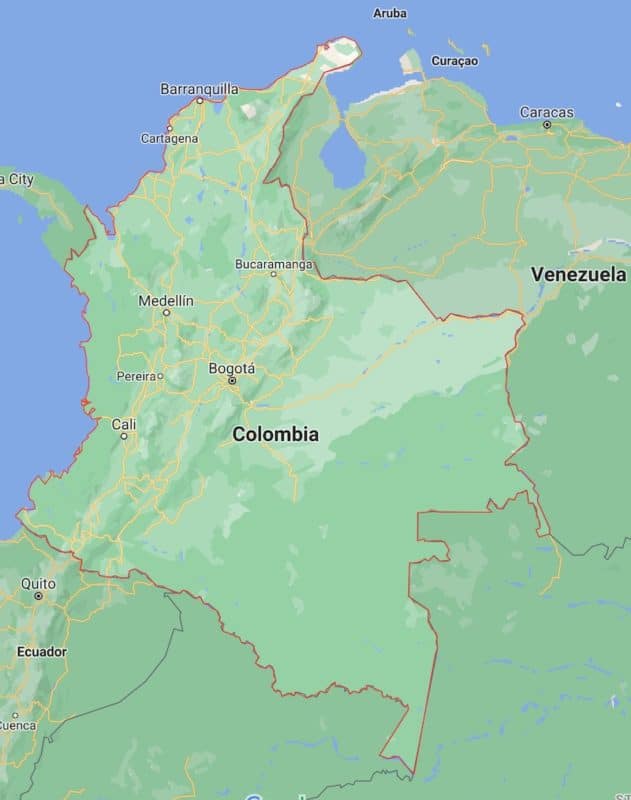
Click here for an interactive Google Map version of the above graphic.
Amazon Travel
Looking for visit the Amazon from Colombia? Don’t miss:
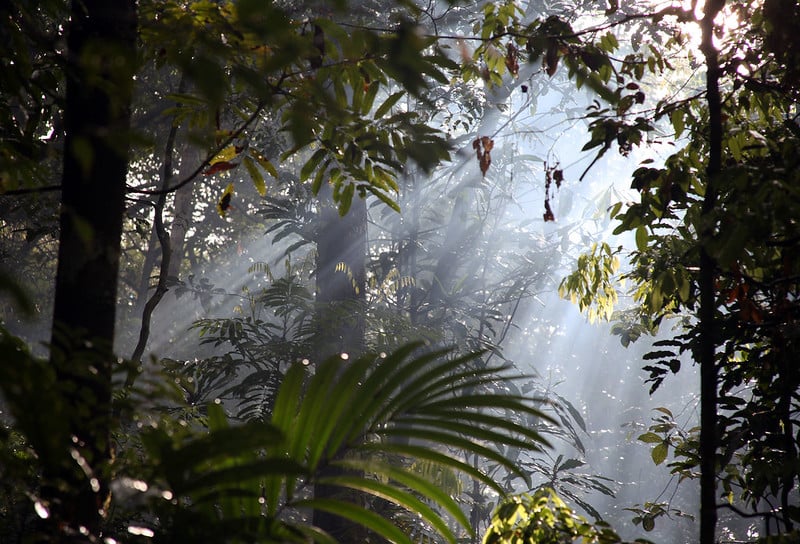
Anacondas, Piranhas And Pink Dolphins, Oh My!: Exploring The Amazon Jungle From Colombia
Bogota Travel Guide
The following Bogota tourist information can help you plan the perfect trip!

Colombia Travel: Exploring Bogota By Bike
Cartagena Travel Guide
If you’re looking for a Cartagena guide for your trip, check out:
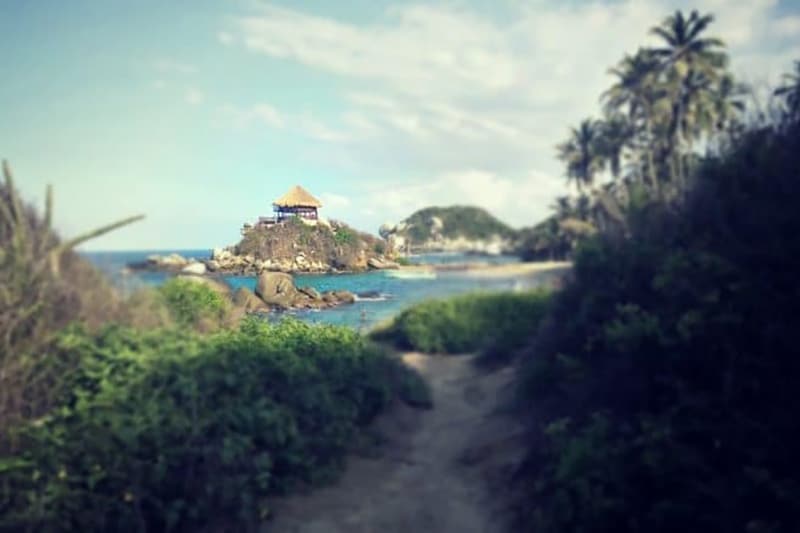
3 Amazing Day Trips From Cartagena, Colombia
Colombia Travel Tips
The following Colombia travel advice can help you plan the perfect trip!
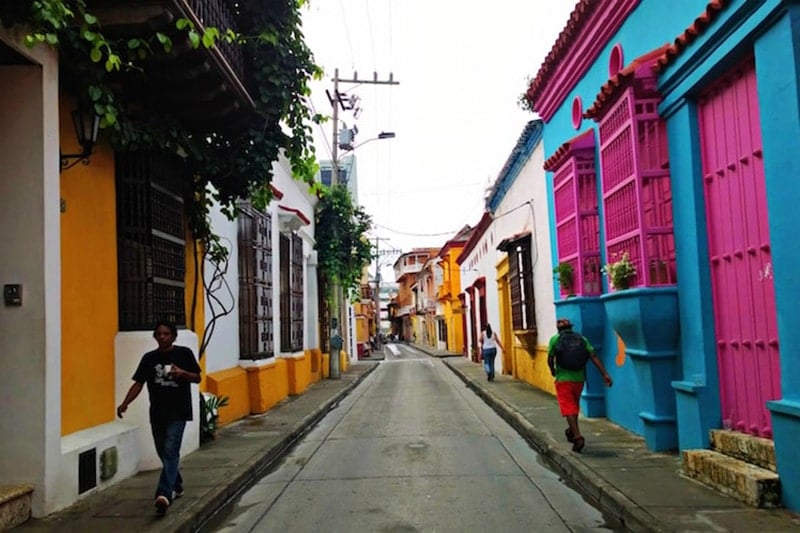
Is Colombia Safe? Everything You Need To Know!

10 Ways Colombia Stole My Heart

10 Things You Didn’t Know About Colombia
Medellin Travel Guide
Looking for a Medellin city guide ? These posts can help!
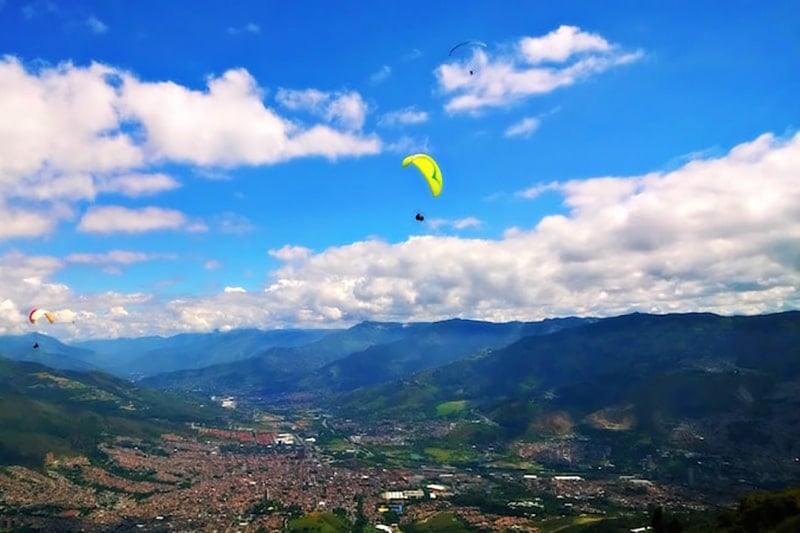
Colombia Adventure: Paragliding In Medellin (Epic!)
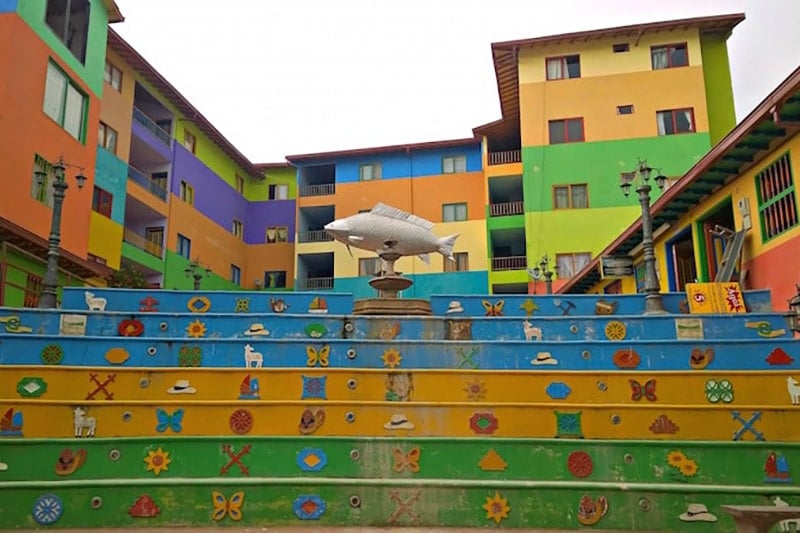
3 Amazing Day Trips From Medellin, Colombia
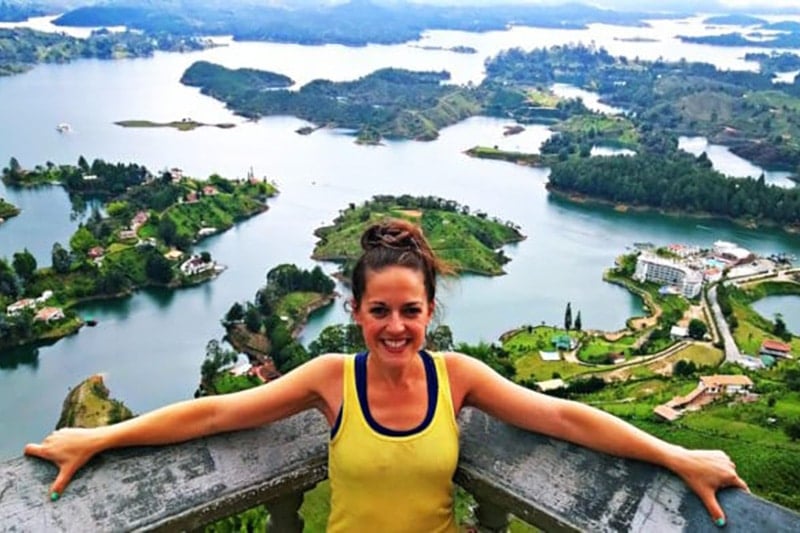
El Peñol & Guatape: The Perfect Day Trip From Medellin
Santa Marta Travel Guide
The following travel guides can help you plan an epic trip to Santa Marta in Colombia !
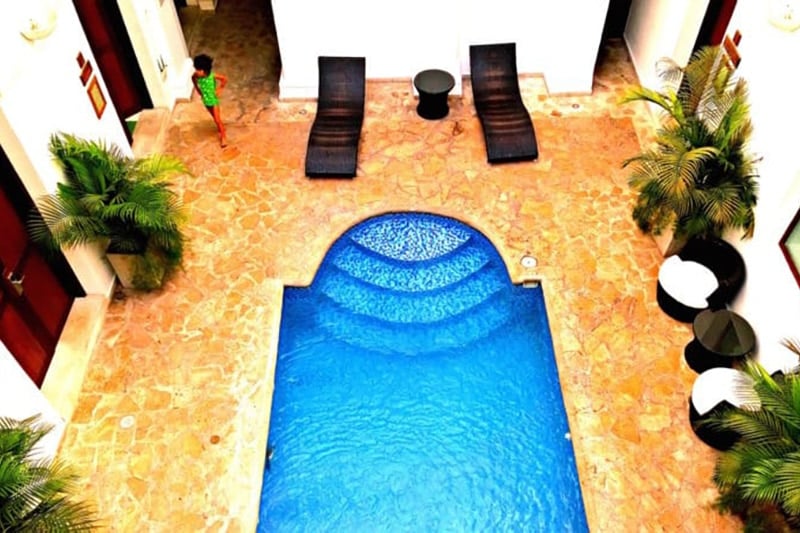
Experiencing The World’s Best Hostel In Santa Marta, Colombia
Tayrona National Park
Looking to experience Colombia travel and adventure ? Don’t miss Tayrona National Park!
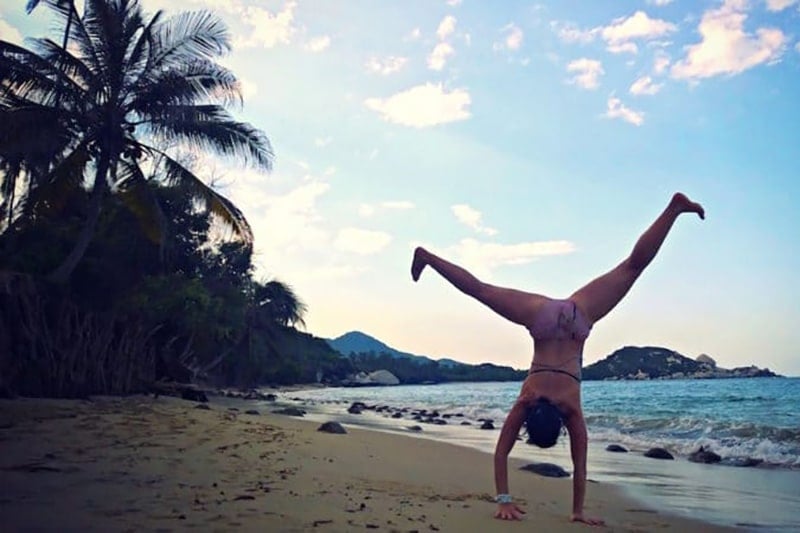
How To Visit Tayrona National Park (& Have An Amazing Time!)
Traveling In South America
These guides share Colombia travel advice as well as tips for exploring South America in general!
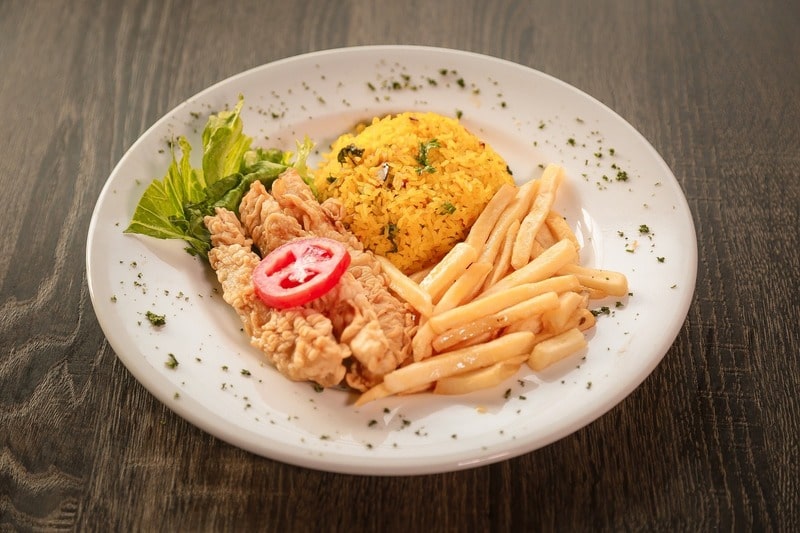
14 Essential Tips For Backpacking South America

My Most Ridiculous Bus Encounters Backpacking South America
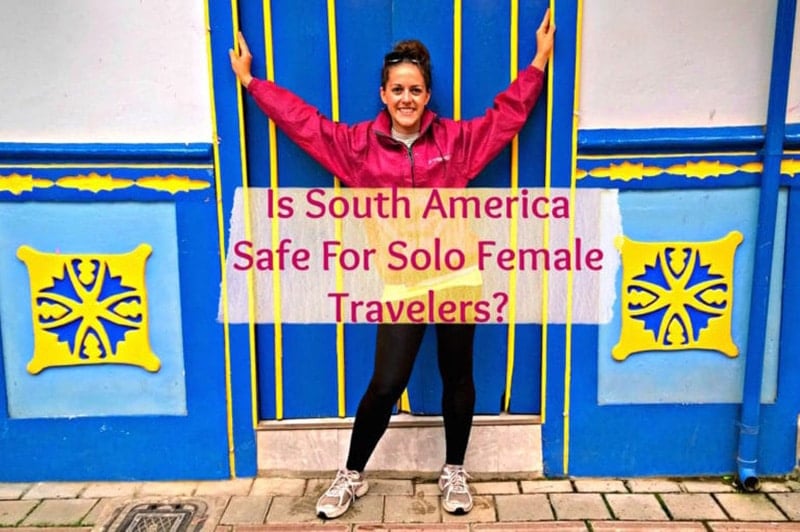
Is South America Safe For Solo Female Travelers?
Best Colombia Tours
Explore local culture with a Colombian tour guide through these unique excursions:
- Full-Day Rosario Islands Including Barú, Cholon and Playa Blanca from Cartagena
- Freedom Tour of Palenque in Cartagena
- Lodotherapy in the Totumo Volcano with Visit to Galerazamba from Cartagena
- Full-Day Guatavita and Salt Cathedral from Bogota
- Full-Day Guatapé (Pueblo de Zocalos) & Piedra del Peño lfrom Medellín
- The Dark Days: Pablo Escobar and The New Medellin Tour
- Medellin ATV Tour
Colombia Hotels
Click here to browse the best Colombia travel hotels!
Prefer self-contained stays?
Click here to check out unique local rentals !
You can also use this map to search for local stays:
Colombia Travel Insurance
It doesn’t matter if you’re traveling solo or with a group on a Colombia tour. When visiting Colombia — or any other country in the world — make sure to get travel insurance to protect your health and safety.
In my opinion, the best travel medical insurance for travelers is SafetyWing as they’ve got a large network and offer both short-term and long-term coverage — including coverage if you’re traveling for months as well as limited coverage in your home country).
Additionally, SafetyWing is budget-friendly and offers $250,000 worth of coverage with just one low overall deductible of $250.
With coverage, you’ll have peace of mind as you embark on your Colombia travel itinerary.
Click my referral link here to price out travel insurance for your trip in just a few clicks .
Colombia Travel Guide FAQ
Below, find answers to frequently asked questions about traveling in Colombia .
Q: What are the best places to visit in Colombia?
One of the most popular places to visit in Colombia is the country’s Caribbean coast. Aside from gorgeous beaches, this area has tons to offer travelers looking for some sun-soaked adventures.
Cartagena , one of the largest cities in the area, sits right on the coast and blends Old World charm with the exciting vibe of a modern, beachfront city. Here you can explore one of the best-preserved colonial cities in Latin America, full of gorgeous churches and bright-colored buildings that will make you feel like you’ve stepped back in time.
Not far from the city is Tayrona National Park , where you can lounge on the idyllic beaches or trek through the lush jungle.
You can also take a day trip to El Tutomo Volcano , located just an hour from Cartegena. Take a dip in the mud baths and emerge with incredibly soft skin and hair (as well as a few new friends!). For a little extra R&R, book a mud massage or mud wash!
Located in Central Colombia, the city of Medellin has quickly become a top spot for travelers. Featuring gorgeous colonial architecture, beautiful parks, and a trendy art scene, Medellin has much to offer every kind of traveler.
One of the city’s top attractions is the Plaza Botero , a park dedicated to artist Fernando Botero, featuring 23 of the artist’s sculptures in the open air. You can see more of his work, as well as three floors worth of Colombian art, at the Museum of Antioquia .
Want to see some of the best views of Medellin? Hop on the Medellin Metrocable , a cablecar line offering amazing panoramic views of the city.
You can also take a stroll through the trendy neighborhood of El Poblado and search for the best cup of coffee in the city.
For a great day trip , head to Guatape , a small town featuring a 740-step monolith that you can climb for incredible views of the surrounding area. The town is also a top spot for outdoor adventurers, with opportunities for kayaking, hiking, swimming, and more.
Not far from Medellin is Bogota , the capital of Colombia. Featuring colorful street art and colonial architecture, the city is the perfect spot for a bike tour . This is a great way to get to know the city and its culture, as you’ll wander through colorful markets, stop to play traditional games, and get to know a bit about the country’s tumultuous history.
In the city’s historic center, La Candelaria , you’ll find attractions like the Gold Museum , an entire museum dedicated to the history, art, and pursuit of one of the most sought-after metals in the world.
At the National Museum of Colombia , you’ll find over 20,000 objects and artifacts that tell the story of the country’s rich history.
And for some incredible views of the city, climb up to the church at Monserrate , Bogota’s tallest mountain.
Q: Is Colombia expensive for tourists?
Colombia is a fairly inexpensive destination. You can easily find inexpensive accommodation, food, and transportation options throughout the country, particularly if you avoid more tourist-heavy areas.
The average traveler spends about $36 USD per day in Colombia on accommodation, transportation, food, activities, and other travel expenses.
Q: What is the best way to travel around Colombia?
Air travel is considered the best way to get around Colombia. Colombia is a fairly large country so you can save a ton of time traveling between cities by plane.
Domestic flights are also pretty inexpensive, sometimes only a little more than a bus ticket on the same route. Check out low-cost carriers like Viva Air that often offer great deals on flights; if you’re traveling from the U.S., Viva even offers flights from Miami!
Buses are also a great way to get around, particularly if you’re traveling somewhere off the beaten path, as you’ll find routes servicing almost every town in the country.
While buses are ubiquitous in Colombia, they are not always the most relaxing way to travel. Bus drivers have been known to blast music throughout the bus or crank up the sound on whatever movie they’re showing.
You also may have to get off the bus mid-journey for at a military checkpoint and could be subject to a security inspection. If you opt for the bus, don’t expect to sleep through the trip.
Q: Is Colombia safe for travel?
Colombia can get a bad rap when it comes to safety but it has come a long way in recent years. Violent crimes like muggings and kidnappings have decreased significantly and while petty theft does happen, it’s no reason to avoid the country altogether.
It’s a good idea to stay somewhere with 24-hour security so that you have someone to turn to if something goes wrong. You’ll also want to heed the usual advice for avoiding petty theft abroad — don’t show any signs of obvious wealth, keep your phone and any other valuables out of sight and in a safe place to avoid pickpockets , and always be aware of your surroundings.
This is also a place where you don’t want to go out alone at night, particularly if you’re a solo female traveler . If you’re out late, get an Uber back to your accommodation or walk back in a group.
Q: What do I need to know before going to Colombia?
One thing to know before going to Colombia is that only about 4% of the country’s population speaks English. It’s definitely a good idea to learn the language or at least a few Spanish phrases before your trip so that you can communicate with the locals.
At the very least, make sure you have a good translator app on your phone so that you’re not stuck at shops and restaurants. Learning a few phrases in the native language also shows a level of respect for the culture of the country you’re visiting. Time to get that Duoling streak back up!
Once you get to Colombia, you’ll quickly learn that cash is king in this country. Some higher-end shops and hotels will take credit cards but in most cases, you’ll need cash.
The flip side of this is that it’s not exactly safe to carry a lot of cash with you in Colombia. If there’s a lockbox or safe at your accommodation, keep some cash there and just carry as much as you need for the day.
Note, too, that more remote destinations like Tayrona National Park do not have any ATMs, so you’ll want to make sure you have enough cash for the duration of your stay before you head out.
It’s also important to look where you’re going in Colombia. This probably seems pretty obvious but it’s a particularly important tip here.
The sidewalks and roads in Colombia are known to have large cracks and holes that can make it easy to trip and fall. Move carefully (particularly at night!) and watch out for any loose bricks, uneven pavement, or cracks that could send you to the doctor.
Q: How many days should you spend in Colombia?
Most experts suggest spending about 10 days in Colombia to really maximize your time in the country.
There’s a lot to see in Colombia and a 10-day trip will allow you to spend a little time in most of the country’s top destinations while giving you ample time to travel from place to place.
Q: What is the best month to visit Colombia?
While the weather in Colombia varies from place to place, the country is widely considered a year-round destination.
December through March is considered Colombia’s high season, with much of the country experiencing pleasant, sunny weather.
December and January are the country’s busiest months for tourism, so if you’re planning on visiting during these months be sure to book your travel and accommodations far in advance.
September through November is technically Colombia’s low season, but the weather is generally pretty dry. These months are definitely worth considering if you want to avoid the crowds and save a little money on travel expenses.
Q: Do I need a Colombia travel visa?
Travelers from the United States, United Kingdom, Canada, European Union, and Australia do not need a visa to enter Colombia. Travelers from most South American nations including Argentina, Bolivia, Brazil, Chile, Ecuador, Paraguay, Peru, Uruguay, and Venezuela simply need a national ID to enter the country and can leave their passports at home.
It’s recommended to view your country’s Colombia International Travel Information page for the most up-to-date information on entry and exit rules and Colombia Travel Requirements. You can also contact the Consulate General of Colombia.
Q: Where is Colombia?
Colombia is located in northwestern South America. It shares borders with Panama (northwest), Venezuela and Brazil (east), and Peru and Ecuador (south).
Q: Are credit cards accepted in Colombia?
Credit cards — particularly Visa and Mastercard — are typically accepted in big cities and tourist areas. That being said, Colombia is a country where many places are cash-only, so make sure to always have some on you.
Q: Can you drink the tap water in Colombia?
The tap water is generally safe to drink in most places in Colombia as long as your destination isn’t too remote. That being said, it’s recommended to check with your hotel to be sure.
Q: What is the local currency in Colombia?
The local currency in Colombia is the Colombian Peso.
What would you add to this Colombia travel guide?

Enjoyed this ultimate Colombia travel guide? Pin it for later!
Colombia Travel Guide
Where skyscrapers sit next to quaint pueblos, and dense green rainforests merge with surreal red deserts.
Best time to visit Colombia
Best things to do in colombia, best places to visit in colombia, tayrona national park: best things to do (colombia), 10 best things to do in salento, colombia, best things to do in palomino, colombia, tatacoa desert: colombia’s best kept secret, map of colombia, weather in colombia.
Colombia's location on the Equator guarantees year-round warmth. The best and driest months run from December to March — perfect for sunny adventures. April to November brings more storms but lower prices and a great time to visit for crowd-averse travelers!
Best Cities
13 best things to do in medellin, colombia, 10 best things to do in cartagena, colombia, 15 things to do in bogota, colombia, into nature, cocora valley, colombia: hike along the world’s tallest palm trees, 8 best things to do in minca, colombia, unique places, guatapé: tips for the colorful village and el peñol rock (colombia), best travel insurances, how to travel safe, how to plan a trip.
- Find Hotels via Booking.com
- Find Hostels via Hostelworld
- Find a Rental Car via Sunny Cars
- Find Flights to Colombia via Skyscanner
- Get a Travel Insurance via Heymondo
- Book Tours & Attractions via Viator
- Book a Bus/Train/Transfer via 12Go
- Get a Visa via iVisa
- How to pack light for your trip
- How to plan your trip our tips
Why is Colombia worth visiting?
Colombia is a captivating destination that seamlessly blends its diverse landscapes, vibrant culture, and warm hospitality. From pristine Caribbean beaches to lush rainforests, rich history, thrilling adventures, and incredible coffee culture, Colombia offers a unique blend of landscapes and experiences perfect for exploring.

Is Colombia cheap to visit?
Colombia is one of the cheapest destinations to travel in South America. Hotels start from around $15 per night, while delicious meals at local eateries cost as little as $3, perfect for those seeking incredible travel experiences without breaking the bank.
Can I drink tap water in Colombia?
It’s a common misconception that tap water is unsafe to drink throughout Colombia, but in most major cities like Cartagena and Medellín, the water is suitable for drinking. However, tap water in rural areas, such as Minca and Tayrona National Park, should be avoided.
Do I need a visa for traveling in Colombia?
Visiting Colombia for less than 90 days? Most passport holders don’t need a visa; you can even fast-track immigration by preloading information about your stay online in advance. Just make sure to have a valid passport and proof of a return/onward ticket, and get ready for your adventure!
Tip: Some countries have stricter visa regulations, so check your entry requirements well ahead of time.
What language do they speak in Colombia?
Spanish is the primary language spoken in Colombia. While English is widely spoken in the tourist areas, it’s worth knowing some basic Spanish words to enhance your connections with Colombian locals.
Do I need travel insurance for Colombia?
Travel insurance is essential when visiting Colombia! It provides crucial protection against unforeseen circumstances, such as medical emergencies, flight disruption, and lost luggage, so that you can discover this incredible country with peace of mind.
Is Colombia safe?
Despite its turbulent history, Colombia is one of the most popular tourist destinations in South America; therefore, an emphasis has been put on traveler safety. Exercise caution by keeping your valuables out of sight and staying in well-traveled areas.
What power plug type does Colombia have?
Colombia primarily uses Type A and Type B plugs. You can use Type A plugs in Type B sockets, but not the other way around. An international plug adapter is a great option, ensuring you always have the correct plug type and keeping you charged during your trip.
Why do people love Colombia?
People love Colombia for its unique blend of diverse landscapes, experiences, and vibrant culture. Whether you’re going to be hiking through the palm-filled landscapes of the Cocora Valley, exploring the colorful streets of Medellín, or relaxing on the beaches of Palomino, there is something for everyone.
Travel to Colombia
Colombia is a country of two sides. Where pristine beaches meet rugged snow-capped mountains, and modern skyscrapers coexist harmoniously next to charming pueblos; a place of unexpected beauty. With a turbulent history of gang rivalry and drug cartels, you’ll now find united communities and smiling locals. This history, combined with its vibrant culture and stunning landscapes, makes traveling Colombia so special.
How to Plan Your Trip to Colombia
Explore our Colombia travel guides to plan your perfect trip! Whether you’re backpacking or looking for the best-kept secrets, we’re here to help. Dive into the best things to do in Colombia, or check our complete 3-week Colombia travel guide and discover this extraordinary country!
Short on time? 2 Weeks in Colombia is the perfect amount of time to tick off the country’s highlights and explore some of the most breathtaking landscapes in the world.
Best Time to Visit Colombia
Planning your backpacking adventure or dream vacation in Colombia? Find out about the weather in Colombia to choose the best month to visit.
Dry Season (December – March): Consider visiting between December and March, the driest months. With minimal rainfall, clear skies, and sunny days, it’s the ideal time to explore Colombia’s stunning landscapes and beaches. However, good weather typically brings larger crowds and higher prices. If you’re planning to visit Tayrona National Park, we’d recommend avoiding December, as locals travel here for the holidays, which can get extremely busy.
Wet Season (April – November): Expect occasional downpours outside these months (April-November), but don’t let that stop you. The off-season is a fantastic time to travel; the temperature is still pleasant, yet prices are typically lower, and there are fewer crowds, so it can be a great time to go on your Colombia holiday!
It’s also worth noting the climate in Colombia varies depending on where you are in the country. Central Colombia is always a little colder than North Colombia, so make sure to pack layers for the cooler temperatures.
Best time to visit Colombia for festivals: If you’re keen to experience the incredible culture, the best time to visit Colombia is during local festivals, such as Carnaval de Barranquilla in February and Medellín’s Feria de las Flores (the Festival of Flowers) in August, offering a unique insight into the traditions of the country.
Whatever time you choose, Colombia promises a rich and diverse experience for every traveler.
Coastlines and Beaches in Colombia
Some of Colombia’s best places to visit are along the Caribbean coast, where you’ll find pristine white sandy beaches and turquoise waters.
One of the best things to do in Colombia is spend the night in Tayrona National Park , home to beautiful beaches, an abundance of wildlife, and dense jungle. Spend your day sipping on freshly picked coconuts, hiking through lush forests, over wooden walkways and boulders, and enjoying the crystal clear waters and incredible marine life. Best of all, end the night sleeping in a hammock under the clear night sky – a true bucket-list experience!
If you’re looking to relax for a few days, Palomino is the perfect spot; a quaint beach town that welcomes the slower pace of life. For a bit more of a buzz, the Baru Islands off the coast of Cartagena is a local favorite, with a lively atmosphere that’s hard to beat.
For off-the-beaten-path adventures, the Pacific coast of Colombia is the ideal place. Home to dense rainforests, rugged beaches, and whale-watching opportunities, this area is a true hidden gem waiting to be explored.
Whether you’re looking for a relaxing vacation in Colombia or a backpacking adventure, the coastlines and beaches cater to all.
Food, Culture, and Religion in Colombia
Colombia is a country where food, art, and festivities hold a special place in the heart of its population, finding any excuse to gather and enjoy home-cooked arepas or take to the streets and salsa dance. But Colombia’s creative expression doesn’t stop there; art is everything, bringing people together and changing the lives of many. Suburbs like Communa 13 in Medellín, once rife with violence, have evolved thanks to the arrival of street art conveying powerful political messages. After seeing these murals, the colors will leave a lasting impression in your memory forever.
In addition to its cultural roots, religion plays a prominent role, with most of the population following the Catholic faith. This influence is evident in the breathtaking churches and cathedrals scattered across the country, like Las Lajas in Pasto, voted one of the world’s most beautiful churches. Additionally, religious events, like Semana Santa (Holy Week), span the country and create a deep connection among its people.
Colombia’s food and coffee scene reflects its vibrant culture, full of diverse flavors, aromas, and colors. From iconic dishes like arepas, bandeja paisa, and buñuelos to regional specialties such as hearty stews in the Andean region and ceviche on the Caribbean coast, Colombian cuisine is a sensory journey. Given its world-renowned coffee culture, it should also be no surprise that Colombia is one of the world’s largest coffee producers, recognized for its rich, full-bodied flavor, a must-try for all coffee lovers while in the country!
Why You Should Travel to Colombia
Some of the planet’s most extraordinary natural experiences can be found on vacation in Colombia. Whether you’re riding through the world’s tallest palm trees, hiking in the Andes, or snorkeling in the crystal clear waters of the Caribbean coast, this country offers endless opportunities for exploration and adventure.
Among these landscapes, discover lost cities, underground salt mines, and puzzling natural phenomena – each with an ancient story that forms the backbone of Colombia’s heritage.
What sets Colombia apart is the availability of travel for all types of budgets. Whether you’re looking to explore diverse landscapes, dive into the rich culture and history, drink endless amounts of coffee, or relax on one of the many tranquil beaches, Colombia is one of the most affordable destinations to experience in South America.
Safety and Travel Advice in Colombia
Colombia is a vibrant and unexpectedly stunning destination in South America with a history of conflict, violence, and political instability. While much of this is in the past, travelers planning a holiday in Colombia should follow precautions to get the most out of this beautiful country.
Natural Disasters: Colombia is susceptible to natural phenomena like earthquakes, hurricanes, and volcanoes. It’s advised to stay informed about local conditions, follow local authorities’ guidance, and consider travel insurance that covers unexpected events.
Crime and safety in Colombia : While violent crime is on the decline, and the country has made significant progress, it’s advised to stick to well-known tourist destinations and exercise caution. Petty theft is still a problem, so always keep valuables out of sight, particularly in busy areas and on public transport. We’d also recommend going out with other travelers at night and not on your own, sticking to well-lit streets.
Learn more about travel safety
Protests in Colombia: Sometimes protests can happen unexpectedly, causing disruption to the area. It’s advisable to steer clear of any of these demonstrations in case they escalate.
Cultural Sensitivity: While Colombians are very warm and welcoming, the country boasts a rich cultural heritage, so respecting local customs is important. Learning a few basic Spanish phrases is always really appreciated. Before taking photographs of local people or their property, always ask permission. And it’s suggested to avoid sensitive topics of conversation such as politics.
Travel Insurance: Before heading on your Colombia holiday, purchasing travel insurance is essential. Petty theft and unexpected accidents, such as lost baggage and injuries, can occur, so it’s always best to protect yourself. Check out these best travel insurances .

My Trip to Colombia Travel blog and practical information to organise your vacations in Colombia
Hola todos! Welcome to our Colombia travel blog! We're Angelica and Samuel, a French-Colombian couple, and we created this blog to share our love of Colombia and encourage others to visit this incredible country.
Since 2013, we've been traveling to Colombia to discover its most beautiful destinations. We created this blog to help you plan your trip and accompany you during your stay in Colombia: we share practical information, accommodation tips and itinerary ideas, as well as our favorite places to visit and responsible tourism initiatives.
On our site, you'll find everything you need to make the most of your trip to Colombia - a trip that's sure to be unforgettable!
Our latest posts
Colombia travel blog.
Whether you’re looking to explore its colonial cities, relax on its beaches or explore its jungles and mountains, on our travel blog you’ll find all the advice you need to plan a trip to Latin America’s most beautiful country! In our posts, we’ll share our experiences and discoveries of Colombia’s most beautiful destinations . With our help, you’ll be ready to make the most of your stay in this beautiful country and discover its many wonders! Our travel blog is here to provide you with all the practical information and tips you need to prepare your trip to Colombia !
How to get to San Andres and Providencia travel guide
Visit villa de leyva travel guide: best things to do in the most beautiful village in boyaca, visit guatape travel guide: best things to do in one of colombia’s most colorful villages, recommendation blog colombia, quote to organize a tailor-made tour in colombia, classic destinations in the spotlight, blog colombia.
Here are our classic destinations in the spotlight! Well-known places that are considered to be among Colombia’s must-see destinations. Because even though our travel blog is all about discovery and trying to get you out of the most touristy places, we make a point of talking about Colombia as a whole. And even in the most touristy places, it’s possible to take a step aside and discover another side of the country.
Tayrona National Park travel guide: all you need to know
Cocora valley travel guide: hiking in one of the most beautiful landscape of colombia, visit cartagena travel guide: the best things to do in cartagena de indias, guided tours in english, travel blog colombia.
Get ready for unforgettable experiences throughout Colombia! By choosing a guided tour in English, you’ll discover the wonders of this country accompanied by a local. So if you’re looking to be accompanied by a English-speaking guide, we’ve selected for you the best agencies for guided tours in English in Colombia’s major cities : Bogota, Medellin and Cartagena.
The best Bogota City Tours with an English-speaking guide
The best cali city tour with a local guide, the best cartagena city tours with an english-speaking local guide, our tips before you leave for colombia, best time to visit colombia: when you should travel, how to send money to colombia: comparison of the best international money transfers, colombia travel cost: how much money do you need for your trip, rent a car in colombia: our ultimate travel guide, destinations off the beaten path, the lesser-know colombia.
Here are some off-the-beaten-track destinations in Colombia that we’d like you to discover, because they deserve to be better known! If you like to get off the beaten path , this is the place to do it!
Visit San José del Guaviare travel guide: the gateway to Amazonia
Visit casanare travel guide: wildlife safari in the heart of the llanos, visit arusi travel guide: a quiet pacific village in the nuqui region, cultural immersion with a sierra nevada indigenous family, practical information, all the covid info you need for your trip, colombia travel guide, travel blog info.
All blog posts by Colombian destinations to find out what to do in Cartagena, visit the Andes region, explore the Pacific coast, discover the Amazon…
Our posts classified by theme to find out where to trek, discover the most beautiful beaches, visit the most beautiful villages or major Colombian cities…
Our itinerary ideas for trips to Colombia to help you make your choices, with examples and feedback from our experiences.
All the accommodation tips from our Colombia blog. You’ll find the best hotels by region, city, price, type of accommodation, etc.
When to go, formalities, budget, what to pack, vaccinations, insurance… all the practical information you need from our travel blog.
Focus on responsible tourism , a way of traveling that’s close to our hearts and that we want to promote on our Colombia blog .
Our “Colombia” posters
To extend your trip at home.

Travel Poster
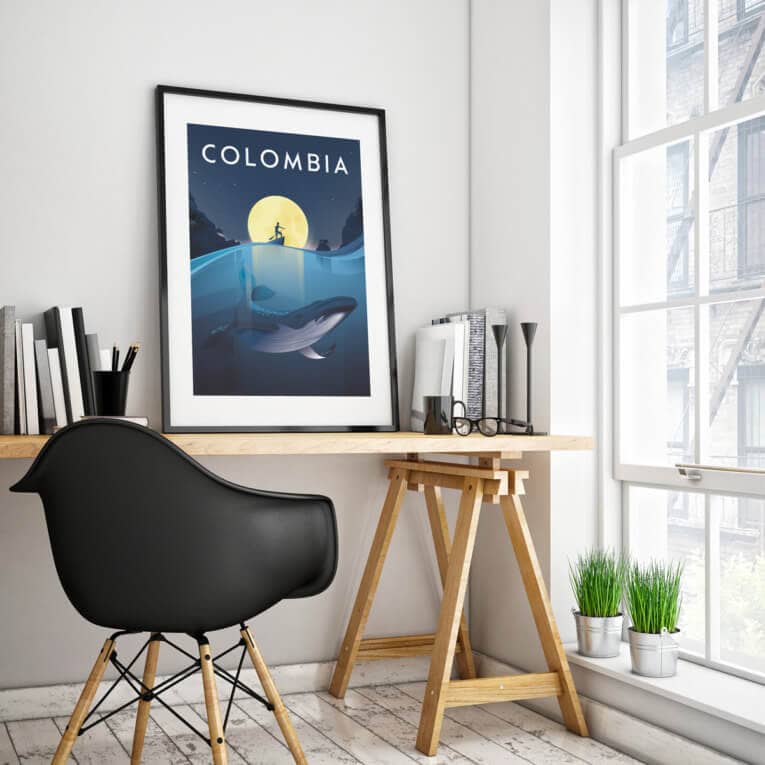
Café de Colombia

Colombia, the new tourist destination
Colombia is frequently cited as one of the world’s most beautiful travel destinations:
- Lonely Planet : 10 countries to visit in 2017
- World Travel Awards : Best South American destination 2019
- Forbes : 3rd most beautiful country in the world in 2022
That said, the development of tourism in Colombia is relatively recent , as the country is struggling to emerge from almost a century of armed conflict. The fragile peace accords of 2016 opened the door to a pacification of the country, and tourism has played, is playing and will play a special role in this process.
That’s why we’ve created this Colombia travel blog , and why you can join us in this wonderful project! With this travel blog, we want to change the country’s image and encourage tourism initiatives that contribute to building lasting peace.
In our travels, we try to meet Colombians who want to change the way tourism is done, or at least people who propose a minimum of thoughtful tourism, which is sometimes lacking in Colombian tourism projects. Thoughtful so as to be sustainable, culturally sustainable for local communities, ecologically sustainable for natural areas.
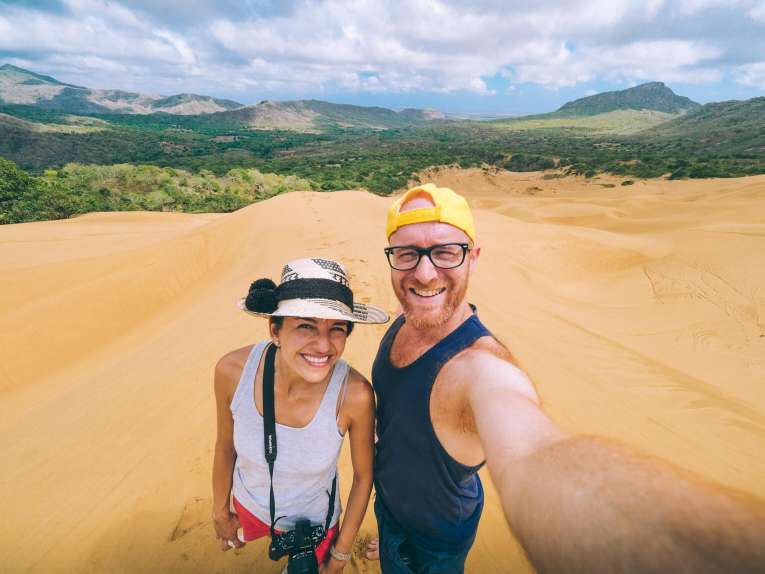
Legal information
Like our blog? You can support us! Click here to find out more My trip to Colombia © Desde 2018 con muchos 💛💙❤️ All rights reserved - Website created by nymyproduction.com

- Destinations
- Travel advice

The best Colombia travel guide | everything you need to know
- June 14, 2021
Table of Contents
If you ask travelers what is Colombia like, they will probably give you the answer: great! Why? Firstly, by the inhabitants themselves. When you are in Colombia you will immediately start to love the people. They are very nice, always have a smile and are proud that you as a tourist visit their country. They are always ready to help you. Colombia is one of the countries that has become very popular with travelers in recent years. This is because safety has been improved tremendously. Colombia is a very versatile country, from beautiful nature to bustling world cities. Every type of traveler can make their desired journey in Colombia. The Colombians work hard to give you a different view of Colombia. Probably the image you have of Colombia when you arrive and leave is completely different! This Colombia travel guide helps you plan your trip through Colombia.

Main information Colombia
Colombia at a glance: Colombia is a very versatile country because it has almost everything. From imposing mountains, beautiful sea, white sandy beaches to colonial villages, bustling metropolises, and beautiful museums. Colombia has 10% of the biodiversity which is worth exploring. When you are in Colombia you will fall in love with the culture and biodiversity.
Most popular destinations in Colombia:
- Bogota : For most travelers, Bogota is the city where they arrive and depart. In Bogota, you can visit the most beautiful museums in Colombia. Museo Botero and Museo del Oro are two museums that you should definitely visit.
- Salento / Valle de Cocora: Salento is a small village in the coffee region of Colombia. In Salento, you can do the best coffee tour in Colombia and visit Valle de Cocora. The tallest palm trees in the world grow here in a valley.
- Medelli n : Medellin is the nicest city in Colombia. In the past it wasn’t safe to travel to Medellin, today it is one of the most popular cities in South America.
- Cartagena : Fall in love with the colorful streets and Caribbean influences.
- Tayrona National Park : Want to visit Colombia’s most beautiful national park? This National park is special because the mountains of Serra Nevada overflow into the jungle and the sea.
Check this article about the best cities to discover in Colombia !
Currency in Colombia: Colombian Peso | 2021 exchange rate: 100 COP = €0.023 / $0.027
Tipping in Colombia: The only place you are expected to tip is in restaurants. There is a difference between normal and luxury restaurants. At luxury restaurants, 10% servicio or propina (tip in Spanish) is always added to the bill. If you do not want to pay this, you must call the manager and explain what you didn’t like in order not to pay the tip. This really only applies to very luxurious restaurants (we didn’t experience this). At the normal restaurants where most travelers eat, you should say ‘sin servicio, por favor’ (no tip please) when asking for the bill. If you forget this, you can also simply pay the amount without a tip.

Religion and Culture: Roman Catholicism is the most common religion in Colombia. In the culture, you can clearly see the influences of the Spanish occupation. You see a nice mix between Caribbean customs and Spanish traditions.
Transport in Colombia: Colombia is a very large country, so it’s recommended to use the bus and plane. For the relatively short distances, you can use the bus and buy your ticket for the next destination at your accommodation, tour operators, or bus station. For longer distances such as Medellin-Cartagena or Santa Marta-San Gil, it is recommended to use the plane or the night bus.
The best time to visit Colombia
Colombia has a tropical climate. Because it is close to the equator, the temperature is the same all year round and there are few temperature fluctuations. Colombia has a rainy and a dry season.
The rainy season for the south is between May-July and October-December. For the north, this is between September-October. The dry season is only in the south between December-March and July-August.
Colombia can be roughly divided into three seasons:
- High season (December-February): driest period, the best time to visit Colombia. The disadvantage is that the prices are high during this period;
- Moderate season (March-September): wet period, a good time to visit Colombia. The disadvantage is that the big cities can suffer from a lot of rainfall in April and May;
- Low season (October-November): the period of flooding in the Andean region. Due to the low water level, you can make good hikes in the Amazon. Prices are the lowest during this period.
The best time to visit Colombia: The high and moderate seasons are the best periods to visit Colombia. We personally prefer the moderate season, because the prices are lower.
Is Colombia safe to travel?
Colombia is safe to travel to. No country other than Colombia has done everything to make Colombia a safe country to travel to in recent years. If you use your common sense and prepare, nothing will happen. If you follow the tips below, you will most likely not experience any problems:
- Do not walk in strange neighborhoods where you don’t see other tourists (especially in the big cities);
- Use common sense, especially in the evening;
- Only pin your money at a bank and preferably during the day and not in a strange side street after dark;
- Avoid drug tourism;
- Don’t accept drinks or cigarettes from strangers, you don’t know what has been done with this;
- Busy places such as airports, bus stations, and markets are attractions for pickpockets. Carry your bag in front of you to prevent pickpockets;
- Walk deliberately, so don’t walk down the streets and show that you are lost. This can stand out and attract pickpockets. If you want to find the way and look at your map, go to a shop to orientate or ask for directions. This tip only applies to the major cities. This does not apply to the smaller villages;
- If you take a taxi in the evening from the airport or station, you must take an official taxi. Better pay a little more than getting into unpleasant situations afterward.
Travel insurance
World Nomads travel insurance policies offer coverage for more than 150 activities. Get a quote, make a claim, or buy or extend your policy while on the road.
Best things to do in Colombia
Go paragliding over the chicamocha gorge.
Do you like adrenaline? Then go paragliding over the Chicamocha gorge, this is the best place in Colombia for paragliding. In fact, it is one of the best places in the world for paragliding. You can organize a tour from San Gil .
Stroll through the beautiful colonial streets
Because Colombia has been occupied by the Spaniards, you can still clearly see the colonial influences. Cartagena and Barichara (from San Gil ) are the most beautiful places to see the colonial influences.
Rafting category VI and V
If you want to go rafting and want to do it in one of the best places in the world then rafting over Rio Suarez is something for you. You can do this from San Gil .
Spend the night between the sea and the jungle
Tayrona National Park is the most visited park in Colombia. Many travelers visit this park in one day, but you can also stay here for several days. Unique to stay at the beach and sleep with the jungle behind you.

Best itinerary for Colombia
Colombia is a very versatile country and has a lot to offer. For this reason, you should have an itinerary that you can use as a guide. Most travelers have +/- 3 weeks to discover Colombia. This is enough to see the highlights of Colombia. Due to the size of the country, it isn’t possible to see everything. We recommend that you select in advance what you prefer to visit and select a part where you are going to travel. Keep in mind that traveling between destinations takes a long time due to the long distances. For this reason, we recommend using the plane or a night bus for very long distances. This means you don’t lose much time traveling.
We have made a Colombia travel route, we have also done this ourselves. Our travel route through Colombia has a good mix between nature, adventure, culture, cities, and an acceptable travel time. You don’t just want to be on the road during your trip. For example, we haven’t visited the south of Colombia, because this is a lot of traveling. In our Colombia itinerary , you can read what the best places are to visit in Colombia. If you want more information about a specific destination, you can simply open its article and read all the detailed information.

Best dishes in Colombia
Colombian food is a mix of European and Latin American. Colombian food is very fresh and tasty. You can find many different restaurants in Colombia. The best way to discover Colombian cuisine is by eating at local places. Dishes from Colombia mainly consist of corn, beans, chicken, potatoes, meat, and rice. Many Colombian dishes are worth trying.
Dishes that you really should try when you are in Colombia are:
- Arepas: The most served side dish in Colombia. It is made from cornmeal and is usually served with corn or butter.
- Ajiaco: A delicious soup consisting of chicken, avocado, potatoes, capers, corn, and sour cream.
- Lechona: This is a roasted pig filled with rice, onions, peas, and herbs. This is often served as a specialty.
- Empanadas: This is a delicious snack that you will find all over South America. The dish is originally from Spain and Portugal. Usually, empanadas are baked and filled with various ingredients.
- Churros: A long-shaped dough that has been fried, really delicious. You see clearly the Spanish influence in this dish. Many Colombians eat this for breakfast.
We wrote an article about the best restaurants in Colombia , check it out when you want to know more!
Budget type for Colombia
Colombia is one of the cheaper countries in South America to travel to. Colombia is very versatile, you can go hiking, go rafting, paraglide over a gorge or relax on the beach. In Colombia, you can have a great trip no matter what your budget is. Depending on what type of traveler you are, you have to take into account a budget of:
- Budget traveler: if you have a tight budget and you pay close attention to what you spend, $30 – $35 per day may be sufficient.
- Mid-range traveler: If you do a couple of expensive activities or stay at good accommodations, $35 – $65 per day is enough.
If you want to know more about how much it costs to travel through Colombia and how much it costs in particular if you use our Colombia itinerary you can read this article for all the detailed information: Colombia trip cost . For each cost category, it is explained in detail what the costs consist of and how you can save on them. You can also read how much our trip cost.
Where to stay in Colombia
In Colombia, you can stay at very basic to very luxurious accommodations. You can stay in a tent or a luxury hotel with its own beach. It is also possible to stay in nice cozy dormitories or sleep in a hammock on the roof of a hostel. At every destination, there are enough choices for every type of traveler.
Searching for the right accommodation is time-consuming. To help you, we have wirtten an article in which we give accommodation recommendations for each destination based on our Colombia itinerary . If you want to save yourself a lot of time, we recommend reading our article about Read the best hostels and hotels in Colombia and immediately book the accommodation you prefer. This ensures you a place to sleep. An advantage is that you still retain your flexibility because if you book via our links you can adjust your reservation free of charge up to two days before check-in.

What to pack for Colombia
Of course, packing your bag for Colombia depends on what you are going to do specifically. The advantage is that the temperatures are the same all year round. Try to work with layers as much as possible in terms of clothing so that you are still comfortably dressed in places like Bogota. Here it can be cooler than other destinations in Colombia. Based on our experience, we recommend the following packing list for a trip to Colombia:
Tip: pack as little as possible. Anything that you take with you too much should be lugged along throughout your holiday.
- Swimming and normal (hike) clothes (pack as light as possible, work with layers)
- 1 pair of good walking shoes, 1 pair of slippers
- Toiletry bag with stuff
- Mosquito spray
- Sun protection
- Crazycap (UV water bottle)
- Personal items
- Sleeping bag
- Quick-drying towel
- Rain jacket (for the rainy season)
- Medical kit (very important for your personal safety!)
- Other (zip bag, combination lock, and universal charger)
Other travel tips from this Colombia travel guide
- Don’t do Pablo Escobar tourism. This is offensive and doesn’t bring any joy to anyone. So don’t talk about the Narcos series or anything related to this topic.
- Make sure you have the correct vaccinations. Contact your own doctor for more information.
- Before traveling to Peru, try to speak a few words of Spanish. We heard from travelers that it was sometimes difficult for them to communicate because they didn’t speak English very well.
- Try to arrange everything yourself and don’t do an organized trip. This saves you a lot of money and you keep your flexibility during the trip. There is nothing more fun than going on an adventure yourself.
- Pay as much as possible with cash (withdraw money at banks). Also, bring a credit card should something happen to your normal bank card.
- Enjoy your holiday and let yourself be surprised! Colombia is one of the most beautiful countries you can visit. You are going to have many adventures here.
- If you travel to Colombia by plane and you are looking for a car to rent, you can rent it through Rentalcars . We use Rentalcars when we want to travel by car to discover new destinations. They’re easy to use and book with.
Did you enjoy this article? Then save it to Pinterest for later!

Hello, we are Cynthia & Alexander, the team behind Travel Your Memories! Traveling is our passion. When it comes to exploration, we love sharing our tips and adventures to inspire you. Welcome to Travel Your Memories, where we share our love for travel with you! Read our story .
Follow our adventure
More to discover.

Ultimate guide to discover Salento in Colombia

Best 6 things to do in Santa Marta

#1 Cartagena travel guide

Perfect Colombia itinerary for travel 3 to 4 week

6 Best things to do in San Gil

6 Fun things to do in Minca, Colombia
Leave a Reply Cancel reply
Your email address will not be published. Required fields are marked *
Let's get social
Follow our adventures, popular places.
- United Kingdom
2024 Travel Your Memories. Website created by Red Pineapple .
Privacy Policy Sitemap
Privacy Overview
Follow our adventures on instagram.

Nomadic Matt's Travel Site
Travel Better, Cheaper, Longer
Colombia Travel Guide
Last Updated: March 12, 2024
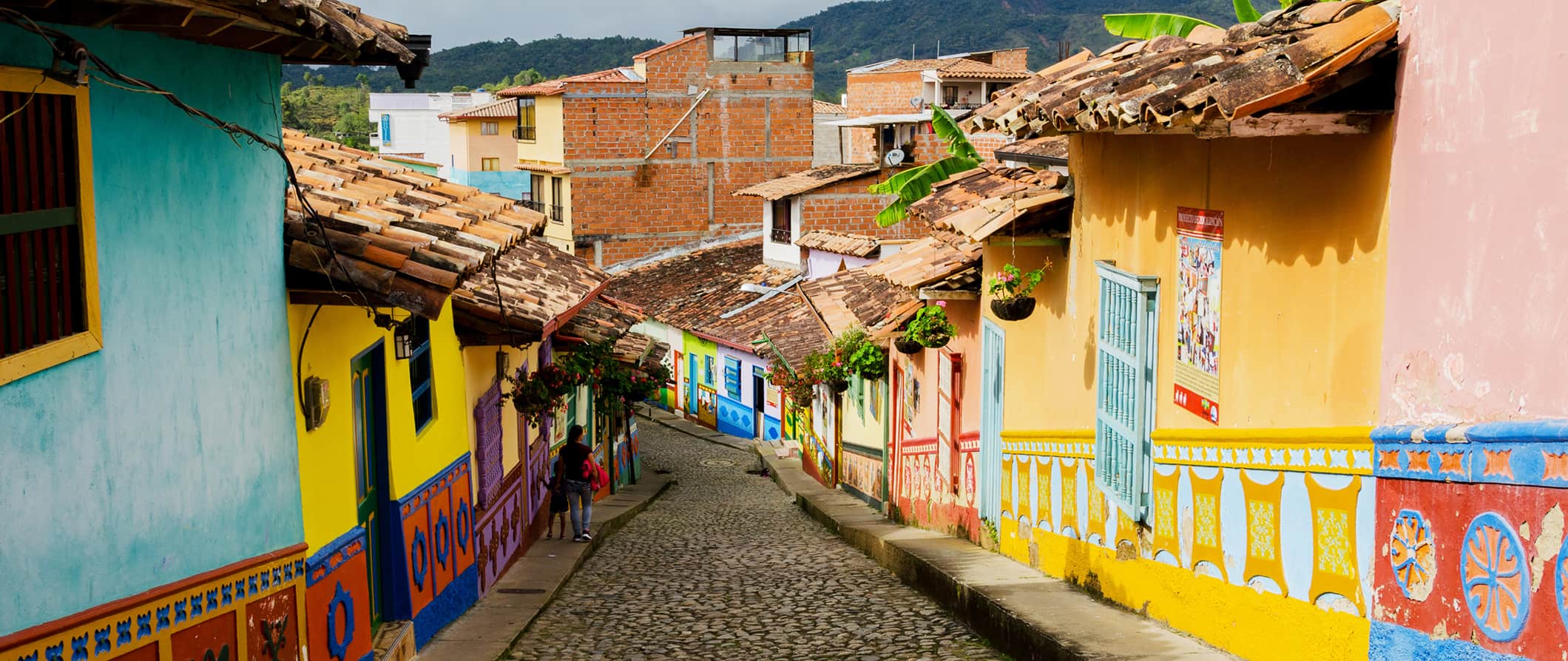
Colombia is fast becoming the travel highlight of South America. After decades of struggling with crime and cartels, Colombia has become a hub for digital nomads and budget backpackers. More and more people are visiting to soak up the sun and enjoy the country’s low cost of living.
I loved my time in the country. I had falsely assumed that six weeks would be enough to get a good sense of Colombia. After all, six weeks is a fair amount of time to spend anywhere.
But I was wrong. Given its size and the sheer number of activities, it was barely enough to scratch the surface. (Though I did manage to see a lot more than I thought I would!)
From unbelievable scenery and lush jungles (Colombia is home to 10% of the world’s biodiversity), beautiful beaches, incredible street are, stunning architecture, salsa dancing, delicious food and cutting edge culinary trends, the ancient sites of Tierradentro and San Agustín, hip cities like Medellín and Bogotá, Colombia is a travel paradise
I had such high expectations based on what I heard from other travelers, but the country lived up to all the hype. I wish I had more time there, but I’ll just have to go back!
This comprehensive Colombia travel guide gives you all the tips and tricks you need to plan your dream trip!
Table of Contents
- Things to See and Do
- Typical Costs
- Suggested Budget
- Money-Saving Tips
- Where to Stay
- How to Get Around
- How to Stay Safe
- Best Places to Book Your Trip
- Related Blogs on Colombia
Top 5 Things to See and Do in Colombia
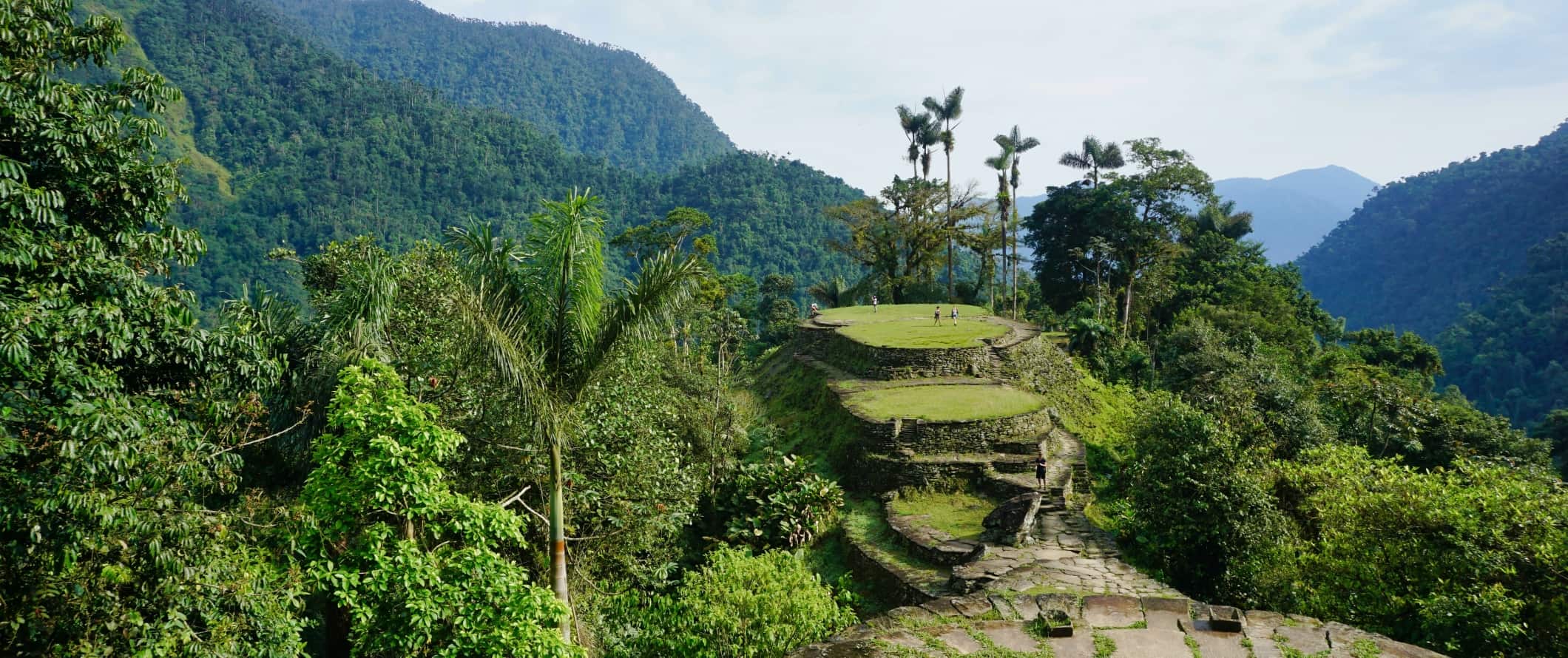
1. Get lost in Bogotá
Bogotá is Colombia’s vibrant capital. The historic downtown, La Candelaria, is filled with bright colonial buildings, museums, restaurants, bars, churches, and centuries-old houses. The foodie scene in the city is incredible, with a lot of international options and cutting-edge gastronomy.
2. Explore Tierradentro National Park
Located in southwestern Colombia, Tierradentro is one of the most important archaeological sites in South America. It contains over 100 underground tombs dating from the 10th century BCE that are the only examples of their kind in the Americas. It takes a day or two to hike all the paths around the tombs.
3. Walk the Cocora Valley
The Cocora Valley is home to Colombia’s national tree, the wax palm, which grows nearly 200 feet tall. This area also has one of the most popular day hikes in the country. You’ll cross jungle rivers, visit a bird sanctuary, and enjoy some stellar views and forest scenery. The route takes about five hours to hike.
4. Fall in love with Medellín
Medellín is one of the fastest-growing cities in Colombia. It has enough activities and things to do to fill weeks on end: microbreweries, museums, walking tours, spacious parks, street art, food tours and markets, incredible nightlife, and more. I loved it so much I spent a few weeks here.
5. Trek to the Lost City
The Lost City was built around 800 CE and contains 169 terraces carved into the mountains. It’s one of the most beautiful treks in the country, and the site is older than Machu Picchu! To visit, you need to hire a tour operator (you can’t do it by yourself). Treks last 4-6 days and cost 1,150,000 COP.
Other Things to See and Do in Colombia
1. journey to isla gorgona.
Once a prison island, Isla Gorgona is now part of a national park that lies 48 kilometers (30 miles) off the Pacific coast just southwest of Cali . You’ll see snakes, bats, monkeys, and sloths and the boat journey over also offers some chances to see humpback whales, sharks, and giant sea turtles. The remains of the prison can be seen too. Admission to the park is 51,000 COP per person.
2. Visit San Agustín
A UNESCO World Heritage Site, San Agustín is a small mountain town in the southwest that’s home to hundreds of pre-Columbian statues and burial mounds. Its collection of religious monuments and megalithic sculptures is the largest in Latin America. You need at least one full day (two to see it all in-depth). Admission to the park is 25,000 COP per person.
3. Journey into the Amazon
The Amazon basin covers almost one-third of Colombia and is the perfect place to experience the jungle. Leticia is a town bordering Peru and Brazil and is considered the jumping-off point for jungle excursions and visiting the indigenous villages on the Amazon River. The regions of Guaviare, Putumayo, and Caqueta are also popular for birding, waterfall hikes, and white-water rafting trips. For trekking, most tours involve taking a boat up the river from Leticia and a stop off with an indigenous tribe before arriving at Amacayacu National Park to begin your trek. Prices vary depending on the duration of your trip but expect to pay at least 150,000 COP.
4. Go diving
Colombia is home to some excellent dive sites. The tropical waters around San Andrés and Providencia (both of which are just off the coast of Nicaragua) are home to all kinds of fish and coral species. Tayrona National Park is an ideal place to go if you’re interested in getting up close to some sunken ships, while Gorgona Island is another hotspot for marine life. Humpback whales are common around Gorgona Island between August and October, and it’s also the only place in Colombia to see whale sharks. Expect to pay around 200,000-300,000 COP for a two-tank dive.
5. Learn about coffee
Colombia is home to some of the world’s best coffee, and a tour of a plantation is the best way to find out how your morning brew gets from farm to cup. Salento is the best base for doing coffee tours as it’s one of the oldest towns in the coffee-growing region. The Finca El Ocaso Salento plantation offers one of the most in-depth visits for learning about how the entire process works. Even if you’re not a coffee drinker (I’m not) it’s worth taking a tour to learn about this important industry. Tours start from 25,000 COP.
6. Take in the chaos of Cali
As Colombia’s third-largest city, Cali is the center of the sugar and coffee industry for the country, as well as being host to a terrific nightlife. The city is also the salsa capital of the world and there are tons of places to learn how to salsa dance here. Be sure to also relax in the famous Plaza de los Poetas (Square of the Poets), a park filled with life-like statues of local poets and visit the Iglesia de la Ermita (Ermita Church), one of the city’s most striking pieces of architecture thanks to its 20th-century Gothic design. Eat at the restaurants on Ave 9N in Granada, and try some chuleta valluna (a delicious Colombian dish of breaded and marinated fried pork cutlets).
7. Day trip to Popayán
Popayán rivals Cartagena as Colombia’s most impressive colonial town. It’s known as La Ciudad Blanca (The White City) because all the buildings are painted white. Popayán is also a college town (there are three universities here), and it has produced 17 presidents too. I really loved the slow pace of life and the surprisingly robust food scene here (eat at La Cosecha Parrillada, Restaurante Italiano y Pizzeria, La Fresa, and Mora de Castilla). While you don’t need a lot of time here (take the walking tour, climb the hill, see the churches, and you’re done), I do suggest staying longer to enjoy the slow pace of life. So much of Colombia is go-go-go; it’s nice to find a place that’s more “stay and relax awhile.”
8. Dance and party through Carnival
It may not be Rio de Janeiro, but Colombia has a great Carnival season. Although the Carnival in Barranquilla (which is the largest) takes place in February, Pasto and Manizales offer carnivals in the first week of January. The Carnaval de Blanco y Negro in Manizales is a wild few days of revelry (make sure you bring old black and white clothes if you attend as you’re certain to get doused in flour, paint, and foam!).
9. Do some extreme sports in San Gil
San Gil, located 300 kilometers (186 miles) north of Bogotá, is considered the outdoors capital of the country. Extreme sports fans love it here. You can go white-water rafting, paragliding, caving, rappelling, jungle trekking, and more here. Prices vary but expect to pay around 80,000 COP for paragliding and closer to 200,000 COP for a white-water rafting trip.
10. Relax in Tayrona National Park
Located on Colombia’s Caribbean coast, Tayrona boasts long stretches of golden beaches lined with coconut palms and a dense rainforest with lots of easy day hikes. I highly suggest you start early at the big entrance at El Zaino and exit the park through Calabazo. This underused route takes a whole day, and once you pass the Cabo San Juan campground, you get the last half of the trail to yourself. Tayrona is also home to over 20 dive sites, including shipwrecks and coral reefs, and two-tank dives are as little as 300,000 COP. For some beach time, head to picturesque Cabo San Juan. At the end of the sandy stretch of beach is a lookout point, topped with a hut of hammocks.
11. Head to the Providencia and San Andrés Islands
These islands, which are actually closer to Nicaragua than Colombia, are considered some of the most unspoiled places in the Caribbean. They have white-sand beaches, stunningly clear blue water, and few crowds (though, thanks to some recent press, Providencia is becoming a lot busier). Try to make it when tens of thousands of black crabs migrate to the sea, which happens twice a year for 1-2-weeks between April and July. It’s not always easy to nail the timing but the sight is truly something to see! As mentioned, the region is also perfect for diving.
12. Visit Guatapé
This pueblo is one of the most picturesque towns in Colombia and one of the most colorful in the world as most of the traditional homes have murals painted on the bottom half of their façades that depict animals, people, and shapes. Most people come to climb the steep (and difficult) staircase to the top of the monolithic Rock of Guatapé (La Piedra) for some of the best views in the country. Guatapé is a long day trip from Medellín (hostels in the city organize them throughout the week), so I recommend trying to spend at least a night here so you aren’t as rushed and can enjoy the area a little more.
13. Hike in Chingaza National Park
This is one of the biggest nature reserves in Colombia, home to more than 1,000 plant species and 187 bird species. Here you can learn about the Páramo ecosystem (an alpine tundra ecosystem) and how it affects the global water system. (Fun fact: Nearly 80% of Bogotá’s water supply comes from Chingaza.) If you’re going to hike, one of the best routes is the challenging hike to the summit of Lagunas de Siecha.
14. Hike in Minca
Minca is located in the foothills of the Sierra de Santa Marta Mountains. Once a sleepy backpacker town, it’s now a hot spot for tourists escaping the oppressive heat on the Caribbean coast who want to do some quiet hikes. One of the best hikes here is to Los Pinos, but it isn’t easy and takes 6-8 hours (though it’s worth the effort). Just make sure you bring lots of water and start early so you don’t get stuck in the dark.
15. Visit Cartagena
Cartagena is one of the most visited destinations in Colombia, thanks to a lot of direct flights and cruise ship visits. The city was founded by the Spanish in 1533 (though there were indigenous settlements in the area as far back as 4,000 BCE) It’s famed for its Old Town, a maze of cobbled alleys, flower-covered balconies, and large churches on spacious plazas. Despite the crowds (and there are a lot of crowds), I really enjoyed Cartagena. While there aren’t a lot of tourist activities (you can do most of them in a single day), what makes it a wonderful place to visit is just that: it’s somewhere you can slow down, relax, and gorge on the phenomenal food!
16. Take a free walking tour
One of the first things I do when I arrive in a new city is to take a free walking tour. It’s the best way to see the highlights and connect with a local guide who can answer all your questions. All the major cities have free walking tours in English that provide a solid introduction to the country. Just make sure to tip your guide at the end!
For information on specific destinations in Colombia, check out these guides:
- Bogotá Travel Guide
- Cali Travel Guide
- Cartagena Travel Guide
- Medellín Travel Guide
- Santa Marta Travel Guide
Colombia Travel Costs
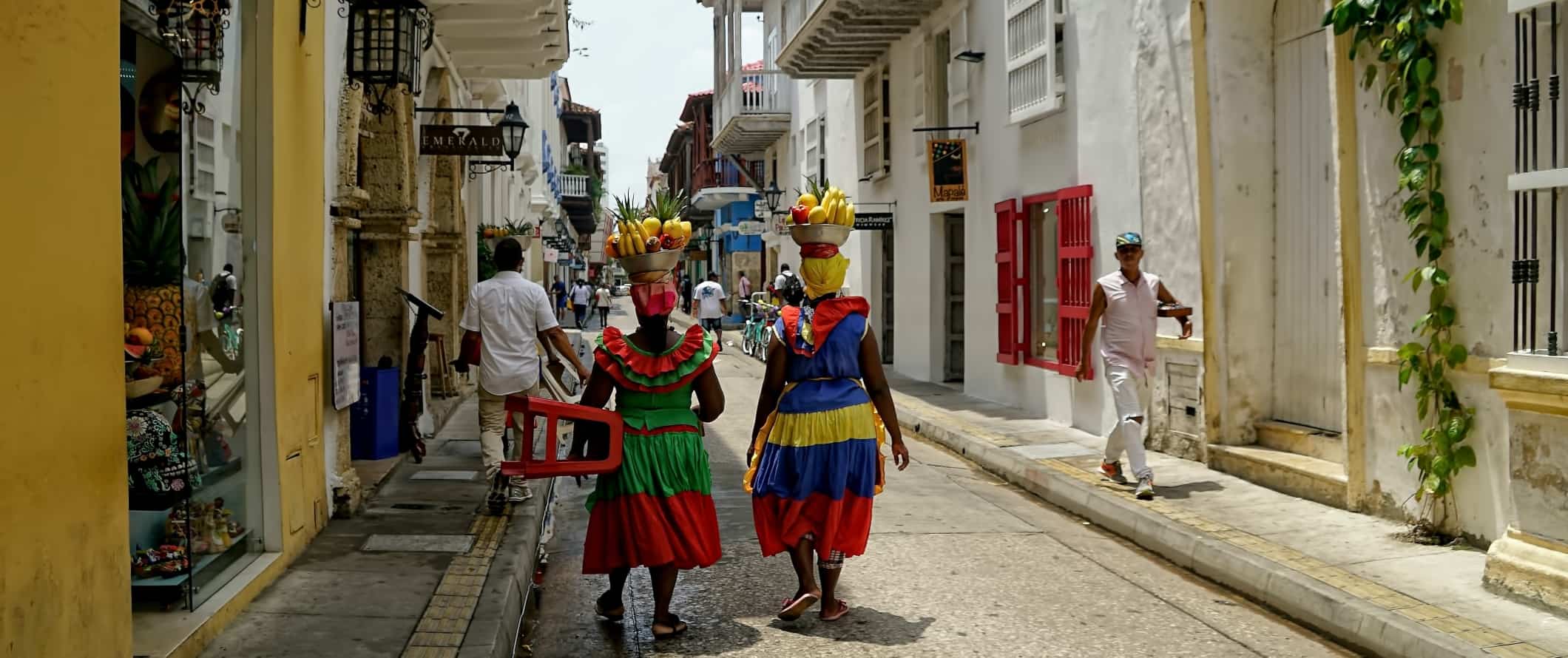
Accommodation – Most hostel dorm rooms in Colombia cost 30,000-45,000 COP per night, though in some cities and towns you can find them as low 15,000 COP. Private hostel rooms cost around 40,000 COP, though during the high season and in major metropolitan areas, it can be double that or even more. Free Wi-Fi and self-catering facilities are common, and many hostels also include breakfast.
Budget hotels in Colombia cost around 60,000 COP per night. On the coast and in the high season, however, most places are closer to around 120,000 COP. If you’re looking to stay at some of the really lovely boutique hotels the country has to offer, expect to pay around 650,000 COP or more a night.
Airbnb is available in the larger cities, with private rooms starting around 50,000 COP per night but going as high as 150,000 COP if you don’t book early. For an entire home or apartment, prices start at 150,000 COP but average closer to 280,000 COP.
There aren’t many campgrounds in Colombia, but hostels and guesthouses sometimes let you pitch a tent on their property. They charge you as much as a dorm bed though. Avoid wild camping here as it isn’t very safe.
Food – Colombian food is a blend of indigenous, Caribbean, and European traditions. While ingredients and popular dishes vary by region, common staples include maize, potato, cassava, rice, and all kinds of tropical fruit (dragon fruit, papaya, guava, passionfruit). Fried plantains, chicken soup, tamales, empanadas, meat pies, and roasted piglet are just some of the delicious popular dishes you’ll encounter.
A meal at a restaurant serving local food costs between 10,000-15,000 COP in the major cities and about 6,000-10,000 COP in the countryside. You can also find a lot of cheap food like empanadas for 2,500 COP (they make the best snack food). An arepa on the street is about 3,000-5,000 COP. Ceviche, which is popular throughout the country, costs around 15,000 COP.
Most Western restaurants cost 20,000-30,000 COP for a main dish. For fast food (think McDonald’s), expect to pay 15,000-20,000 COP for a combo meal.
Beer at the bar can be found for as little as 4,000 COP but you’re likely to pay double at a backpacker bar. Cocktails, which are becoming really popular here, cost around 20,000 COP.
Grocery shopping is very cheap, costing about 80,000-100,000 COP per week for staples like rice, beans, produce, and some meat or seafood. Most hostels have kitchens so you can make yourself breakfast and sandwiches to lower your food costs.
Backpacking Colombia Suggested Budgets
If you are backpacking Colombia, my suggested budget is 115,000 COP per day. This assumes you’re staying in a hostel dorm, cooking some meals and eating cheap street food, taking public transportation to get around, limiting your drinking, and sticking to mostly free or cheap activities like free walking tours and enjoying nature.
On a mid-range budget of 235,000 COP per day, you can stay in a budget hotel or private Airbnb, eat out for all your meals, enjoy a few drinks, take some guided tours, take a couple of cheap domestic flights, and do more paid activities like visiting museums and taking a food tour.
On a “luxury” budget of 500,000 COP per day, you can stay in a hotel, eat out anywhere you want, drink more, take more domestic flights, and do whatever tours and activities you want. This is just the ground floor for luxury though. The sky is the limit!
You can use the chart below to get some idea of how much you need to budget daily, depending on your travel style. Keep in mind these are daily averages – some days you spend more, some days you spend less (you might spend less every day). We just want to give you a general idea of how to make your budget. Prices are in COP.
Colombia Travel Guide: Money-Saving Tips
Colombia is generally an inexpensive destination to visit. Accommodation is cheap unless you are staying at major hotel chains. There are a ton of markets with cheap food, local attractions are affordable, and buses are cheap. But if you want to save even more, here are some extra ways to save money in Colombia:
- Eat like the locals – It’s easy to eat on a budget here if you stick to local Colombian food. Street food is super cheap, allowing you to fill up on a budget. Skip the fancy restaurants and Western food.
- Avoid drinking cocktails – Colombia has a lot of awesome cocktail bars now — especially in Medellín — but these drinks are expensive, usually costing around 20,000 COP (sometimes up to 30,000 COP). If you’re on a budget, skip the cocktails and stick to beer.
- Cook your food – While local food is really cheap, you can also save some money by grocery shopping. It’s not as glamorous but shopping for some of your meals will help you cut costs so you can afford to eat out more here and there.
- Avoid the hostels on the Caribbean coast – The hostels on the Caribbean coast were pretty lackluster. They were expensive and didn’t have great facilities, especially the bigger “resort” ones in beachside towns like Palomino. Instead, you can find comparatively cheap budget hotels on Booking.com for less than a private room in a hostel (and only slightly more than a dorm bed).
- Avoid “Gringolands” – Everything where the gringos cluster are is going to be double its normal price. Avoid staying in areas with lots of tourists and expats (like Poblado in Medellín, Cartagena’s Old Town, or Park 93 in Bogotá) since you’ll end up paying more for everything.
- Stay with a local – Couchsurfing connects you with locals who not only give you a free place to stay but can share their insider tips and advice. It’s the best way to save money and connect with a local.
- Fly Viva Air – If you’re planning to fly around Colombia, the best deals are on Viva Air. It has the cheapest fares in the country (though it flies to the fewest places). It’s best to book a few weeks in advance. (LATAM and Avianca, the two major carriers, also have deals sometimes so check their websites too.)
- Use miles and points – Get to Colombia by using your miles to fly Avianca (which is part of Star Alliance). There are also a lot of hotel chains in Colombia where you can use points too. If you have miles and/or points, you can burn through a lot of them in Colombia — and the redemption rates are excellent! And if you want to learn how to start earning miles for free travel, this post can show you how to get started!
- Avoid the airline surcharge – Non-Colombians are charged higher airfare prices than locals. If you look at the non-local version of the website, you won’t see the super saver cheap fares. To get around this, load up the local Spanish versions of an airlines’ website. Then use your browser extension to translate the pages and book away! This gives you the lower, Colombian prices, and no one will challenge you at check-in about your fare.
- Take Uber – Uber is the cheapest way to get around Bogotá, Cali, and Medellín. That said, Uber is actually illegal so don’t sit in the back seat or you might get stopped. I also like to tip the Uber drivers here, since the fares are so cheap and they are taking a risk. But all the drivers I met did this out of necessity — they couldn’t pay their bills if it weren’t for Uber.
- Haggle with taxi drivers – There are no meters in Colombia. While prices from the airports are regulated and non-negotiable, everything else is just a matter of your bargaining skills. If you’re going to take taxis, haggle before you get in the car.
- Take free walking tours – Most major and medium-sized cities in Colombia have free walking tours. They are a good way to see the city on a budget and connect with a guide who can answer all your questions. My favorites include Free Walking Tour Cartagena, Free Walking Tour Bogotá, and Real City Tours Medellín.
- Pack a water bottle – The tap water here is generally safe to drink so bring a water bottle with you to avoid buying single-use plastic. My preferred bottle is LifeStraw , which has built-in filters to ensure your water is always clean and safe.
Where to Stay in Colombia
Looking for a budget-friendly place to stay? Here are some of my favorite accommodations in Colombia:
- Media Luna (Cartagena)
- Republica Hostel Cartagena (Cartagena)
- Los Patios Hostel Boutique (Medellín)
- Hostel Rango Boutique
- Sugar Cane Hostel (Medellín)
- Selina (Bogotá)
- The Cranky Croc Hostel (Bogotá)
- La Brisa Loca (Santa Marta)
- Dreamer Santa Marta (Santa Marta)
- Hostel Masaya Santa Marta (Santa Marta)
- Viajero Cali Hostel & Salsa School (Cali)
- Oasis Cali Hostel (Cali)
How to Get Around Colombia
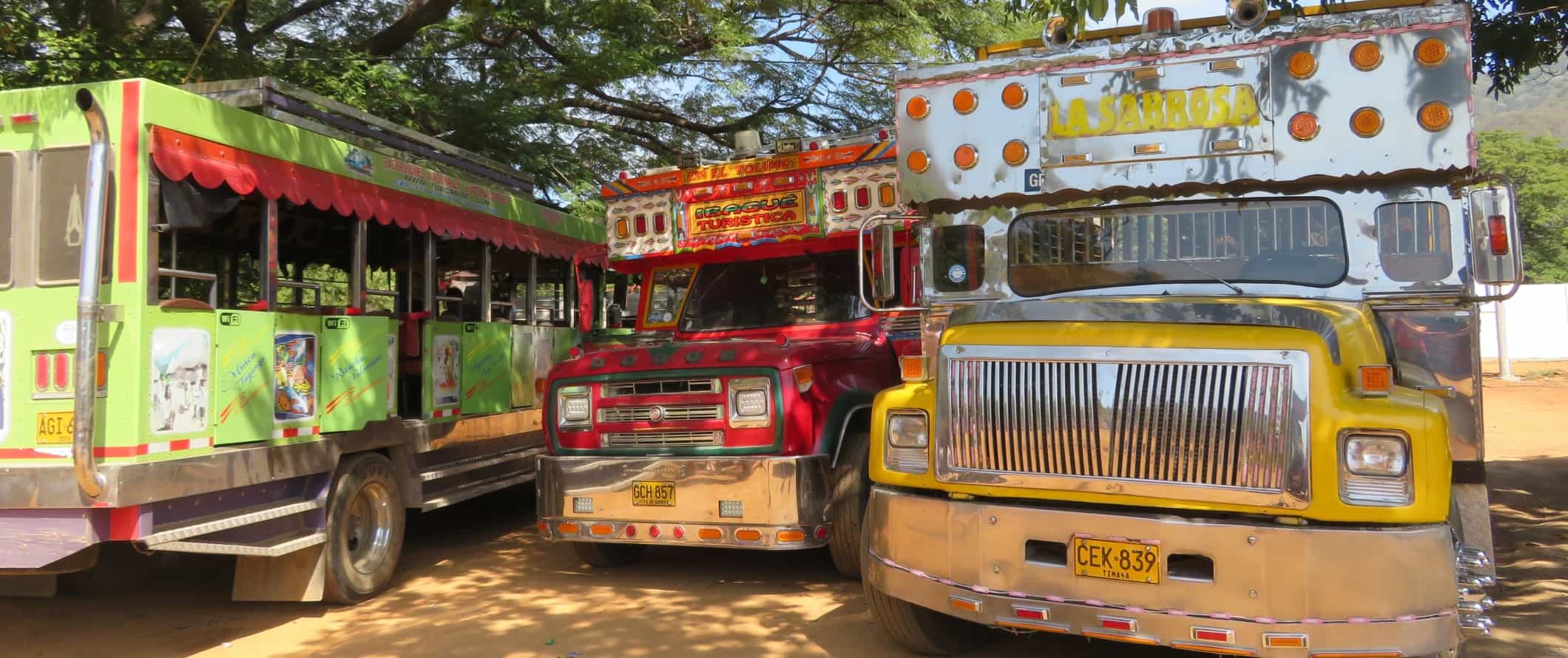
Public Transportation – Local transportation is cheap here. The metro in Medellín is only around 2,500 COP for a one-way fare. Local buses are the most common type of transportation in towns and cities. The fare is usually between 1,000-2,500 COP.
Colectivo – A colectivo in Colombia is a minibus, a shared taxi, or a large Jeep (and really, anything else that gets you around). These are run by private owners and are used mostly for short journeys between towns. You have to negotiate the price ahead of time. Since they’re faster and more direct than regular buses, they’re also more expensive.
It’s very common for travelers to use a colectivo . Drivers usually yell out destinations as they pass on the streets, or they approach you to see if you’re going their way.
Bus – Intercity buses are the most common way to get around Colombia. A bus from Bogotá to Medellín costs around 52,500 and takes around 9 hours while a bus to Quito, Ecuador from Bogotá costs around 181,000 COP and takes over 24 hours. Medellín to Manizales is 31,000 COP and Salento to Cali is 59,000 COP. On average, expect to spend 20,000-40,000 COP for a bus.
Companies like Expreso Palmira and Expreso Trejos are reliable companies, and they make it easy to research schedules and fares on their websites.
Flying – Budget airlines are often cheaper than buses in Colombia, so make sure to search for flights to compare prices. Viva has the cheapest flights (though they also have strict luggage restrictions). A flight from Bogotá to Medellín, for example, can be found for as little as 55,000 COP! Book early to find the best deals.
Train – There are no trains in Colombia.
Car rental – Cars can be rented for as little as 90,000 COP per day, though you don’t need one to get around the cities. Additionally, since break-ins are common I’d avoid renting a car unless you’re doing a specific trip beyond the cities. Drivers need to be at least 21 and have an International Driving Permit.
When to Go to Colombia
Colombia’s location near the equator keeps the climate pretty consistent throughout the year, with average daily temperatures hovering around 24°C (75°F) near the coast and 7-17°C (45-63°F) at higher elevations.
The peak season for tourism is from December to March, as well as the week before Easter (Semana Santa). Prices are most expensive during this time, but the country overall is fairly dry. If you’ve come to have fun, time your visit for the Carnival in Barranquilla, which takes place every February. This is the biggest Carnival, but Pasto and Manizales also have lively carnivals in the first week of January.
The rainy season varies per region. In the mountainous Andean area, there are two dry and two wet seasons. The driest months occur from December-March and then July-August. In Southern Colombia, rainfall is more frequent, but the showers never last long.
If you’re planning on doing a bit of everything in Colombia — from hiking in the mountains to lounging on beaches and visiting ruins — December to March is definitely the best time to visit so you can take advantage of ideal conditions all across the country. Just be prepared for bigger crowds.
How to Stay Safe in Colombia
Colombia requires a lot of caution. On the whole, it’s generally safe and you’re not going to get kidnapped or anything. But there is still a lot of petty crime in the country, especially at night.
In fact, there’s a local expression about this in Colombia: “No dar papaya” (Don’t give papaya). Essentially, it means that you shouldn’t have something “sweet” out in the open (a phone, computer, watch, etc.) that would make you a target. Keep your valuables hidden, don’t wander around places you shouldn’t at night, don’t flash money around, avoid coming out of nightlife spots alone at night, etc.
Simply put: Don’t put yourself in a position where people can take advantage of you.
Do not do drugs here. You’re going to get a lot of offers but don’t be one of those people. First, it’s a huge insult to Colombians, who are trying to shed their drug-related past and don’t want to be associated with the cartels. Second, it’s illegal (although small amounts of cocaine and marijuana are decriminalized). Third, there’s a lot of violence associated with it, and you can end up in some bad situations. Don’t do drugs here.
You should also use caution when withdrawing money from an ATM. Avoid the ATMs on the street if possible and go into the bank to use the ATM. That way you can put your money away discreetly without being watched.
If you are eating out, keep your backpack on your lap or place your foot or a chair leg through a strap. It is very common for someone to try and snatch your bag so keep it secure at all times.
If you’re worried about getting ripped off you can read about common travel scams to avoid here. There’s a lot so keep an eye out!
Look for hotels or hostels with 24-hour security. You always want someone around in case you need assistance.
Always trust your gut instinct. Make copies of your personal documents, including your passport and ID. Forward your itinerary along to loved ones so they’ll know where you are.
If you experience an emergency and need assistance, dial 123.
Because of the current situation in Venezuela, it’s a good idea to avoid the border towns of Cúcuta and Maicao.
For more in-depth coverage of how to stay safe in Colombia, check out this post we wrote that answers some frequently asked questions and concerns.
The most important piece of advice I can offer is to purchase good travel insurance. Travel insurance protects you against illness, injury, theft, and cancellations. It’s comprehensive protection in case anything goes wrong. I never go on a trip without it as I’ve had to use it many times in the past. You can use the widget below to find the policy right for you:
Colombia Travel Guide: The Best Booking Resources
These are my favorite companies to use when I travel. They consistently have the best deals, offer world-class customer service and great value, and overall, are better than their competitors. They are the companies I use the most and are always the starting point in my search for travel deals.
- Skyscanner – Skyscanner is my favorite flight search engine. They search small websites and budget airlines that larger search sites tend to miss. They are hands down the number one place to start.
- Hostelworld – This is the best hostel accommodation site out there with the largest inventory, best search interface, and widest availability.
- Booking.com – The best all around booking site that constantly provides the cheapest and lowest rates. They have the widest selection of budget accommodation. In all my tests, they’ve always had the cheapest rates out of all the booking websites.
- Get Your Guide – Get Your Guide is a huge online marketplace for tours and excursions. They have tons of tour options available in cities all around the world, including everything from cooking classes, walking tours, street art lessons, and more!
- SafetyWing – Safety Wing offers convenient and affordable plans tailored to digital nomads and long-term travelers. They have cheap monthly plans, great customer service, and an easy-to-use claims process that makes it perfect for those on the road.
- LifeStraw – My go-to company for reusable water bottles with built-in filters so you can ensure your drinking water is always clean and safe.
- Unbound Merino – They make lightweight, durable, easy-to-clean travel clothing.
- Top Travel Credit Cards – Points are the best way to cut down travel expenses. Here’s my favorite point earning credit cards so you can get free travel!
Colombia Travel Guide: Related Articles
Want more info? Check out all the articles I’ve written on Colombia travel and continue planning your trip:
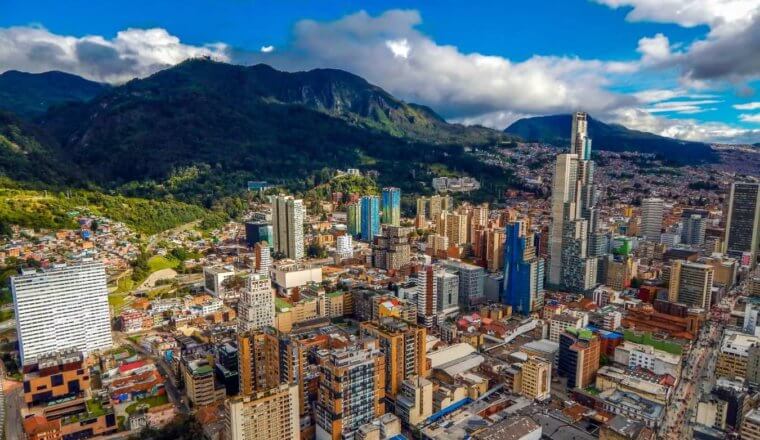
Where to Stay in Bogotá: The Best Neighborhoods for Your Visit
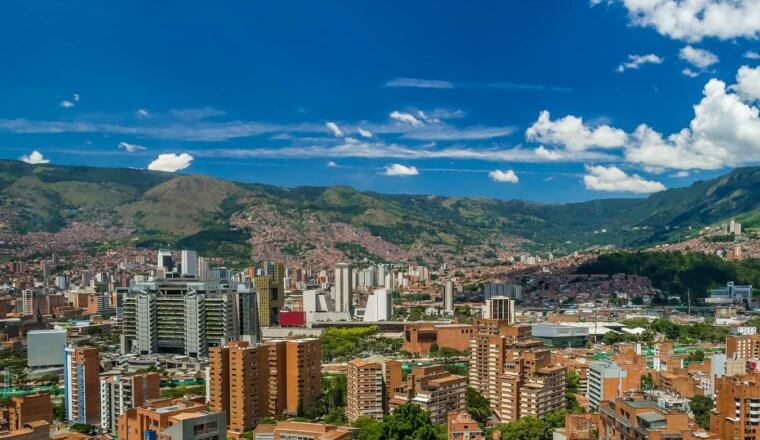
Where to Stay in Medellín: The Best Neighborhoods for Your Visit
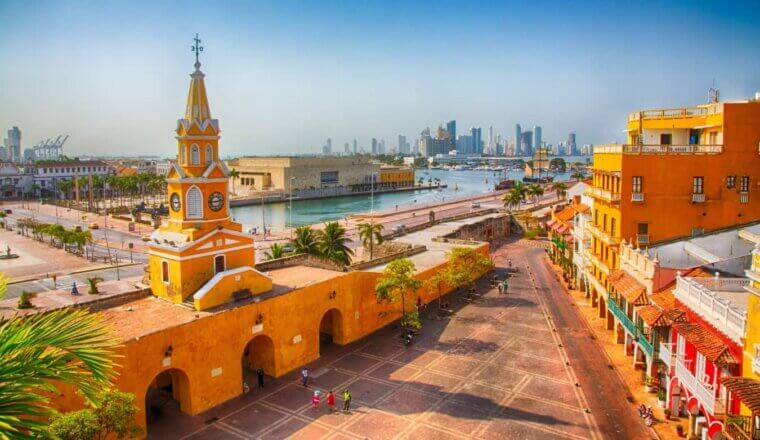
Is Colombia Safe to Visit?
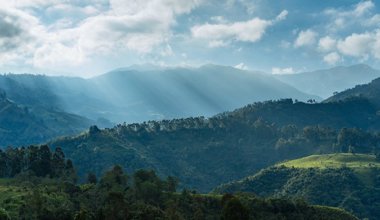
How Much Does it Cost to Travel Colombia?
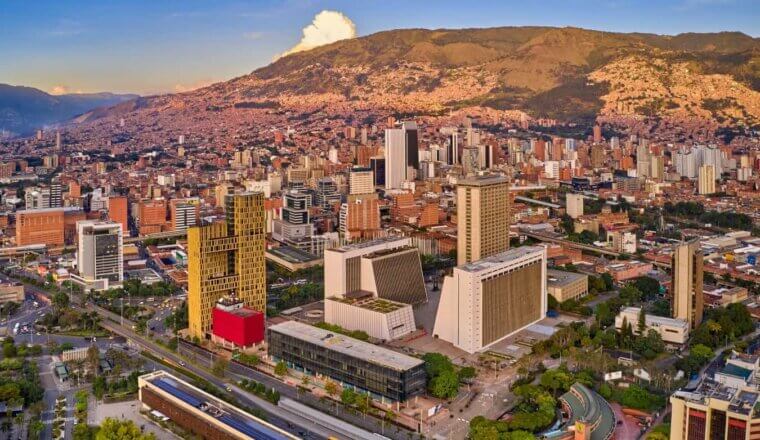
14 Things to Do in Medellín (and the ONE thing NOT to do!)
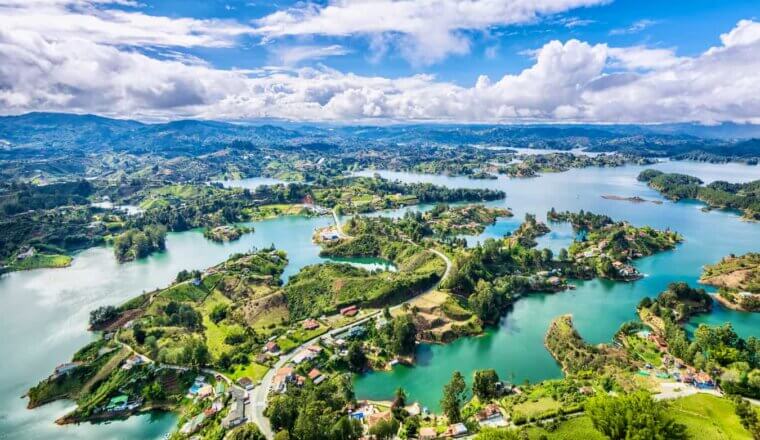
My 21 Favorite Places to Visit in Colombia
Get my best stuff sent straight to you, pin it on pinterest.
- Where To Stay
- Transportation
- Booking Resources
- Related Blogs

- Contact Us Plan Your Trip
- GBP (£) USD ($) EUR (€)

- Colombia Travel Tips
- Getting to Colombia
- Entry Requirements
Visiting Colombia doesn’t have to be intimidating. Preparation always makes a holiday go smoother. After living, travelling and organising tours in Colombia for several years, we’ve put together some information you’ll find useful. Read these Colombia travel tips before your adventure begins:
• Language: Spanish, English is not widely spoken
• Capital: Bogota, many international flights arrive and depart from Bogota
• Time: Colombia local time is GMT -5
• Currency: Colombian Peso (COP)
• Emergency number: 123
• Electrical Supply & Plugs: Colombia uses 110 volts AC (60 Hz) and most of the sockets are for appliances using 2 flat pin plugs (similar to US standard)
• ATM Availability: In major towns, but always carry some cash
• Public Phone Services: There are widespread public phone services for making both local and international calls
• Mobile Telecommunications: There are three companies that provide mobile telecommunications – Movistar, Claro and Tigo
• Internet Access: The majority of hotels and hostels provide free Internet access for guests. There are also internet cafes to rent a PC with Internet connection at a modest price in large and medium-sized cities
• Drinking Water: Although major cities have excellent running water services, we recommend avoiding taps and drink bottled water instead
• Tipping: The suggested service is normally 10%. Always check the bill to verify if the service has been already included. We hope this information is useful while preparing to visit Colombia
If you have any questions or require more information, feel free to shoot us an email at [email protected] .
Booking completed. You will receive email with booking confirmation.
Payment Gateway Error
We are sorry but we are facing our payment gateway error. Please try again soon.
AVAILABILITY ERROR
We are sorry but we cannot complete booking due to availability change. Please try again with new dates.
BOOKING ERROR
Booking key error.
We are sorry but we cannot complete booking due to booking key error. Please try again.
Almost done! You will now be directed to PayPal to complete the secure booking process. You're so close to booking an amazing holiday in Colombia!
Don't miss out!
Hi there, let us inspire you for your next holidays and get exclusive offers and updates on our latest tours!
- Terms & Conditions
- Special Events
- instagram twitter facebook rss youtube
Destinations
- Cook Islands
- New Zealand
- Papua New Guinea
- USA (Hawaii)
Go Your Way...Tailor-made
- Beach/Islands Escapes
- Classics (Bestsellers)
- Go As You Please
- Private Experiences
- Self-Drives
- Snowbird/Long Stays
- Stays of Distinction
- Stopovers/City Breaks
- Tailor-made Travel Ideas
- Vacation Packages with Air
Other Ways to Go
- Active & Adventurous
- Cruises & Sailing
- Escorted Coach Touring
- Holidays of a Lifetime
- 18 to 30 Somethings
- Rail Travel Ideas
- Small Group Touring
- Speciality Groups & Events
- Family Vacations
- Luxury & Beyond
- Romance & Honeymoons
- Singles Friendly
- South Africa
- More Countries

- China & Tibet
- Indonesia (Bali)
- Chile & Easter Island
- Ecuador & Galapagos
- United States
- Bucket List Travel Ideas
- Multi Country Vacation Ideas
- United Arab Emirates (Dubai)
- Australia & South Pacific
- Africa & Middle East
- Central & South America
- US & Canada
- Idyllic Islands
- UK & Europe
- Arctic & Antarctica
- Presidents Message
- About Goway Travel
- Special Services & Expertise
- Company History
- Goway's Early Days
- The World of Travel in 1970
- Goway Timeline
- Our Website
- Awards & Recognition
Our Services
- Why Travel with Goway
- Destination Knowledge
- Group Service
- Repeat Passenger Privileges
- Make it Extra Special
- Your Holiday Your Way
- Value Added Extras
- 50+ Reasons Why to Go Downunder with Goway
Our Policies
- Booking Conditions
- Commitment to Accessibility
- Consumer Protection Plans
- Our Guarantee
- Privacy Policy
- Travel Insurance
News & Media
- Globetrotting Blog
Globetrotting Magazine
- Press Release Centre
Online Presentations
- Travel Expos
- Different Jobs at Goway
- Train to be an Expert
- Current Openings
- Why Work at Goway
- Employment FAQ's
- Testimonials
- World's Idyllic Islands
- You are here
- › Travel Information
- › Central & South America
- › Colombia
- › Introduction

Colombia Travel Information

No longer a destination for just daredevils, this extraordinary country has battled decades of civil turmoil to emerge as one of South America's hottest new destinations. It is jammed with unspoilt mountains, coastline and jungle, not to mention stunning archaeological sites and vibrant culture .
Ten years ago, Colombia was famous only for its drug dealers, left-wing guerrilla groups and paramilitaries. But with the militant groups now at their weakest point in decades, this beautiful country is enjoying a travel renaissance with more and more tourists emboldened to visit. And they are finding much to explore. Natural attractions include rippling mountains, expanses of the Amazon Basin, large lakes, vast plains and a Caribbean coastline that twinkles with azure water. Meanwhile man-made wonders include lost cities, fabulous pre-Columbian sculpture and colourful colonial houses adorn the towns.
Until now, Colombia has received relatively few travellers in comparison with other South American nations, and visitors can expect an unfeigned welcome and genuine curiosity from its people.
At Goway we believe that a well-informed traveller is a safer traveller. With this in mind, we have compiled an easy-to-navigate travel information section dedicated to Colombia.
Learn about the history and culture of Colombia, the must-try food and drink, and what to pack in your suitcase. Read about Colombia's nature and wildlife , weather and geography, along with 'Country Quickfacts' compiled by our travel experts. Our globetrotting tips , as well as our visa and health information, will help ensure you're properly prepared for a safe and enjoyable trip. The only way you could possibly learn more is by embarking on your journey and discovering Colombia for yourself. Start exploring… book one of our Colombia tours today!
Extend Your Trip
After your Colombia tours , why not consider another of Goway's Latin America tours . These include a large selection of other exciting countries in Central and South America. We offer Chile vacation packages and Easter Island tours, Ecuador vacation packages which include Galapagos cruises , Peru vacation packages which include Machu Picchu tours and Brazil tours including Iguassu Falls tours among many others.
Book your Colombia tour with Goway!
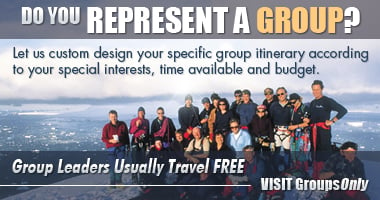
- Trip Finder
What our travelers say
Goway toolkit.
Need help planning your holiday? Our toolkit is a great place to get started.
Airfare Only
Looking for an airfare only? Ask the airfare experts at GowayAir.

Customise Your Trip
Let us customize a dream holiday for you. Your trip your way!

Get a Trip Quote
Need help in planning your perfect holiday? A FREE travel quote!

Need a Visa?
Do you need a Visa to enter? Let us assist with your travel documents.

The magazine for world travellers. Get your FREE subscription today.

eNewsletter Sign Up
Stay up to date with the latest travel info and destination deals!

Order a Brochure
Planning your next trip? Our brochures are loaded with great ideas.

Enjoy our online presentations from the comfort of your home.

Travel Information
- Introduction
- Country Quickfacts
- Food and Drink
- Geography and Maps
- Nature and Wildlife
- Travel Tips, Visas & Health
- Colombia FAQs
- Beach & Island Escapes
- Single Friendly
- Vacation Packages with Airfare

Featured Tours
- Highlights of Downunder
- African Safaris
- China Odyssey
- A World in One Country
- Classic Australia
- Classic Thailand
- Essential New Zealand
- Rio, Iguassu Falls, & Buenos Aires
- Essential Peru

BC Reg. #833-0; TICO Reg. #1543989; CST #2016613-20
- Accessibility
Web Design by Atomic Motion Built by Bright Interactive
GOWAY DESTINATIONS
- Share full article

You Haven’t Seen Blue Until You’ve Seen San Andres
The island, close to Nicaragua but part of Colombia, boasts waters in seven shades of the color. Counting them — from a boat, from a cay, from the shade of a coconut tree — is a meditative experience.
The attractions on San Andres include the tiny islands known as cays. Johnny Cay, which sits across the water from the more populated northern part of San Andres, looks like the dictionary entry for “deserted island.” Credit... Toh Gouttenoire for The New York Times
Supported by
By Shannon Sims
- March 11, 2024
On San Andres, a small Colombian island in an archipelago off the Caribbean coast of Nicaragua, counting the blues in the famous “Sea of Seven Colors” is on every visitor’s to-do list. It’s a midday activity done en route as you cruise among the cays, or keys, dotting San Andres’s eastern side: low-lying (mostly) uninhabited specks that aren’t much more than coral topped with palm trees and circled by sandbars.
From my bobbing perch, I counted six: a deep sapphire, a dusky azure, stripes of teal, turquoise and cerulean and, in the distance, a swath of brilliant cyan against the edge of a tiny, palm-fringed island.
“Do you see seven?” the boat’s captain asked.
When I told him my tally, he laughed. “Six?” he said. “That means you can still relax a little more.”
San Andres is not on the radar of many U.S. travelers, but in Latin America, and especially among Colombians, it is a coveted honeymoon destination or a long-weekend retreat — a spot in the middle of the ocean to disconnect from whatever weighed you down on the mainland.

Connecting with history
The archipelago of San Andres and Providencia is more than 400 miles north of the mainland of Colombia, and closer to 100 miles east of Nicaragua, but thanks to a historical wrinkle that is still being ironed out, it is part of Colombia.
Kent Francis James, 73, was the archipelago’s governor during the 1990s and advised the current local and national government on boundary issues with Nicaragua. But his passion, he said when I met him on San Andres, is helping tourists connect more deeply with the island’s history.
“We want you to come here not just to get your skin burned, but to bring home a better understanding of Caribbean history,” he said, as we sat on his home’s balcony and enjoyed the view of the water in the distance, framed by bougainvillea and palm trees.
Mr. James scanned the horizon and pointed out the shipwrecks that litter the island’s waters. “We were geographically on the route of the Spanish going up the coast with gold, so this is the place the pirates used to be on watch,” he explained, describing how voyagers often underestimated the shallow waters surrounding the islands’ many cays and ran aground — to the delight of pirates like the Welsh-born Sir Henry Morgan, who is believed to have used San Andres as a base of operations.
We were technically in Colombia, but Mr. James spoke in clipped English — his accent itself a nod to the island’s history.
Although it is believed that the Dutch and Christopher Columbus landed on the archipelago, it was the British who settled San Andres around 1630. English was the island’s first language, and still today it’s spoken by the native islanders.
Unlike most places in Latin America, San Andres has no record of Indigenous peoples on the island. It was seemingly uninhabited when the Europeans arrived. And that’s why when locals refer to “native” islanders, they are referring to the descendants of the original British settlers or, more frequently, the descendants of the once-enslaved Africans those settlers brought over.
This Afro-Caribbean ethnic group is called Raizal, a takeoff of the Spanish word for “roots.”
Posadas Nativas
Cleotilde Henry, 75, is one of the island’s Raizal leaders. Her family traces back to the African slave trade, she explained, as she set out crunchy slices of fried breadfruit and balls of sweet coconut on her dining room table. She didn’t make the treats just for me — she sets them out every day for the tourists who rent rooms in the upstairs of her home through the island’s posadas nativas , or native inns program.
“I was born in this house,” she said, pointing around the small living room to yellowed family portraits in wooden frames and crocheted table coverings. “So when I thought about what I could do to make money from tourism, the only thing I had was this house.”
Today Ms. Henry, who is also the president of the archipelago’s Posadas Nativas Association , rents 12 rooms, which can be found under the name “ Cli’s Place ” on travel-booking websites like Booking.com.
Across the archipelago, around 200 homes have been designated “posadas nativas,” offering an opportunity for tourists to stay with a local family — usually under the watchful eye of the matriarch — in their home, and to eat local, Raizal foods.
It’s the local solution to a universal challenge: how to retain the unique identity of a place when tourism starts booming. Less than 20 years ago, Raizal people accounted for 57 percent of the population of San Andres, but each year that number gets smaller, as Colombians from the mainland are lured to the blue waters of island life.
A bikini and a golf cart
Although the beaches of San Andres are not among the most beautiful in the world, the water a short distance offshore is, thanks to the sunken reefs, and so many visitors skip exploring the interior of the island in favor of getting wet.
Each cay differs from the next. Johnny Cay, which sits across the water from the more populated northern part of San Andres, looks like the dictionary entry for “deserted island”: a clump of palm trees ringed by white sand. Rocky Cay is not much more than its namesake rock, with a lean-to beach bar and a rusty shipwreck sticking out of the water beside it. You reach Haynes Cay by wading through waist-deep water, holding a wobbly rope connecting the cay to a no-frills restaurant built on a sandbar. A typical day vacationing in San Andres includes bopping among the cays, pausing to doze against their palm trees or swim in the water around them, and, along the way, counting blues.
Like the pirates of the past, today’s snorkelers and scuba divers are delighted by the sunken ships dotting the waters, as they get to explore the underwater ecosystems created by those wrecks. In 2000, the U.N. Educational, Scientific and Cultural Organization established the massive Seaflower Biosphere Reserve , a vast protected marine area surrounding the islands.
“It’s like a mountain range under the water here, and that’s why we have deep spots but also these sandbars and cays,” explained Jorge Sanchez, 68, a former dive instructor on the island who invited me to his home one afternoon to view topological maps of the area’s ocean floor. Waving his hand across one map, he added, “The ocean species don’t know where the border is between Colombia and Nicaragua, so this is a great place to see all kinds of animals from different places.”
Even if you don’t enjoy the waves, San Andres is a gorgeous setting to enjoy the seven shades of blue from afar. And the not-too-steep hills and smooth-enough roads mean that the breeziest, most fun way to do that is by renting a mule (pronounced moo-LAY), a little golf cart, the typical way visitors get around the island.
I’d never driven a golf cart any significant distance, so when Ms. Henry suggested that I put on my bathing suit and take one around the island, I balked. But about an hour later, I was smiling like a fool, the ocean wind blowing back my hair as I chugged down the road ringing the coast at about 25 m.p.h., with motorcycles zipping around me. I cruised past the cays, hopping in the water when it called to me, making my way down to the island’s less populated southern end. I stopped for lunch at the Raizal restaurant Miss Janice Place for fried fish and coconut rice.
On the way back, I planned to swing by Mr. James’s house, to tell him about my day. Without a good cell signal on the island, the only way I could do this was by popping in, so I headed toward his place, until the chugs of my mule became less frequent, and I finally realized the engine had shut off. My trusty mule was sliding backward down the hill. I slammed on the brake, slowing the slide, but couldn’t get the engine to turn over again. Fortunately, some utility workers witnessed the scene, suppressed their laughter and came to my rescue. They improvised a solution and hauled the golf cart to the top of the hill using long wires. I told them I was visiting Mr. James, and one of the workers turned and shouted over a wall of bushes — “Mister Kent! We found an American!”
Grinning, Mr. James emerged from his property to greet me, and as I waved a thank you to my utility-worker heroes, he explained he wasn’t surprised to see me.
“Because a tourist can spend their days on the beach, and fill their stomach with our food and rum, and then go home and never return,” he said. “But once you start to talk to locals about our history, you will always want to come back.”
Gustavo Rojas Pinilla International Airport has direct connections to Panama City, Panama, and multiple cities in Colombia, and from San Andres it’s possible to get a flight to the neighboring island of Providencia.
Once on the island, the best way to get around is either by taxi, easily found in downtown San Andres or arranged in advance, or by mule , which can be rented for around 200,000 Colombian pesos, or about $51, per day.
Staying at a posada nativa, or locally owned inn, is the maximum immersion experience on the island, and often will be the most affordable lodging option; expect to pay about 235,000 Colombian pesos a night with breakfast. Cli’s Place Posada Nativa , Posada Nativa Licy and Miss Trinie’s Posada Nativa are some of the most popular.
For a more upscale experience, Decameron operates many hotels on the island, including the Decameron Isleno at Spratt Bight beach, a centrally located, all-inclusive option for about one million Colombian pesos per night. Hotel Casablanca offers rooms with a view of Johnny Cay for about 1.1 million Colombian pesos per night. Short-term rental options are also available through Airbnb. Many are within condominium developments and have amenities like pools, doormen and gyms.
Niko’s Seafood is a midrange restaurant near the center of San Andres serving fresh-caught fish cooked for around 50,000 Colombian pesos.
La Regatta is perhaps the fanciest restaurant in San Andres, specializing in seafood like ceviche for 75,000 Colombian pesos a or grilled lobster with coconut rice (215,000 Colombian pesos) served on a patio over the water near central San Andres. Reservations required, request the patio.
Miss Janice Place on the southern end of San Andres in San Luis offers typical Raizal food for 40,000 Colombian pesos for mains accompanied by coconut rice and jars of natural fruit juice.
Namasté Beach Club San Andres is near Rocky Cay with chic lounge chairs and a menu ranging from beach snacks like empanadas (around 30,000 Colombian pesos) to proper dinner like fried local fish (50,000 Colombian pesos).
Follow New York Times Travel on Instagram and sign up for our weekly Travel Dispatch newsletter to get expert tips on traveling smarter and inspiration for your next vacation. Dreaming up a future getaway or just armchair traveling? Check out our 52 Places to Go in 2024 .
Open Up Your World
Considering a trip, or just some armchair traveling here are some ideas..
Italy : Spend 36 hours in Florence , seeking out its lesser-known pockets.
Southern California : Skip the freeways to explore the back roads between Los Angeles and Los Olivos , a 100-mile route that meanders through mountains, canyons and star-studded enclaves.
Mongolia : Some young people, searching for less curated travel experiences, are flocking to the open spaces of this East Asian nation .
Romania : Timisoara may be the most noteworthy city you’ve probably never heard of , offering just enough for visitors to fill two or three days.
India: A writer fulfilled a lifelong dream of visiting Darjeeling, in the Himalayan foothills , taking in the tea gardens and riding a train through the hills.
52 Places: Why do we travel? For food, culture, adventure, natural beauty? Our 2024 list has all those elements, and more .
Advertisement

IMAGES
COMMENTS
Call us in Washington, D.C. at 1-888-407-4747 (toll-free in the United States and Canada) or 1-202-501-4444 (from all other countries) from 8:00 a.m. to 8:00 p.m., Eastern Standard Time, Monday through Friday (except U.S. federal holidays). See the State Department's travel website for the Worldwide Caution and Travel Advisories.
Top 30 destinations worldwide according to the International Association of Congresses and Conventions (ICCA) ranking. Travel to Colombia! This unmissable destination welcomes you. Discover its stories through a journey through diversity, culture and people.
Stick to exploring one section of the country and exploring it well: spend three weeks bouncing between sun-soaked, Caribbean beaches or heading from Medellín deep into the Zona Cafetera. Your trip should match Colombia's characteristic pace: slow and enjoyable. 2. Domestic flights are affordable and quick.
14 best experiences in Colombia in 2024. Mar 9, 2024 • 11 min read. Colombia attracts record numbers of visitors with its incredible landscapes, vibrant cities and warm welcome. These are the top 14 things to do in 2024.
An Illustrated Manual for Magdalena River Tour Guides. The Magdalena River is among the most important in Colombia, and it has become a cultural symbol for the people living on its banks: their history, culture, celebrations and much more. Navigate through this guidebook for more information. Learn more.
Pacific coast and Colombia-Panama border. FCDO advises against all but essential travel to: Chocó Department, except for the department capital Quibdó, the whale-watching towns of Nuquí and ...
How Much to Budget in Colombia Per Day. Budget traveler: If you are on a tight budget and watch your spending closely, $28 - $30 could be a sufficient budget. Mid-range traveler: If you want to have a few splurges and stay in nicer accommodation, plan to budget $40 - $60 per day. Dorm bed = $6-$14.
Remember, you can also get the vaccine in any of Colombia's major cities. Other recommended vaccines, but not mandatory, include immunization against Hepatitis A and Typhoid fever. The same applies to Malaria pills, which are advisable if visiting the rainforest regions, where we would also recommend the use of insect repellent and mosquito nets.
Fast Facts about Colombia. Power voltage is 110V at 60 Hz. Colombia's currency is the Colombian Peso and 1 Colombian Peso is equal to 0.0003 USD. The best way to get around Colombia is by bus. As long as your stay is under 90 days, you do not need a tourist visa, just a valid US passport.
Colombia is home to several world-class cities that blend historic charm with modern sophistication. Bogota, the country's capital, is home to several top museums, a vibrant culture, and delicious food — both on the street and in top restaurants. Cartagena is a charming Old World city by the sea, featuring a walled colonial historic ...
Find out about the weather in Colombia to choose the best month to visit. Dry Season (December - March): Consider visiting between December and March, the driest months. With minimal rainfall, clear skies, and sunny days, it's the ideal time to explore Colombia's stunning landscapes and beaches.
Colombia, the new tourist destination. Colombia is frequently cited as one of the world's most beautiful travel destinations: Lonely Planet: 10 countries to visit in 2017; World Travel Awards: Best South American destination 2019; Forbes: 3rd most beautiful country in the world in 2022; That said, the development of tourism in Colombia is relatively recent, as the country is struggling to ...
Tours range so widely in price and length so it's hard to give a figure, but for the sake of this Colombia travel guide, I'll try to give you a ballpark figure. A city tour will usually cost around 60,000-100,00 COP ($12.50-$21 USD). Other tours like the Lost City Trek can set you back 400,000-600,000 COP ($83-$125 USD).
Consult this important information about country's entry requirements, visas and embassies. This will help you to enjoy your wonderful trip around Colombia. Before embarking on a trip around Colombia and enjoying the warm hospitality of the locals, the beauty of its landscapes and the vast cultural offerings of cities like Bogotá, Medellín ...
Colombia's economy is primarily composed of various service industries; these include insurance, real estate, trade, restaurants, hotels, personal services, and communication (over 60%). Other sectors such as mining and manufacturing make up around 30%, and only 7% from agriculture, hunting, fishing, etc.
Salento / Valle de Cocora: Salento is a small village in the coffee region of Colombia. In Salento, you can do the best coffee tour in Colombia and visit Valle de Cocora. The tallest palm trees in the world grow here in a valley. Medellin: Medellin is the nicest city in Colombia.
Colombia Travel Guide. Last Updated: March 12, 2024. Colombia is fast becoming the travel highlight of South America. After decades of struggling with crime and cartels, Colombia has become a hub for digital nomads and budget backpackers. More and more people are visiting to soak up the sun and enjoy the country's low cost of living.
Read these Colombia travel tips before your adventure begins: • Capital: Bogota, many international flights arrive and depart from Bogota. • Electrical Supply & Plugs: Colombia uses 110 volts AC (60 Hz) and most of the sockets are for appliances using 2 flat pin plugs (similar to US standard) • ATM Availability: In major towns, but always ...
Colombia Travel Information. At Goway we believe that a well-informed traveller is a safer traveller. With this in mind, we have compiled an easy-to-navigate travel information section dedicated to Colombia. Learn about the history and culture of Colombia, the must-try food and drink, and what to pack in your suitcase.
In Colombia, you'll find the following power outlets: flat 2-prong sockets or sockets with a third, round prong. But don't worry; it's easy to find power adapters and voltage regulators at any hardware store or department store. Bear in mind that the domestic power supply in Colombia is 110 volts of alternating current or 60 hertz (110V AC, 60Hz).
The island, close to Nicaragua but part of Colombia, boasts waters in seven shades of the color. Counting them — from a boat, from a cay, from the shade of a coconut tree — is a meditative ...
An Illustrated Handbook for Nature Tourism Guides in Colombia Flowers, forests, jungles, birds, bears, and even capybaras—Colombia truly has it all. You'll be utterly charmed by the beauty of our nature and you'll be able to show visitors that the legends it spawns have some surprising truths to them.
Sacred rainforests and plains. "The green heart of Colombia is an immense diverse region of ancient forests, colossal skies and thundering rapids. The north is home to a wild landscape of virgin plains, remote ranches and biodiverse estuaries rich in rural culture. In the south, unexplored forests shelter a universe of natural wonders ...